

43 Creative writing exercises

A selection of fun creative writing exercises that can be completed solo, or with a group. Some are prompts to help inspire you to come up with story ideas, others focus on learning specific writing skills.
I run a Creative Writing Meetup for adults and teens in Montpellier or online every week. We start with a 5 to 20 minute exercise, followed by an hour and a half of silent writing, during which each participant focuses on their own project. Every exercise listed below has been run with the group and had any kinks ironed out. Where the exercises specify a number of people, if you have a larger group, simply split everyone up into smaller groups as appropriate.
The solo exercises are ideal to help stimulate your mind before working on a larger project, to overcome writer’s block, or as stand-alone prompts in their own right. If a solo exercise inspires you and you wish to use it with a larger group, give every member ten minutes to complete the exercise, then ask anyone who wishes to share their work to do so in groups of 3 or 4 afterwards.
Looking for something quick to fire your imagination? Check out these creative writing prompts for adults .
Writing Retreat in South France

A note on running exercises remotely
While you can enjoy the exercises solo, they are also designed for online writing groups using Zoom, WhatsApp, or Discord.
If you're running a group and follow a ' Shut Up and Write ' structure, I recommend connecting on WhatsApp (for example) first, doing the exercise together, sharing writing samples as needed. Next, write in silence for an hour and a half on your own projects, before reconnecting for a brief informal chat at the end. This works great with small remote groups and is a way to learn new techniques, gain online support, and have a productive session.
If you have a larger online group, it's worth looking into Zoom, as this has a feature called Breakout Rooms . Breakout Rooms let you split different writers into separate rooms, which is great for group activities. The free version of Zoom has a 40 minute limit, which can be restrictive, but Zoom Pro is well worth it if you're going to use it on a regular basis. In my experience, Zoom has a better connection than Facebook chat or WhatsApp.
A Letter From Your Character To You

Spend ten minutes writing a letter from a character in your novel to you , the author, explaining why you should write about them. This serves three purposes:
- As you write, it helps you get into the mindset of the character. Ask yourself how they would language this letter and what they would consider important.
- It's motivating to know that your character wants you to write about them.
- If your goal is to publish a complete work of fiction one day, whether it be a novel, a play or a movie script, you will want to contact an agent or publisher. This helps you practice in an easy, safe way.
If you're doing this exercise with a group of teens or adults, and some of the group haven't already started working on their masterpiece, they can instead choose any fictional novel they love. Ask participants to imagine that a character within the book wrote to the author in the first place to ask them to write their story. How did they plead their case?
The Opening Sentence

The opening sentence has to grab the reader's attention and make them want to keep reading. Many authors achieve this by starting with an action scene. In modern literature, it's best to avoid starting with someone waking up, or a description of the weather. In this exercise the task is to write an opening sentence either to a book you're currently writing, or simply for an imaginary piece of literature. Here are some of my favourite opening sentences to get you going:
It was a bright cold day in April, and the clocks were striking thirteen.
George Orwell , 1984
The Golem's life began in the hold of a steamship.
Helene Wecker , The Golem and the Djinni
All happy families are alike; each unhappy family is unhappy in its own way.
Leo Tolstoy , Anna Karenina
It wasn't a very likely place for disappearances, at least at first glance.
Diana Gabaldon , Outlander
You better not never tell nobody but God.
Alice Walker , The Color Purple
The cage was finished.
Gabriel Garcia Marquez , Balthazar’s Marvelous Afternoon
Imagine that you are living your life out of order: Lunch before breakfast, marriage before your first kiss.
Audrey Niffenegger , The Time Traveler's Wife
Far out in the uncharted backwaters of the unfashionable end of the western spiral arm of the Galaxy lies a small unregarded yellow sun.
Douglas Adams , The Hitchhiker's Guide to the Galaxy
There are a plethora of ways you can start a book, however two ways that help engage the reader immediately are:
- Set the scene in as few words as possible, so the reader immediately knows what's happening and wants to know what happens next. The scene must be original and create a vivid image in the reader's mind.
- Surprise the reader with an unusual event or usual point of view.
Spend 5 minutes working on your own opening sentence, then share it with the other participants.
Make your protagonist act!
Exercise for 2 writers, or can be done solo.

According to John Gardner:
"Failure to recognise that the central character must act, not simply be acted upon, is the single most common mistake in the fiction of beginners."
Spend 5 minutes writing a scene where the protagonist is passive in a conversation with one other character. It could be that the other character says something dramatic, and the protagonist just listens, or it could be anything else of your choice!
Once the 5 minutes is up, swap papers with another writer. If you're using Zoom, or working online, send it to each other in a private chat. Now the other person spends 8 minutes rewriting the scene to make the protagonist as active as possible. This might include:
Read both scenes together. Which makes you want to keep on reading?
If you're doing this as a solo writing exercise, simply complete both parts yourself.
- Showing the emotion this evokes.
- Getting them to disagree with the other character.
- Showing how they respond physically (whether it's as a physical manifestation of how they feel, or a dramatic gesture to make a point).
Overcoming writer's block
.webp)
Are you staring at a blank page or stuck for any story ideas? This exercise will help anyone who's experiencing writer's block with a particular piece of writing. If this isn't you, that's great, others will value your input!
If anyone has a particular scene they're stuck with (a pool of blood on the floor they have no explanation for, a reason why the rich lady just walked into a particular pub, etc.) then at the start of the exercise everyone briefly describes their scenes (if working online with a large group, typing it into the chat might be best). Everyone then chooses one scene to use as a writing prompt to write a short story for 10-15 minutes.
Afterwards, split into small groups if necessary, and read out how you completed someone else's writing prompt. As everyone listens to everyone else's ideas, this can be a wonderful source of inspiration and also improves your writing. As an alternative solo exercise, try free writing. With free writing, simply write as quickly as you can on the topic without editing or censoring yourself - just let your creative juices flow. If you're not sure what happens next, brainstorm options on the page, jot down story ideas, or just put, "I don't know what happens next." Keep going and ideas will come.
Writing Character Arcs

There are several different types of character arc in a novel, the 3 most common being:
For this exercise choose either a positive or negative character arc. Spend 8 minutes writing a scene from the start of a novel, then 8 minutes writing a scene towards the end of a novel showing how the character has developed between the two points. Don't worry about including how the character has changed, you can leave that to the imagination.
The point here is to capture the essence of a character, as they will be the same, but show their development.
- Positive - Where a character develops and grows during the novel. Perhaps they start unhappy or weak and end happy or powerful.
- Negative - Where a character gets worse during a novel. Perhaps they become ill or give in to evil tendencies as the novel progresses.
- Flat - In a flat character arc the character themself doesn't change much, however the world around them does. This could be overthrowing a great injustice, for example.
Sewing Seeds in Your Writing

In this exercise, we will look at how to sew seeds. No, not in your garden, but in your story. Seeds are the tiny hints and indicators that something is going on, which influence a reader's perceptions on an often unconscious level. They're important, as if you spring a surprise twist on your readers without any warning, it can seem unbelievable. Sew seeds that lead up to the event, so the twists and turns are still surprising, but make intuitive sense. Groups : Brainstorm major plot twists that might happen towards the end of the novel and share it in a Zoom chat, or on pieces of paper. Choose one twist each. Individuals : Choose one of the following plot twists: - Your friend is actually the secret son of the king. - Unreliable narrator - the narrator turns out to be villain. - The monster turns out to be the missing woman the narrator is seeking. - The man she is about to marry happens to already have a wife and three kids.
Write for ten minutes and give subtle hints as to what the plot twist is. This is an exercise in subtlety. Remember, when the twist occurs, it should still come as a surprise.

This is a fun writing activity for a small group. You’ve found a magic potion labelled ‘Cat Chat’ and when you drink it, you turn into whichever animal you’re thinking about; but there’s a problem, it also picks up on the brainwaves of other people near you!
Everyone writes down an animal in secret and then reveals it to the other writers. The spell will turn you into a creature that combines elements of all the animals. Each person then spends 5 minutes writing down what happens when they drink the potion.
After the 5 minutes is up, everyone shares their story with the other participants.
If you enjoy this exercise, then you may also want to check out our Fantasy and Sci-Fi writing prompts full of world building, magic, and character development prompts..

Joe Brainard wrote a novel called: I Remember It contains a collection of paragraphs all starting with “I remember”. This is the inspiration for this exercise, and if you’re stuck for what to write, is a great way to get the mental gears turning. Simply write “I remember” and continue with the first thing that pops into your head.
Spend 5 minutes writing a short collection of “I remember” stories.
Here are a couple of examples from Joe Brainard’s novel:
“I remember not understanding why people on the other side of the world didn't fall off.”
“I remember waking up somewhere once and there was a horse staring me in the face.”
Giving feedback to authors

If you're running a workshop for more experienced adult authors and have at least an hour, this is a good one to use. This is the longest exercise on this page, but I felt it important enough to include.
Give each author the option to bring a piece of their own work. This should be double spaced and a maximum of 3 pages long. If you're running a workshop where not everyone is likely to bring a manuscript, ask everyone who wants to bring one to print two copies each. If someone forgets but has a laptop with them, the reader can always use their laptop.
Print out a few copies and hand them around to everyone in the workshop of the guide on: 'How to give constructive feedback to writers'
Each author who brought a sample with them then gives them to one other person to review. They write their name on the manuscript in a certain colour pen, then add any comments to it before passing it to a second person who does the same (commenting on the comments if they agree or disagree).
Then allow 5 minutes for everyone to discuss the feedback they've received, ensuring they are giving constructive feedback.
The Five Senses

Painting by Giovanni Battista Manerius - The Five Senses
Choose a scene and write it for 5 minutes focusing on one sense, NOT sight. Choose between:
Hearing Taste Smell Touch
This can be internal as well as external (I heard my heartbeat thudding in my ears, or I smelt my own adrenaline).
After the 5 minutes stop and everyone reads it out loud to each other. Now write for another 5 minutes and continue the other person's story, but do NOT use sight OR the sense they used.
You can use any sense to communicate the essentials, just focus on creating emotions and conveying the story with the specific sense(s).
If you need some writing prompts, here are possible scenes that involve several senses:
- Climbing through an exotic jungle
- Having an argument that becomes a fight
- A cat's morning
- Talking to someone you're attracted to
Show don't tell
2 or 3 people

A lot of writing guides will advise you to, "Show, don't tell". What does this actually mean?
If you want to evoke an emotional reaction from your reader, showing them what is happening is a great way to do so. You can approach this in several ways:
Split up into pairs and each person writes down a short scene from a story where they "tell" it. After this, pass the description of the scene to your partner and they then have 5 minutes to rewrite it to "show" what happened. If there are an odd number of participants, make one group of three, with each person passing their scene clockwise, so everyone has a new scene to show. After the 5 minutes, for small groups everyone reads their new description to everyone else, or for large groups, each person just reads their new scene to their partner.
- Avoid internal dialogue (thinking), instead have your protagonist interact with other people, or have a physical reaction to something that shows how s/he feels. Does their heart beat faster? Do they notice the smell of their own adrenaline? Do they step backwards, or lean forwards?
- Instead of using an adjective like creepy, e.g. "Mary entered the creepy house", show why the house is creepy through description and in the way the protagonist responds - "The light streamed through the filthy skylight, highlighting the decomposing body of a rat resting on top of it. As Mary stepped inside, she felt a gust of freezing air brush past her. She turned, but there was nothing there..."
World building

World building is the art of conveying the magic of living in a different world, whether it's a spaceship, a medieval castle, a boat, or simply someone's living room. To master world building, it's not necessary to know every intricate detail, rather to convey the experience of what it would be like to live there.
Choose one of the above images as a prompt and spend 10 minutes writing a scene from the perspective of someone who is seeing it for the first time. Now, move your character six months forward and imagine they've spent the last six months living or working there. Write another scene (perhaps with an additional character) using the image as a background, with the events of the scene as the main action.
Click the above image for a close-up.
Gossiping about a character as if they're a friend.

Judy Blume says that she tells her family about her characters as if they’re real people.
Chris Claremont said, "For me, writing the 'X-Men' was easy - is easy. I know these people, they're my friends."
Today’s exercise has 2 parts. First, spend 5 minutes jotting down some facts about a character you’ve invented that might come up if you were telling your friends about them. Either choose a character in something you’ve already written, or invent one from scratch now.
Answer the questions:
What are they up to? How are they? What would you say if you were gossiping about them?
Then split up into groups of 4 to 6 writers. 2 volunteers from each group then role-play talking about their character as if they were a friend (perhaps another character in the story). The other participants will role-play a group of friends gossiping about the character behind their back and ask questions. If you don’t know the answer, invent it!
Degrees of Emotion Game

This is based on an acting game, to help actors understand how to perform with different degrees of emotion.
Ask everyone to write the following 4 emotions:
For groups of 5 or less, write down numbers starting with 1 and going up until everyone has a number, then give them out in order. For groups of 6 or more, divide groups into 3's, 4's or 5's.
Each person has to write a scene where the protagonist is alone and is only allowed to say a single word, e.g. "Banana". The writer with number 1 should write the scene with a very low level of the emotion (e.g. happiness), number 2 increases the intensity a bit and the highest number writes a scene with the most intense emotion you can possibly imagine.
Once each writer has written about happiness, rotate the numbers one or two spaces, then move onto anger, then fear, then sadness.
It can help to give everyone numbers showing the intensity of the emotions to write about at the start of the exercise, in which case you may wish to print either the Word or PDF file, then use the ones corresponding to 3, 4 or 5 writers.

Everyone shares their scene with the other course participants.
Three birds, one line

The first paragraph of a surprising number of best-selling novels serves multiple purposes. These are to:
- Establish a goal
- Set the scene
- Develop a character
Nearly every chapter in a novel also serves all three purposes. Instead of establishing a goal though, the protagonist either moves towards it, or encounters an obstacle that hinders them from achieving it.
Some books manage to meet all three purposes with their opening lines, for example:
Mr and Mrs Dursley, of number four, Privet Drive, were proud to say that they were perfectly normal, thank you very much.
J.K. Rowling , Harry Potter and the Philosopher's Stone
A little more than one hundred days into the fortieth year of her confinement, Dajeil Gelian was visited in her lonely tower overlooking the sea by an avatar of the great ship that was her home.
Iain M. Banks , Excession
"We should start back," Gared urged as the woods began to grow dark around them.
George R.R. Martin , A Game of Thrones
For this exercise write a sentence or short paragraph that serves all three purposes. If you're already writing a novel, then see if you can do this for the first line in a chapter. If not, choose any combination from the following table:
| Escape | Penthouse suite | Reckless |
| Succeed in love | Castle | Cowardly |
| Survive | Graveyard | Greedy |
Blind Date on Valentine's Day (Exercise for Adults)

In pairs one writer spends a minute or two describing a character they're writing about, or alternatively they can describe a celebrity or someone from a work of fiction. The next writer then describes their character.
The story is that these 2 characters (or in my case, person and alien, as I'm writing a sci-fi) have accidentally ended up on a blind date with each other. Perhaps the waiter seated them in the wrong location, perhaps it's an actual blind date, or perhaps they met in some other fashion the writers can determine.
Now spend 10 minutes discussing what happens next!
A Success (Works best for online groups)

This exercise works best for online groups, via Zoom, for example. The instructions to give are:
"In a few words describe a success in your life and what it felt like to achieve it. It can be a small victory or a large one."
Share a personal example of your own (mine was watching my homeschooled sons sing in an opera together).
"Once you have one (small or large), write it in the chat.
The writing exercise is then to choose someone else's victory to write about for 10 minutes, as if it was the end of your own book.
If you want to write for longer, imagine how that book would start. Write the first part of the book with the ending in mind."
This is great for reminding people of a success in their lives, and also helps everyone connect and discover something about each other.
Your dream holiday

You’re going on a dream holiday together, but always disagree with each other. To avoid conflict, rather than discuss what you want to do, you’ve decided that each of you will choose a different aspect of the holiday as follows:
- Choose where you’ll be going – your favourite holiday destination.
- Choose what your main fun activity will be on the holiday.
- Decide what mode of travel you’ll use to get there.
- If there’s a 4 th person, choose what you’ll eat on the holiday and what you’ll be wearing.
Decide who gets to choose what at random. Each of you then writes down your dream holiday destination/activity/travel/food & clothes in secret. Next spend 5 minutes discussing your dream holiday and add any other details you’d like to include, particularly if you’re passionate about doing something in real life.
Finally, everyone spends another 5 minutes writing down a description of the holiday, then shares it with the others.

A haiku is a traditional Japanese form of non-rhyming poetry whose short form makes it ideal for a simple writing exercise.
They are traditionally structured in 3 lines, where the first line is 5 syllables, the second line is 7 syllables, and the third line is 5 syllables again. Haiku tend to focus on themes of nature and deep concepts that can be expressed simply.
A couple of examples:
A summer river being crossed how pleasing with sandals in my hands! Yosa Buson , a haiku master poet from the 18 th Century.
And one of mine:
When night-time arrives Stars come out, breaking the dark You can see the most
Martin Woods
Spend up to 10 minutes writing a haiku. If you get stuck with the 5-7-5 syllable rule, then don’t worry, the overall concept is more important!
See How to write a haiku for more details and examples.

Unlike a haiku, which is profound and sombre, a limerick is a light-hearted, fun rhyming verse.
Here are a couple of examples:
A wonderful bird is the pelican. His bill can hold more than his beli-can He can take in his beak Food enough for a week But I'm damned if I see how the heli-can.
Dixon Lanier Merritt, 1910
There was a young lady named Bright, Whose speed was far faster than light; She started one day In a relative way, And returned on the previous night.
Arthur Henry Reginald Buller in Punch, 1923
The 1 st , 2 nd and 5 th line all rhyme, as do the 3 rd and 4 th line. The overall number of syllables isn’t important, but the 3 rd and 4 th lines should be shorter than the others.
Typically, the 1 st line introduces the character, often with “There was”, or “There once was”. The rest of the verse tells their story.
Spend 10 minutes writing a limerick.
Time Travel - Child, Adult, Senior

Imagine that your future self as an old man/woman travels back in time to meet you, the adult you are today. Alternatively, you as a child travels forward in time to meet yourself as an adult. Or perhaps both happen, so the child you, adult you, and senior you are all together at the same time. In story form write down what happens next.
Participants then share their story with other writers either in small groups, or to the whole group.
Focus on faces
Solo exercise.

One challenge writers face is describing a character. A common mistake is to focus too much on the physical features, e.g. "She had brown eyes, curly brown hair and was five foot six inches tall."
The problem with this is it doesn't reveal anything about the character's personality, or the relationship between your protagonist and the character. Your reader is therefore likely to quickly forget what someone looks like. When describing characters, it's therefore best to:
- Animate them - it's rare that someone's sitting for a portrait when your protagonist first meets them and whether they're talking or walking, it's likely that they're moving in some way.
- Use metaphors or similes - comparing physical features to emotionally charged items conjures both an image and a sense of who someone is.
- Involve your protagonist - if your protagonist is interacting with a character, make it personal. How does your protagonist view this person? Incorporate the description as part of the description.
- Only give information your protagonist knows - they may know if someone is an adult, or a teenager, but they won't know that someone is 37 years old, for example.
Here are three examples of character descriptions that leave no doubt how the protagonist feels.
“If girls could spit venom, it'd be through their eyes.” S.D. Lawendowski, Snapped
"And Ronan was everything that was left: molten eyes and a smile made for war." Maggie Stiefvater, The Dream Thieves
"His mouth was such a post office of a mouth that he had a mechanical appearance of smiling." Charles Dickens
Spend 5 minutes writing a character introduction that is animated, uses metaphors or similes and involves your protagonist.
If working with a group, then form small groups of 3 or 4 and share your description with the rest of the group.
Onomatopeai, rhyme and alliteration
.webp)
Today's session is all about sound.
Several authors recommend reading your writing out loud after you've written it to be sure it sounds natural. Philip Pullman even goes as far as to say:
"When I’m writing, I’m more conscious of the sound, actually, than the meaning. I know what the rhythm of the sentence is going to be before I know what the words are going to be in it."
For today's exercise, choose the name of a song and write for 10 minutes as if that's the title for a short story. Focus on how your writing sounds and aim to include at least one onomatopoeia, rhyme or alliteration. At the end of the 10 minutes, read it out loud to yourself, or to the group.
Alliterations
An alliteration example from Samuel Taylor Coleridge’s “The Rime of the Ancient Mariner”
The fair breeze blew, the white foam flew, The furrow followed free; We were the first that ever burst Into that silent sea.
Onomatopoeias
Buzz, woof, quack, baa, crash, purr, beep, belch,...
The alphabet story - creating a story as a group

This is a novel way to write a story as a group, one word at a time. The first person starts the story that begins with any word starting with “A”, the next person continues the story with a word starting with “B”, and so on.
Keep going round until you have completed the alphabet. Ideally it will all be one sentence, but if you get stuck, start a new sentence. Don’t worry if it doesn’t make complete sense!
It can be tricky to remember the alphabet when under pressure, so you may wish to print it out a couple of times, so the storytellers can see it if they need to, this is particularly helpful if you have dyslexics in the group.
A B C D E F G H I J K L M N O P Q R S T U V W X Y Z
Here’s an example of an alphabet story:
A Band Can Dance Each Friday, Ghostly Hauntings In Jail Kill Lucky Men, Nobody Or Perhaps Quiet Rats, Still That Unifies Villains Who X-Ray Your Zebras.
As I mentioned, it doesn’t need to make sense!
A question or two
Small or large groups

The standard format in our group is a short writing exercise followed by an hour and a half of silent writing on our projects.
At one point I felt like we'd done a lot of small group exercises, and wanted to gain an insight into what everyone was working on, so we did the following exercise instead:
Go round the table and ask everyone to briefly talk about their writing. Each person then asks one or two yes/no questions.
Everyone responds either by raising their hand for 'yes' or shaking their heads for 'no'. You can also leap up and down to indicate a very strong 'yes'.
Questions can be about anything, and you can use them either to help guide your writing or to help find other people in the group who have similar interests.
Here are some random examples you might ask:
- I want to write a romance novel and am considering setting it in Paris, a traditional romantic setting, or Liverpool which is a less obvious setting. Who thinks Liverpool would be best?
- I need to know more about the life of a farmer. Has anyone got farming experience who I can interview in exchange for a drink?
- My character gets fired and that night goes back to his office and steals 35 computers. Does that sound realistic as the premise of a story?
This works best when you give participants some advance notice, so they have time to think of a question.
Murder Mystery Game
Groups of 3 or 4

This exercise takes 20-30 minutes and allows participants to create a murder mystery outline together.
Phase 1 (3 minutes)
- Split into groups of 3 or 4
- Decide as a group where the murder occurs (e.g. the opera house, a bar, a casino)
- Decide one person who will write the details of the victim and the murder itself. Everyone else writes the details of one suspect each.
- The ‘victim author’ then invents a few extra details about the scene of the crime, who the victim was (a teenage punk, an adult opera singer, etc.) and the murder weapon and summarises this to the others.
Phase 2 (10 minutes)
Each person then writes a police report as if they are either describing the scene of the crime, or recording the notes from their interview with a single suspect:
Write the following:
- 1 line description of the victim.
- When they were last seen by a group of witnesses (and what they were doing).
- How the murder occurred in more detail based on the evidence available.
Write the following (from the perspective of the investigator):
- 1 line description of the suspect
- What they said during the interview (including what they claim to have doing when the murder occurs).
- A possible motivation (as determined by the police from other witnesses).
Phase 3 (5 minutes)
- Each person reads out their police reports to the other members of their small group
- As a group, decide who the murderer was and what actually happened
See more ideas on creating murder mystery party games
The obscure movie exercise

Pick a famous movie and spend 5 minutes writing a scene from it from an unusual perspective. Your aim is to achieve a balance between being too obscure and making it too obvious. Feel free to add internal dialogue.
At the end of the 5 minutes, everyone reads their movie scene to the others and all the other participants see if they can guess what the movie is.
How to hint at romantic feelings

Write a scene with two people in a group, where you hint that one is romantically interested in the other, but the feelings aren’t reciprocated.
The goal of this exercise is to practice subtlety. Imagine you are setting a scene for the future where the characters feelings will become more important. Choose a situation like a work conference, meeting with a group of friends, etc. How do you indicate how the characters feel without them saying it in words?
Some tips for hinting at romantic feelings:
- Make the characters nervous and shy.
- Your protagonist leans forward.
- Asks deeper questions and listens intently.
- Finds ways to be close together.
- Mirrors their gestures.
- Gives lots of compliments.
- Makes eye contact, then looks away.
- Other people seem invisible to your protagonist.
A novel idea

Take it in turns to tell everyone else about a current project you’re working on (a book, screenplay, short story, etc.)
The other writers then brainstorm ideas for related stories you could write, or directions your project could take. There are no right or wrong suggestions and the intention is to focus on big concepts, not little details.
This whole exercise takes around 15 minutes.
Creative writing prompts
Exercise for groups of 3-5

If you're in larger group, split up into groups of 3 or 4 people.
Everyone writes the first line of a story in the Zoom chat, or on paper. Other people can then choose this line as a writing prompt.
For this exercise:
- Say who the protagonist is.
- Reveal their motivation.
- Introduce any other characters
Once everyone's written a prompt, each author chooses a prompt (preferably someone eles's, but it can be your own if you feel really inspired by it.) Then write for 10 minutes using this prompt. See if you can reveal who the protagonist is, what their motivation is (it can be a small motivation for a particular scene, it doesn't have to be a huge life goal), and introduce at least one new character.
Take turns reading out your stories to each other.
- Write in the first person.
- Have the protagonist interacting with an object or something in nature.
- The challenge is to create intrigue that makes the reader want to know more with just a single line.
Creative story cards / dice

Cut up a piece of paper and write one word on each of the pieces of paper, as follows:
| Robot | Happy | Whirlwind | Angry |
Give each participant a couple of pieces of paper at random. The first person says the first sentence of a story and they must use their first word as part of that sentence. The second person then continues the story and must include their word in it, and so on. Go round the group twice to complete the story.
You can also do this creative writing exercise with story dice, your own choice of words, or by asking participants to write random words down themselves, then shuffling all the cards together.
Alternative Christmas Story

Every Christmas adults tell kids stories about Santa Claus. In this exercise you write a Christmas story from an alternative dimension.
What if every Christmas Santa didn't fly around the world delivering presents on his sleigh pulled by reindeer? What if gnomes or aliens delivered the presents? Or perhaps it was the gnomes who are trying to emulate the humans? Or some other Christmas tradition entirely that we humans have never heard of!
Group writing exercise
If you're working with a group, give everyone a couple of minutes to write two possible themes for the new Christmas story. Each theme should be 5 words or less.
Shuffle the paper and distribute them at random. If you're working online, everyone types the themes into the Zoom or group chat. Each writer then spends 10 minutes writing a short story for children based on one of the two themes, or their own theme if they really want to.
If working alone, choose your own theme and spend 15 minutes writing a short story on it. See if you can create the magic of Christmas from another world!
Murder Mystery Mind Map

In a murder mystery story or courtroom drama, there's often conflicting information and lots of links between characters. A mind map is an ideal way to illustrate how everything ties together.
Split into groups of 3 or 4 people each and place a blank piece of A3 paper (double the size of A4) in the middle of each group. Discuss between you who the victim is and write their name in the middle of the piece of paper. Then brainstorm information about the murder, for example:
Feel free to expand out from any of these, e.g. to include more information on the different characters involved.
The idea is that everyone writes at the same time! Obviously, you can discuss ideas, but anyone can dive in and write their ideas on the mind map.
- Who was the victim? (job, appearance, hobbies, etc.)
- Who did the victim know?
- What were their possible motivations?
- What was the murder weapon?
- What locations are significant to the plot?
New Year’s resolutions for a fictional character

If you’re writing a piece of fiction, ask yourself how your protagonist would react to an everyday situation. This can help you to gain a deeper insight into who they are.
One way to do this is to imagine what their New Year’s resolutions would be.
If completing this exercise with a group, limit it to 3 to 5 resolutions per person. If some participants are historical fiction or non-fiction writers, they instead pick a celebrity and either write what their resolutions will be, or what their resolutions should be, their choice.
Verb Noun Fiction Exercise (Inspired by Stephen King)

Stephen King said, "I believe the road to hell is paved with adverbs, and I will shout it from the rooftops."
He also said, "Take any noun, put it with any verb, and you have a sentence. It never fails. Rocks explode. Jane transmits. Mountains float. These are all perfect sentences. Many such thoughts make little rational sense, but even the stranger ones (Plums deify!) have a kind of poetic weight that’s nice."
In this fiction writing exercise, start by brainstorming (either individually or collectively) seven verbs on seven different pieces of paper. Put those aside for later. Now brainstorm seven nouns. Randomly match the nouns and verbs so you have seven pairs. Choose a pair and write a piece of fiction for ten minutes. Avoid using any adverbs.
It’s the end of the world

It’s the end of the world! For 5 minutes either:
If working as a team, then after the 5 minutes is up each writer reads their description out to the other participants.
- Describe how the world’s going to end, creating evocative images using similes or metaphors as you wish and tell the story from a global perspective, or
- Describe how you spend your final day before the world is destroyed. Combine emotion and action to engage the reader.
7 Editing Exercises
For use after your first draft

I’ve listened to a lot of masterclasses on writing by successful authors and they all say variants of your first draft won’t be good and that’s fine. Terry Pratchett and Neil Gaiman summarise it the best:
“The first draft is just you telling yourself the story.”
Terry Pratchett
“For me, it’s always been a process of trying to convince myself that what I’m doing in a first draft isn’t important. One way you get through the wall is by convincing yourself that it doesn’t matter. No one is ever going to see your first draft. Nobody cares about your first draft. And that’s the thing that you may be agonising over, but honestly, whatever you’re doing can be fixed… For now, just get the words out. Get the story down however you can get it down, then fix it.”
Neil Gaiman
Once you’ve written your first draft, it will need editing to develop the plot, enhance the characters, and improve each scene in a myriad of ways – small and large. These seven creative editing exercises are designed to help with this stage of the process.
The First Sentence
Read the first paragraph of the novel, in particular the first sentence. Does it launch the reader straight into the action? According to On Writing and Worldbuilding by Timothy Hickson, “The most persuasive opening lines are succinct, and not superfluous. To do this, it is often effective to limit it to a single central idea… This does not need to be the most important element, but it should be a central element that is interesting.” Ask yourself what element your opening sentence encapsulates and whether it’s the best one to capture your readers’ attention.
Consistency
Consistency is crucial in creative writing, whether it’s in relation to location, objects, or people.
It’s also crucial for personality, emotions and motivation.
Look at scenes where your protagonist makes an important decision. Are their motivations clear? Do any scenes force them to choose between two conflicting morals? If so, do you explore this? Do their emotions fit with what’s happened in previous scenes?
As you edit your manuscript, keep the characters’ personality, emotions and motivation in mind. If their behaviour is inconsistent, either edit it for consistency, or have someone comment on their strange behaviour or be surprised by it. Inconsistent behaviour can reveal that a character is keeping a secret, or is under stress, so characters don’t always need to be consistent. But when they’re not, there has to be a reason.
Show Don’t Tell One
This exercise is the first in The Emotional Craft of Fiction by Donald Maass. It’s a writing guide with a plethora of editing exercises designed to help you reenergize your writing by thinking of what your character is feeling, and giving you the tools to make your reader feel something.
- Select a moment in your story when your protagonist is moved, unsettled, or disturbed… Write down all the emotions inherent in this moment, both obvious and hidden.
- Next, considering what he is feeling, write down how your protagonist can act out. What is the biggest thing your protagonist can do? What would be explosive, out of bounds, or offensive? What would be symbolic? … Go sideways, underneath, or ahead. How can your protagonist show us a feeling we don’t expect to see?
- Finally, go back and delete all the emotions you wrote down at the beginning of this exercise. Let actions and spoken words do the work. Do they feel too big, dangerous, or over-the-top? Use them anyway. Others will tell you if you’ve gone too far, but more likely, you haven’t gone far enough.
Show Don’t Tell Two
Search for the following words in your book:
Whenever these words occur, ask yourself if you can demonstrate how your characters feel, rather than simply stating it. For each occasion, can you use physiological descriptors (a racing heart), actions (taking a step backwards) or dialogue to express what’s just happened instead? Will this enhance the scene and engage the reader more?
After The Action
Find a scene where your characters disagree – in particular a scene where your protagonist argues with friends or allies. What happens next?
It can be tempting to wrap up the action with a quick resolution. But what if a resentment lingers and mistrust builds? This creates a more interesting story arc and means a resolution can occur later, giving the character development a real dynamic.
Review how you resolve the action and see if you can stretch out the emotions for a more satisfying read.
Eliminating the Fluff
Ensure that the words used don’t detract from the enormity of the events your character is going through. Can you delete words like, “Quite”, “Little”, or “Rather”?
Of “Very” Florence King once wrote: “ 'Very' is the most useless word in the English language and can always come out. More than useless, it is treacherous because it invariably weakens what it is intended to strengthen .” Delete it, or replace the word after it with a stronger word, which makes “Very” redundant.
“That,” is another common word used in creative writing which can often be deleted. Read a sentence as is, then reread it as if you deleted, “That”. If the meaning is the same, delete it.
Chapter Endings
When talking about chapter endings, James Patterson said, “At the end, something has to propel you into the next chapter.”
Read how each of your chapters finish and ask yourself does it either:
- End on a cliff hanger? (R.L. Stine likes to finish every chapter in this method).
- End on a natural pause (for example, you’re changing point of view or location).
Review how you wrap up each of your chapters. Do you end at the best point in your story? Can you add anticipation to cliff hangers? Will you leave your readers wanting more?
How to run the writing exercises
The editing exercises are designed to be completed individually.
With the others, I've always run them as part of a creative writing group, where there's no teacher and we're all equal participants, therefore I keep any 'teaching' aspect to a minimum, preferring them to be prompts to generate ideas before everyone settles down to do the silent writing. We've recently gone online and if you run a group yourself, whether online or in person, you're welcome to use these exercises for free!
The times given are suggestions only and I normally get a feel for how everyone's doing when time's up and if it's obvious that everyone's still in the middle of a discussion, then I give them longer. Where one group's in the middle of a discussion, but everyone else has finished, I sometimes have a 'soft start' to the silent writing, and say, "We're about to start the hour and a half of silent writing now, but if you're in the middle of a discussion, feel free to finish it first".
This way everyone gets to complete the discussion, but no-one's waiting for ages. It's also important to emphasise that there's no wrong answers when being creative.
Still looking for more? Check out these creative writing prompts or our dedicated Sci-Fi and Fantasy creative writing prompts
If you've enjoyed these creative writing exercises, please share them on social media, or link to them from your blog.

Marketing Blog
- Real estate SEO case study
- How Google detects and penalizes AI content
- 26 Creative writing games for adults
- 13 Ideas for Murder Mystery Riddles
- How to write guest posts for SEO
- Writing retreat in South France
- 85 Creative Writing Prompts
Indigoextra Ltd © 2006 - 2024
UK Tel: +44 (0) 208 1234 618 France Tel: +33 (0) 602 222 354
Testimonials - Terms & Privacy - Ethics - Contact

A Big, Bold List of Creative Writing Activities
by Melissa Donovan | Jan 4, 2024 | Creative Writing | 24 comments

Try some of these creative writing activities.
Are you looking for writing motivation, inspiration, or ideas that will give your latest project an extra boost?
Below you’ll find a massive list of creative writing activities. Some of these activities will keep you writing when you’re in need of ideas and inspiration. Others will improve your writing skills and techniques through practice. Some will give you experience with forms and genres you haven’t tried. And others will help you promote your writing once it’s published.
Pick any activity and use it as a creative outlet. Bring a few activities to your writing group or do one with your kids. Use these creative writing activities in any way you want.
Start a Journal
Journaling is an excellent way to maintain a steady writing practice, and there are lots of different journals you can write: gratitude journals, dream journals, media journals, poetry journals, and idea journals, to name a few.
Image Prompts
Flip through some images on Instagram or Pinterest and see what sparks an idea. Don’t place limitations on your writing—just let the words flow.
Character Letters
Writing letters in your characters’ voices can help you get inside their heads and understand them better so you can write them with more depth and realism. Create an ongoing correspondence to explore character relationships and group dynamics within your cast.
Write Your Bio
Write a series of short bios for your social media accounts and a longer one for your author website. Don’t forget to make a bio for your press kit and another to include in your books.
Rhyme and Meter Exercises
Set your inner musician free by composing lines and couplets in metrical patterns with rhymes. Establish the parameters before you start writing, or just let the words flow and note the meter and rhyme afterward.
Memory Prompts
Grab an old photo album or flip through the photos on your phone—or use recall to bring forth memories that you can write about. Use this as an exercise in writing description or crafting a narrative about something you experienced or witnessed—ideal if you’re interested in writing a memoir.
Writing Exercises
Writing exercises keep your skills sharp and your creativity flowing even when inspiration is fleeting. They are excellent for keeping up your writing practice between projects. Pick up a book of creative writing exercises so you’ll have plenty to choose from.
What-if List
Create a repository of ideas by writing a list of what-if questions that could spark characters, plots, and settings for your future works of fiction or provide ideas you can explore in poetry and nonfiction writing projects.
Newsletters
A mailing list is one of the best ways for an author to connect with a readership. Start planning yours now. You can fill your newsletter with behind-the-scenes material from your books or excerpts from your work in progress. Or write a poem or piece of flash fiction for your newsletter.
Character Diary
The best characters feel like real people, which means the writer has fully gotten into their heads and hearts. One way to do that is to keep a diary in your character’s voice, which will help you establish their innermost thoughts and feelings. And who knows? Maybe a character diary will turn into a novel written in first person!
Your Future Self
Jump at least ten years into the future and write a letter from your current self to your future self, write a letter from your future self to your current self, or write a diary entry as your future self.
Try Writing for Comics
Comics are often partnerships between artists and writers. Give the writing side of comics a try. If you don’t want to draw, just make notes about what the illustrations will depict. Focus on character, plot, and dialogue. Flip through a few comics if you need examples to guide you.
Dream Vacation
Write a few pages describing your dream vacation. Where will you go? How long will you stay? What will you do there? If you’ve already experienced a dream vacation, write about that instead.
Blurb Your Favorite Books
A book blurb is a short statement endorsing a book, often written by another author. Choose a few of your favorite titles and write blurbs for them.
Focus on dialogue by writing a script. It could be a script for a play, a TV series, or a movie, or it can simply be an exercise in practicing or exploring dialogue.
Imagined World History
Create a fictional history for a fantastical or sci-fi story world. What were the origins of the civilization? What are their customs and traditions? Their laws and beliefs?
Write a Recipe
Start with an introduction that makes the reader’s mouth water, and then deliver the recipe, complete with an ingredient list and cooking instructions.
Propose an Adaptation of Your Favorite Book
Do you have a favorite book that’s never been made into a film or television series? Put together a two-page pitch convincing studio executives that this story needs to be seen on a screen.
Write a Letter You’ll Never Send
Write a letter to someone who’s gone, someone who’s upset you, or someone you admire from afar.
Find Poetry
Found poetry is when we use words and phrases from source material to create a poem. This is most often seen as a page of printed text with various words and phrases circled, or all text blacked out except the portions that make up the found poem.
Write a Speech
Write an award acceptance speech; a campaign speech, or a graduation or wedding speech.
Make an Outline
Create an outline for a large-scope project, such as a book or series of books.
This is Like That
Practice writing similes and metaphors. Similes are when one thing is like another (your smile is like sunshine) and metaphors are when one thing is another (your smile is sunshine).
Make a Chapbook
If you’ve written a lot of short pieces, like essays, poems, and short stories, collect them into a chapbook. Bring it to an open mic and take along copies you can sell or give away, or offer it on your blog, website, or social media as a free or premium download.
Create a Motivation Journal
Fill it with things that make you want to write — positive affirmations, favorite lines from poems, quotes of wisdom, and useful reminders. Crack it open whenever you catch yourself procrastinating when you should be writing.
Give Fan Fiction a Whirl
Write a few scenes in your favorite story world. Create new characters or use existing characters. Just remember — you don’t own the intellectual property, so you can’t commercially publish it.
Write a Critique
A critique should start by highlighting the strengths in a piece of writing, and then it should gently but constructively offer feedback that is meant to show the author how to make improvements. You can critique any work, but it would be ideal if you can find a writer friend to swap critiques with.
Write Log Lines for Your Favorite Stories
A log line is a sentence or two that summarizes a story and entices readers. If you’re working on a project, write a log line about it. Log lines are excellent for crystallizing your vision, and they’re also useful for pitching and selling written works.
Start a Legacy Book
A legacy book is a collection of writings and other materials (letters, photos, ephemera, etc.) that can be passed down as a family heirloom. Write about your family history and document significant or memorable family events.
Speculate the Future
What do you think the world will look like in twenty-five years? Fifty? A hundred? A thousand? Write an essay or short story, or create a world-building document for a futuristic civilization.
Write a Film Treatment
Written like a short story in present tense, a film treatment is an overview of an entire film; it’s usually written before the first draft and used for pitching film ideas throughout the industry.
Write a Blog Post
If you write nonfiction, this should be easy; just write a post about one of your usual topics. If you’re a poet or a fiction writer, write about the craft, the industry, or use subject matter from your written works.
Practice Description
Writing description is an important skill. Create a one-page description for a story setting, or describe a location you’ve visited, or write a description of a real person or a fictional character.
Turn Memories Into Magic
Memories can provide a wealth of ideas for any type of writing, from poetry to fiction and a variety of essays. Choose an early memory and write it as a story, essay, or poem.
Social media is ideal for people who can write snappy, witty, and entertaining or engaging vignettes. Social media is an excellent tool for writers to find readers and connect with one another, so mastering a couple of these social platforms is a good idea if you hope to build a career as a writer.
Rewrite What You Don’t Like
Dig through your old, discarded writings and find a piece that had some potential. Then rewrite it.
Analyze a Written Work
Choose a piece of writing (it can be a book, an article, an essay — anything) and then write an analysis of at least 2,000 words (or about four pages).
Read and Resemble
Read a handful of poems by a single poet and then attempt writing a poem in that poet’s voice. This is not an exercise in copying; it’s an exercising in studying the voice of a writer. If you’re feeling ambitious, try it with works of fiction and write a scene in an author’s voice.
Write a Review
Choose a book that you’ve read recently and write a detailed review of it. What worked? What didn’t work? What did you like? What didn’t you like? Remember, a review should help a book find its readers. Who is this book for, if not for you?
Get Busy with These Creative Writing Activities!
What are some of your favorite creative writing activities? Have you done any of the activities on this list? Which ones would you want to try? Can you think of any writing activities to add to this list? Share your thoughts by leaving a comment, and keep writing!

24 Comments
Thank you for all these wonderful ideas. After a very long hiatus from the writing world (mostly because of health) I am feeling a bit rusty. Using some of these ideas will certainly prime the pump! I really enjoy your blog and appreciate the basics of grammar, etc. I find that I have slipped into some old habits just in my everyday writing and your tips help me get back on track.
Thanks, Ann. I’m always touched by comments like yours. It keeps me going when people let me know this blog is helpful or inspiring. So thank you for taking the time. Best of luck and keep writing!
The character journal is a great idea!!!
The problem with the character journal is that it could be time consuming, but I love it as a way to get to know a character, and more specifically, to get inside a character’s head.
All of these ideas are wonderful. I’m especially attracted to the last two suggestions. Both of those activities are fun for me and certainly bound to be helpful concerning my writing skills.
When I must wait in the car (with a sleeping grandchild, for instance) I’m only happy if I can see folks as they come and go.
We play word games on a regular basis and have found it strengthens the writing skills of even those of us who do not call ourselves wordsmiths.
Keep up the excellent work.
Thanks so much for your kind words, Yvonnne. I’m looking forward to the day when the little ones in my family (niece and nephew) are old enough to play word and letter games.
Hi Melissa, Thanks for these wonderful ideas. I ‘m taking a couple of days off from writing my memoir, and will try them out.’Writing as one of my characters’ and ‘sitting in some heavily populated place for observations’ are intriguing.
Those are my two favorites as well. Good luck, Margaret, and enjoy your hiatus. I hope it refreshes you so you can return to your memoir.
Love the character journal idea! To keep my vocab going I choose pages out of the dictionary/thesaurus to keep my brain working. It also does wonders for my muse. 🙂 Thanks for sharing this list.
I write a lot of scenes and backstory for my characters, which are never included in the book. Exploring the characters outside of the narrative has proven to be very helpful in better understanding them.
Hi, Melissa!
Well, I’ve been absent for quite a long while. But I have been busy. A spec piece submitted to my local daily newspaper landed me a column. (Who couldda guessed?) I also write theater reviews for them; write what you know has never been more true.
Consequently, I find that my creative writing has slowed quite a bit. The sequel to my debut needs, maybe, two more chapters yet there it sits, though a production company asked for it. Even reading the preceding few chapters doesn’t help me get into the character’s heads in order to finish the thing.
Got any ideas?
Congrats on landing a column, Paul. That’s awesome. I’m not sure why you’ve been unable to finish your sequel, so I can’t offer any specific suggestions, but you can start by fguring out why you’re not finishing it (no time, lost interest, etc.), and then you can probably rectify the problem.
Wonderful! Thanks for sharing these great ideas.
You’re welcome. Thanks for commenting!
It’s so easy to get stuck in a rut. Every writer needs to step away.
I live near the University of Oregon. Every now and than I take a walk through campus. I try to time it during a busy school day. I wish I could bottle the youthful energy that is floating in the wind.
If any of you live near a school try it.
Thank you for the list. It helps a lot.
Yes, breaks are great refreshers for a creative mind. You’re lucky to live near a beautiful place for walks.
I don’t speek english so, sorry if i write wrong, but i need to tell you that your blog is amazing. Your write it’s soo good and make me wanna write. I have 15 years old and i love write, maybe I become a writter when I grew up, and I don’t know how to make my ideias go for the paper but your blog has helped me. Thank you!!
Hi Isabella. Thanks for sharing your passion for writing. I’m glad you’re enjoying this blog. Keep writing!
Thank you for your useful ideas! You have inspired me to try out new formats. I’m not a professional writer, it’s more my hobby. But still, I want to improve myself by writing texts and short stories.
You’re welcome. I’m glad this inspired you, and I’m thrilled that you’re working toward improvement. That’s wonderful!
Hi Melissa! I just wanted you to know that I recently bought some of your books and I absolutely love them and carry them around with me everywhere. Keep up the amazing work! Best wishes, Sandra Harris.
Wow, you just made my day, Sandra. That’s one of the nicest things anyone has said about my books. I’m so glad you like them. Keep writing!
Thank you for those amaing ideas. I’m not exactly stuck, as I know where my latest book is going, but I’m a bit lacking in motivation right now. Some of your suggestions might just get my juices flowing again.
Hi Vivienne. You’re welcome. I’m glad you found some motivation here. Keep writing!
Submit a Comment Cancel reply
Your email address will not be published. Required fields are marked *
This site uses Akismet to reduce spam. Learn how your comment data is processed .

Subscribe and get The Writer’s Creed graphic e-booklet, plus a weekly digest with the latest articles on writing, as well as special offers and exclusive content.

Recent Posts
- Writing Tips: Every Word Matters
- Get Poemcrazy!
- Creative Writing Prompts for Movie Lovers
- Fiction Writing Exercise: What If?
- 10 Reasons Storytellers Should Dabble in Poetry
Write on, shine on!
Pin It on Pinterest
55 Creative Writing Activities and Exercises

Have you ever heard these questions or statements from your students?
- I don’t know where to begin.
- How can I make my story interesting?
- I’m just not creative.
- What should my story be about?
If so, you won’t want to miss these creative writing activities.
What Are Creative Writing Activities?
Activities that teach creative writing serve as drills to exercise your student’s writing muscle. When used effectively, they help reluctant writers get past that intimidating blank paper and encourage the words to flow.
When I think of creative writing exercises , writing prompts immediately come to mind. And, yes, writing from a prompt is certainly an example of a creative writing activity (a highly effective one).
However, writing prompts are only one way to teach creative writing. Other types of activities include games, collaboration with others, sensory activities, and comic strip creation to name a few.
Unlike writing assignments, creative writing activities aren’t necessarily meant to create a perfectly polished finished project.
Instead, they serve as more of a warmup and imagination boost.
Picture-based writing exercises are especially fun. You can download one for free below!

get this picture prompt printable for free!
How to use creative writing exercises effectively.
When teaching creative writing , the most effective exercises inspire and engage the student.
Remember that worn-out prompt your teacher probably hauled out every year?
“What I Did This Summer…”
Cue the groaning.
Instead of presenting your student with lackluster topics like that one, let’s talk about ways to engage and excite them.
For Kids or Beginners
Early writers tend to possess misconceptions about writing. Many picture sitting down for hours straight, polishing a story from beginning to end.
Even for experienced writers, this is next-to-impossible to do. It’s preconceived ideas like these that overwhelm and discourage students before they’ve even started.
Instead of assigning an essay to complete, start with simple, short writing exercises for elementary students such as:
- Creating comic strips using a template
- Talking out loud about a recent dream
- Writing a poem using rhyming words you provide
- Creating an acrostic from a special word
Creative writing exercises don’t have to end in a finished piece of work. If the exercise encouraged creative thinking and helped the student put pen to paper, it’s done its job.
For Middle School
Creative writing activities for middle school can be a little more inventive. They now have the fundamental reading and writing skills to wield their words properly.
Here are some ideas for middle school writing exercises you can try at home:
- Creating Mad Lib-style stories by changing out nouns, verbs, and adjectives in their favorite tales
- Storyboarding a short film
- Writing a family newsletter
- Creating crossword puzzles
For High School
Your high school student may be starting to prepare for college essays and other important creative writing assignments.
It’s more critical than ever for her to exercise her writing skills on a regular basis.
One great way to keep your high schooler’s mind thinking creatively is to have her make “listicles” of tips or facts about something she’s interested in already.
Another fun and effective creative writing exercise for high school is to have your student retell classic stories with a twist.
List of 55 Creative Writing Activities for Students of All Ages
No matter what age range your students may be, I think you’ll find something that suits their personality and interests in this list of creative writing ideas. Enjoy!
- Using only the sense of hearing, describe your surroundings.
- Write a paragraph from your shoes’ point of view. How do they view the world? What does a “day in the life of a shoe” look like?
- Imagine what the world will be like in 200 years. Describe it.
- Write a letter to someone you know who moved away. What has he or she missed? Should he or she move back? Why?
- Make up an imaginary friend. What does he or she look like? What does he or she like to do?
- Create a story about a person you know. Use as many details as possible.
- Write a poem that describes a place you have been.
- Soak up the season you’re in with seasonal creative writing prompts. Here are some ideas for fall and winter .
- Write a song where each line starts with the next letter in the alphabet.
- Create a list of words related to something you love.
- Write a short story based on a true event in your life.
- Rewrite a chapter of your favorite book from the antagonist’s point of view.
- Write a letter to your future self. What do you want to make sure you remember?
- Go on a five-senses scavenger hunt. Find three items for each sense. Create a story using the items you found.
- Create a story around an interesting picture ( try these fun picture writing prompts! )
- Find an ad in a magazine or elsewhere and rewrite the description to convince people NOT to buy the advertised item.
- Write a story using the last word of each sentence as the first word of the next.
- Describe everything you’re sensing right now, using all five senses.
- Write a list of animals A to Z with a one-sentence description of each one. Feel free to include imaginary animals.
- Design your dream room in detail.
- Write a script of yourself interviewing a famous person. Include his or her answers.
- Describe what high school would be like if you lived on the moon. What would you be learning about? How would you be learning it?
- Describe a day in the life of a famous person in history. Include both mundane and exciting details of things they may have experienced on a normal day.
- Pick up something on a bookshelf or end table nearby. Now write a commercial script for it to convince your audience that they absolutely must own this thing.
- Plan a birthday party for your best friend. Describe the decorations, food, and everything else.
- Write a very short story about three siblings fighting over a toy. Now rewrite it twice, each time from a different character’s perspective.
- Tell a story from the point of view of a pigeon on a city street.
- Create a menu for a deli you’ll be opening soon. Name each sandwich after something or someone in real life and list the fillings and type of bread.
- Pretend you just became famous for something. Write 3 exciting newspaper headlines about the topic or reason behind your newfound fame.
- Keep a one-line-a-day journal. Every day, write down one thought or sentence about something that happened that day or how you felt about the day.
- Have you ever had a nightmare? Write what happened but with a new ending where everything turns out okay (perhaps the monster was your dad in a costume, preparing to surprise you at your birthday party).
- Write a “tweet” about something that happened to you recently, using only 140 characters.
- Take an important event in your life or the life of someone in your family. Write one sentence answering each of the 6 journalistic questions: Who, What, When, Where, Why, and How.
- Set a timer for 5 minutes and write nonstop, starting with the words “I remember.” If you get stuck, write “I remember” again until you get unstuck.
- Pick something you use often (a toothbrush, your desk, etc). Then tell the story of how it was invented. If you don’t know, make something up.
- Choose a princess or hero and write a one-paragraph story about him or her traveling to a distant land.
- Pretend you are a tour guide for a local attraction. It can be a library, a park, or a museum, but it could also be a place that wouldn’t normally hold tours (such as an arcade). Write a speech about what you tell your tour group as you walk around the attraction.
- Create a marketing brochure for your favorite activity or fun place to go.
- Make a list of 10 future story settings. Write one sentence describing each. For example, “ in the dark, musty cellar of my grandmother’s house, surrounded by dried-up jars of canned peaches… ”
- Make a list of foods included in a dinner party catered by the world’s worst cook, describing how each course looks, smells, and tastes. Include your reactions while eating it.
- Write out your own version of instructions for playing your favorite game.
- Pretend you’ve lost your sight for one night. Describe going out to eat at a restaurant, using smells, textures, and sounds to tell your story.
- Write a script for an interesting phone conversation in which the reader can only hear one side.
- Tell the story of an object someone threw away from the perspective of the person who tossed it out. Then tell the story of that same object from the perspective of a person who finds it and deems it a treasure.
- List your 3 least favorite chores. Pick one and write a one paragraph detailing why you can’t possibly complete that chore ever again.
- Write an excerpt from your dog’s diary (pretend he keeps one).
- Write the script for a movie trailer—real or imagined.
- Create an acrostic for a holiday of your choice.
- Pretend you’re the master of a role-playing game, describing a sticky situation in which the other players now find themselves. Describe the scenario in writing.
- Compose a funny or dramatic caption for a photo.
- Parents, place a textured object in a box without letting your student see it. Have him or her reach in, touch the object, and then describe how it feels.
- Write lyrics for a parody of a song.
- Make a list of 10-20 songs that would be played if a movie was made about your life.
- Describe the sounds, smells, sights, and textures you’d experience if you went to the beach for the day.
- Write an election speech with ludicrous and impossible campaign promises.
One of the best ways to encourage students to write regularly is by providing fun creative writing activities .
They serve to encourage both the habit and mindset of writing with imagination. If you need extra help with that, check out Creative Freewriting Adventure :
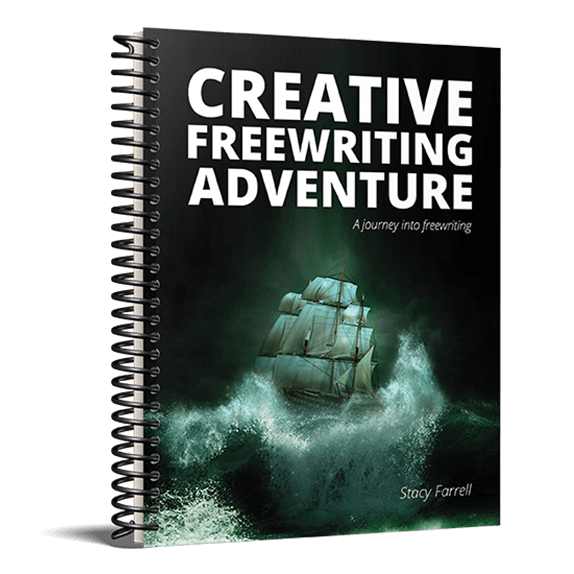
bring excitement into your student’s writing – no prep required!
About the author.
Jordan Mitchell
- Skip to primary navigation
- Skip to main content
- Skip to primary sidebar
Teaching Expertise
- Classroom Ideas
- Teacher’s Life
- Deals & Shopping
- Privacy Policy
51 Creative Writing Activities For The Classroom: Comics, Prompts, Games, And Pretend Play
January 4, 2024 // by Milka Kariuki
Creative writing can be tough for learners of any age. From knowing where to start to establishing the vocabulary to develop their story, there are a bunch of different skills they’ll need to perfect their creative writing pieces. There are so many creative writing activities out there, but which ones are best for your kiddos? Our list of 51 creative writing activities is the perfect place to start looking if you’ve got a creative writing unit coming up! Read on and see which ones might grab your little writers’ attention!
1. Make Your Own Comic Books
We bet your kiddos just love comic books! Let them create their very own in the style of the super popular Diary of a Wimpy Kid books! Encourage your students to come up with their own plot, dialogue, and illustrations to spark their creativity. Even your most reluctant writers will love this fun activity!
Learn More: Puffin Schools
2. Mad Libs
Using Mad Libs is a super popular way to develop your little creative writers! Use these free printables to get their creative juices flowing as they try to come up with words to fill the gaps to create weird and wonderful new stories. The best thing is that you can use these printables as many times as you like as their answers will be different each time!
Learn More: Teacher Vision
3. Flash Fiction
Flash fiction is a fantastic way to get your kiddies writing creatively while keeping things short and sweet! Use the range you prompts included in this resource to challenge them to write a creative story in less than 100 words. Flash fiction is amazing because your students won’t be overwhelmed by a huge writing task and it also means that your more confident writers will need to focus on the quality of their work, not the quantity!
Learn More: TES
4. Write a Story Based on the Ending
Test your students’ creativity by providing them with writing prompts that start at the end! In backward story writing, your budding writers will need to plan and pen a story that eventually leads to the ending you give them. This idea is a fantastic way to turn your traditional creative writing lesson on its head and in many ways take the pressure off your kids, as ending their stories is often the most difficult part for them!
Learn More: Teachers Pay Teachers
5. Found Poetry
Your learners will love this fun and creative found poetry activity. You can encourage them to collect words or a group of words from a favorite story or song then write them on a piece of paper or cut them out of a printed page. The overall goal is to have them rearrange the words differently to make an interesting poem with a unique writing style or genre!
Learn More: Homeschooling Ideas
6. Picture Dictionary
A picture dictionary is a brilliant way to support every member of your younger elementary class in their creative writing. The words paired with pictures give your writers a ‘dictionary’ that they can use pretty independently, so your less confident writers or non-native English-speaking students can still access your writing lessons!
Learn More: Twinkl
7. Creative Journal Writing
Why not start a creative journal with your kiddos? Have them engage in daily journaling activities by giving them a different creative prompt each day. For instance, write a story about what would happen if dogs took over the world or what would you do if you were the security guard at a zoo and someone stole an animal? The fun is never-ending with these prompts!
Learn More: Think Written
8. Roll a Story
Roll-a-Story is one of the best ways to help any of your kids who are suffering from a bout of writer’s block! They’ll roll the dice to discover the character, setting, and problem for their story then set to work weaving their creative tale! It could be a story about a wise doctor being chased by a mysterious creature in a casino, or maybe a rich artist losing their wallet in a library. Then it’s up to your students to fill in the gaps!
Learn More: TPT
9. Pass-it-on Story Writing
There’s no telling quite where this fun writing game will end up! Start by writing the first sentence of a story on a piece of paper then pass it around your class, having your kids come up with a sentence that continues the story. The paper is then passed around the whole class until every student has contributed. Finally, once it makes its way back to you, read out your collaborative story to the whole class!
Learn More: Minds In Bloom
10. Picture Writing Prompts
Creative writing prompts activities test not only your little ones’ imaginations but also their ability to craft a story and dialogue from that. Display an intriguing picture prompt for your class and have a discussion about it, recording their ideas. You could discuss what the person or animal in the picture is doing or what they’re thinking, where they think the picture was taken, and much more. They can use your collective notes to inspire their story!
Learn More: Pandora Post
11. What’s the Question?
What’s the Question is a simple, yet super engaging game that requires your young learners to think creatively. Spark their creativity by writing an answer on the whiteboard such as “the moon would explode,” and task your kiddos with coming up with a question to match it. There’ll be lots of laughs as everyone shares what they came up with!
Learn More: That Afterschool Life
12. Creative Writing Printables
This website is absolutely full of quick and fun graphics for children that’ll encourage their creative writing! The cute graphics and simple directions make it an easy bellringer activity for your writing class. Just print out some of these cool sheets and let your students get creative as they write thank-you notes to helpful heroes or finish little cartoon comics!
Learn More: Jarrett Lerner
13. Paint Chip Poetry
Nothing says creative writing quite like figurative language! Grab some of these free paint swatches from your local home improvement store and have your students create metaphors about their chosen color! We love this low-prep activity as once your kids have finished their poems, they’re a ready-made multi-colored display that’ll brighten the walls of your classroom!
Learn More: Fabulous In Fifth
14. Story Storm Activities
Once again, these Jarrett Lerner activities do not disappoint! Your students will have a blast pretending they are the principal for a day and they’ll get to create their very own rules for the school. Not only will this be an engaging writing exercise that we’re sure they’ll love getting creative with, but it also challenges children to think about why rules in school are important.
Learn More: Tara Lazar
15. Story Bag
Story bags are a fantastic way to destroy any kind of writer’s block! Grab an assortment of random objects from your home or classroom and pop them into the story bag. Next, gather your students around and pull out all the objects in the bag. Can they then write a story connecting all the items? Be sure to leave time to let them share their stories at the end of the lesson!
Learn More: Life Hack
16. Change the Ending
An easy way to ease your kiddos into the writing process is by having them rewrite part of a story. Grab their favorite read-aloud, and challenge them to come up with a new ending! They’ll need to finish the story in a way that makes sense, but aside from that, they can be as creative as they like! Your reluctant readers will like this one as much of the work on setting and characters has already been done!
Learn More: Make Beliefs Comix
17. Plot Twist Writing Prompts
BUT WAIT – there’s a twist…This fun writing practice is perfect for older middle or high school but could also be simplified for younger students. Write these twist prompts on notecards and have your kids draw one each before letting them go off and write a story around their chosen twist! They’ll be eager to share their finished work with classmates at the end. After all, who doesn’t love a good plot twist?
Learn More: Pinterest
18. Craft Box Craft
Every kid loves the book The Day the Crayons Quit for its creative narrative about this familiar box of coloring supplies! This extension activity rolls art and creative writing into one! Your students will have fun coming up with dialogue for each of the different crayons and you could even make it into a fun display for your classroom walls!
Learn More: Buggy And Buddy
19. Dialogue Pictures
Personalizing writing activities always makes it more engaging for kids! Print out a picture of yourself with a blank speech bubble, and model how to add in some dialogue. Then, let your kiddos practice speech bubbling with a photo of themselves, a pet, or a favorite celebrity, and have them come up with some interesting things for each of their subjects to say!
Learn More: SSS Teaching
20. Figurative Language Tasting
Your students will be creative writers in no time after practicing their figurative language with food tasting! Not only do tasty treats make this activity incredibly fun, but it also brings the writing process of metaphors and hyperbole to life. Just give each of your kids a few pieces of candy or snacks, and have them practice writing figures of speech relating to each one! They’ll have the words on the tip of their tongue- literally!
Learn More: It’s Lit Teaching
21. Explode the Moment
One of my favorite writing concepts as a teacher is ‘exploding the moment’. This method is perfect for showing your kiddies that even the smallest moment can be turned into an imaginative, descriptive story! Start by having them brainstorm some ideas and expand on tiny memories like losing a tooth, getting a pet, or making a winning goal in a soccer game!
Learn More: Raise The Bar Reading
22. Round-Robin Storytelling
Round-robin storytelling is the perfect collaborative creative writing activity! This one can be done verbally or in writing, and it challenges your class to build a story using a given set of words. They’ll have a fun and challenging time figuring out how to incorporate each piece into one cohesive story.
Learn More: Random Acts Of Kindness
23. Acrostic Poems
Acrostic poetry is one of the least intimidating creative writing exercises as there are no rules other than starting each line with the letter from a word. Challenge your kiddies to use each letter in their name to write lines of poetry about themselves, or they could choose to write about their favorite food or animal!
Learn More: Surfin’ Through Second
24. Sentence Sticks
This exercise requires minimal prep and can be used in so many different ways. All you’ll need are some craft sticks in which you will write sentences with blanks and word banks. Your young writers can then pull a stick and fill in the blanks to practice creative thinking! Task them with a different goal each time; can they make the sentence silly or sad for example?
Learn More: Liz’s Early Learning Spot
25. Conversation Prompts
These fun prompts require your kids to think creatively and answer a range of interesting questions. They’ll be excited to write stories about waking up with a mermaid tail or describe what is in a mystery package delivered to their doorstep! These creative prompts are perfect for bellringers or transitions throughout the school day!
Learn More: Twitter
26. Pretend Play Writing
Do you remember playing with fake money and fake food when you were younger? This idea takes it a step further by incorporating some writing practice! All you’ll have to do is print the templates for dollars, shopping lists, and recipes then let your little learners have fun with these play-pretend writing ideas!
Learn More: Prekinders
27. Question Cubes
Your class will be on a roll with these amazing question cubes! Whether the cubes are used for responding to a story, brainstorming the plot of a story, or practicing speech and listening, they are an easy, affordable tool for your little readers and writers! You can snag some foam dice at the dollar store and hot glue questions on each side to spark some creative writing ideas for your class.
Learn More: A Love 4 Teaching
28. Balderdash
Not only is Balderdash an addicting board game, but it can even be used in the classroom! Your little learners will have a blast as they create made-up, imaginative definitions for words, important people, and dates. Whoever guesses the real answer out of the mix wins the points!
Learn More: EB Academics
29. Two Sentence Horror Story
This creative writing exercise is best for older students and would be a great one to try out around Halloween! You’ll be challenging your learners to write a story that runs chills up their readers’ spines, but there’s a twist…the story can only be two sentences long! Your kiddos will love writing and sharing their writing to see who can come up with the spookiest short story!
30. Telephone Pictionary
Another game that your kids will be begging to play over and over again is telephone pictionary! The first player will write down a random phrase, and the next person must draw their interpretation of the phrase. The third player will write what they think the picture is and so on!
Learn More: Imagine Forest
31. Consequences
You need at least two players for this fun creative writing game. Each pair or group of kids will start by having one person write a random phrase and conceal it by folding the paper. Then, they pass it to the next student to fill in the blank using the prompt. Once all the blanks are filled in, let them unfold the paper and get ready to reveal some seriously silly stories!
32. Story Wands
Story wands are a fun way to have your kids respond to stories and study what makes something their favorite. Responding to what they’re reading is a super helpful exercise in preparing them for creative writing as it allows your students to connect to their favorite stories. By figuring out what elements make stories great, this is sure to help them in their own creative writing assignments!
Learn More: Little Lifelong Learners
33. The Best Part of Me
Probably my favorite creative writing activity, this one is infused with social-emotional learning and self-esteem building! Let your students get to choose their favorite physical characteristics about themselves; whether it be their eyes, hands, feet, etc. Then, they take a picture to attach to their written reasoning! Make sure to boost the creative element of this writing task by encouraging your learners to use a bunch of adjectives and some figurative language!
Learn More: Sarah Gardner Teaching
34. Me From A-Z
Challenge your kiddos to get creative by coming up with 26 different words to describe themselves! Me From A-Z gives your students the opportunity to explore who they are by coming up with words describing them in some way using each letter of the alphabet. Why not let them decorate their lists and turn them into a display celebrating the uniqueness of each of your class members?
35. How to Make Hot Chocolate
How-to writing is a great way to get the creative writing wheels turning in your kiddies’ brains! They’ll have a fun time coming up with their instructions and ways to explain how to make hot chocolate! Do they have a secret recipe that’ll make the best-ever hot cocoa!? Once they’ve written their instructions, be sure to try them out and do a taste-test of their recipes!
Learn More: Teacher Mama
36. Give Yourself a Hand
Hands up if you love this idea! For this creative writing activity, have your little ones trace their hand on a piece of paper and decorate it with accessories. Then, encourage them to write a list of all the different things they do with their hands all over their tracing! This is a great warm-up to get the creative gears turning.
Learn More: Write Now Troup
37. Word Picture Poem
A word picture poem is a fantastic way to challenge your kids to write descriptive poetry about a common object! Your little poets will learn to find beauty in ordinary things and strengthen their sensory language skills and their vocabulary. For some added fun, you can even task them with writing a short story about the item as well! The results are sure to be fun to read!
Learn More: Teaching With Terhune
38. Shape Poem
Shape poems are some of the most creative poetry as they combine words and art into one! First, your young poets can choose an object to use as their muse and lightly trace an outline onto some paper. Then, they’ll write words along the outlined shape in the form of a poem that describes the object! The result is a bunch of fun and striking poems that’ll look great displayed around your classroom!
39. Crazy Hair Poetry
Here’s another one that combines writing and art! Start by guiding your kiddos in drawing a self-portrait then adding some crazy hair by blowing watercolor paints around! After the paint dries, have your kids come up with a short but creative poem describing their hair art.
Learn More: Grade School Giggles
40. Fingerprint Poetry
Nothing is more creative than getting your kiddies to let down the barriers in their mind and tap into their stream of consciousness! Show them how to pick a topic and then let their words flow straight from mind to paper in a swirling pattern. This fingerprint idea can be used for a get-to-know-you activity as well!
Learn More: Kristen Dembroski
41. Doggie Haiku Poems
Put a fun twist on classic haiku poetry! Your students will have a paw-some time writing three-line poems about dogs which they can then illustrate afterwards! Before starting the activity, you can use Dogku by Andrew Clements as a read-aloud to get your class hooked on this idea!
Learn More: Teaching Fourth
42. Fractured Fairy Tale
Ever wondered if the Big Bad Wolf was framed? Or if Sleeping Beauty was actually a snorer? Your writers in training will have a fun time taking a classic fairytale and putting their own spin on it! Following five simple steps, your kids will be funky fairytale authors in no time!
43. Letter Writing
These creative letter-writing prompts are sure to boost your kiddies’ imaginative writing skills! Whether writing to a pen pal or a favorite celebrity, letter writing is a great way to practice handwriting, word flow, descriptive language, and communicating all rolled into one! Have your writers grab their pencils and let the creativity flow as they write fun response letters to these prompts!
44. Hersey’s Kisses Similes
Teach sensory language and similes by connecting this tasty treat with the sense of taste! Your students will have a lovely time brainstorming how chocolate connects to each of our senses and applying that knowledge by writing some sweet similies! What a fantastic way to teach them how to use these essential creative writing tools!
Learn More: Teacher By The Beach
45. Sensory Poetry
Another great way to teach sensory details is to have your learners write poems about their favorite foods! Task them with writing a line for each sense to describe the food! Everyone will be hungry after this creative writing lesson so it might be a good idea to have some snacks on hand!
Learn More: Mrs. Tice’s Class
46. Season Personification
Each season of weather has an array of characteristics making this the perfect activity to practice personification in creative writing! Allow your little writers to choose a season to write about as if it were a person with human characteristics. Winter is a no-brainer! It’s Elsa!
Learn More: Write Shop
47. Class Book of Character Traits
To be creative writers, your kids need to know how to create realistic characters for their stories. For this class book, you’ll start by giving each student two opposing character traits. Next, have them demonstrate these traits by illustrating two characters and displaying them through dialogue!
Learn More: Crafting Connections
48. Socialgrams
With Instagram being all the rage these days, your kiddos will have a fun time creating a ‘socialgram’ on paper! Challenge them to create a descriptive and engaging caption to go along with their “photo” in the post. Then, classmates can comment on each other’s work!
Learn More: Breezy Special Ed
49. Story Introduction Worksheets
Creative writing worksheets are a simple, minimal-prep tool to use in your creative writing units. Print out a variety of options, and have your kids practice their skills by finishing imaginative story introductions. By giving them a place to start their story, you can really take the pressure off your kids which will help ease them into the creative writing process!
Learn More: Lanternfish ESL
50. Dialogue Worksheets
Here’s another low-prep option for the last-minute planners! Pre-written dialogue can help guide the mood of the story and allow your kiddies to just focus on filling in the characters’ actions. This is also a great way to model how dialogue is spaced out and balanced in a story!
Learn More: ESL Writing Worksheets
51. Character Trait Posters
In this personalized character trait activity, your students will create a poster of themselves and label it with a bunch of different character traits. Descriptive, interesting characters are what make a story captivating, so this is a great introduction to understanding characters and their physical as well as personality traits! This is an activity that’s sure to help them build a strong foundation for their creative writing skills to build from!
Learn More: Life In First Grade
.
, , , .
, , .

29 Easy, Fun, and Effective Writing Exercises
Working out isn’t just for your cardiovascular health. You gotta keep that brain in shape too! Writing exercises will keep your imagination limber.
Table of Contents
What are writing exercises, writing exercises to try, pencils at the ready, try skillshare for free sign up for a 7 day free trial today.
- Unlimited access to every class
- Supportive online creative community
- Learn offline with Skillshare's app
Training your mind and body to respond faster and in more effective ways is an essential part of building any skill, whether that’s bodybuilding or publishing a novel. When it comes to writing, flexing your creative muscles is an important part of honing your craft and finding new ways to get everything in your head down on paper. In this guide, we’ll show you a few creative writing exercises that can help you, no matter the style of writing you do. From poetry and songwriting to essays and scripts, we’ll walk you through some go-to examples of writing exercises that will get you scribbling in no time.
Whether you’re a new or experienced writer, you might never have heard of writing exercises before. So what are they? They’re short bursts of improvisational writing, where you don’t plan anything in advance and note down what is on your mind.
You could write about something familiar or branch out into an entirely new style or genre. How you go about this is entirely up to you! The main goal is to find ways to expand the skill set that you currently have and learn to approach your work in new and exciting ways.
Creative Writing Exercises
Don’t be put off by the idea of creative writing if non-fiction is more your pace; that can be just as creative as working on a novel or short story. The purpose of creative writing exercises is to expand your imagination and to spark new ideas or thoughts, encouraging you to practice writing these before you start on your next project.
Themed writing prompts can be helpful here, breaking down your prompts into different buckets like:
Pick a category and write about it. You could choose to write about your favorite pet growing up or expand on a recent dream that you had, about what you ate for breakfast that day or the trip you’re planning to take over the holidays.
There’s an endless number of options for creative writing exercises for beginners online if you’re stuck and don’t know what to write about.
Daily Writing Exercises
Just like an Olympic athlete hits the gym every day to build their physical muscles, taking 10 or 15 minutes out of your morning or evening to write will help to quickly improve your writing. If your overall goal is to become a better writer, working on your craft should be an essential part of your day.
Not sure where to start? Morning pages, or free journaling , are great for both practicing your writing skills and expressing yourself on paper. The idea here is to spend less than 30 minutes each day writing with no agenda or thoughts in mind, with no stops or editing along the way. Aim to keep writing until your time is up, letting your stream of consciousness guide you and dictate what you want to say. We like to think of this as meditation with words, where you fully embrace whatever your mental guide is leading you to.
Daily writing exercises don’t need to be completed at a specific time. Find a quiet moment that works for you, whether that’s first thing in the morning or when you’re tucked up in bed for the night. If you prefer to type instead of handwriting, that’s not a problem unless you find yourself easily distracted. If that’s the case, put your phone out of reach and switch off the WiFi on your laptop so that you’re not tempted to scroll through social media instead!
Writing Exercises for Beginners
When you’re still trying to find your voice and passion as a writer, it can be a challenge knowing where to start when it comes to writing prompts. After all, there are so many choices and an unlimited number of directions that you could go in.
To help you with your choice paralysis, here are a few of our favorite exercises for new writers.
- Write the alphabet. No, we don’t mean simply write out the alphabet. Instead, start a 26-sentence story using the next letter in the alphabet as the opening letter until you reach the end. It’s surprisingly difficult, even at only a couple of paragraphs long!
- Pick a word from the dictionary. Like the alphabet exercise, this is where you randomly flip open a dictionary and choose a word. From there, write a single sentence. Then see what ideas that sparks and where you could go from there.
- Write a letter to past you. We all have experiences that we’d love to show our younger selves, so pick an age and write to you! What would you choose to share with yourself? What hopes and dreams did you have at that age that you could comment on now?
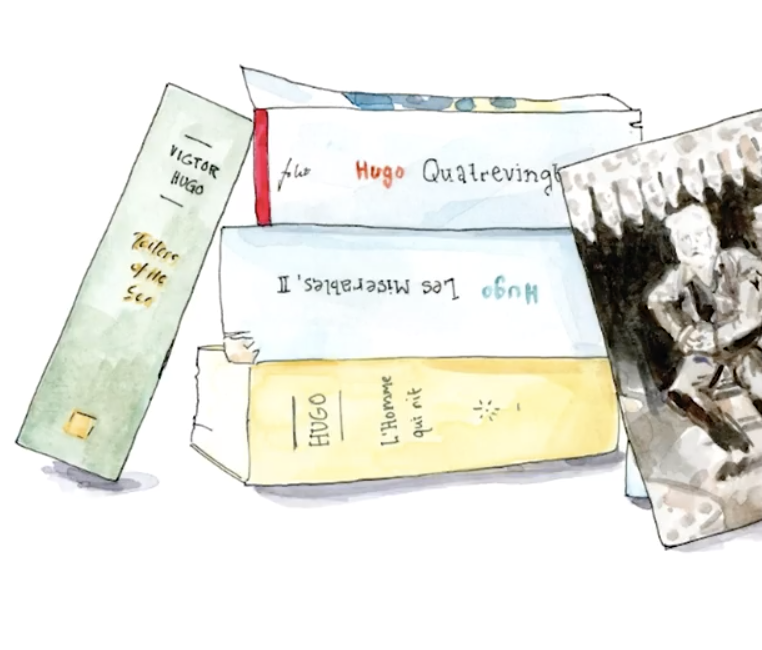
Turn Your Life Story Into a Piece of Creative Writing!
Writing Essays: Making the Personal Universal
Now that you have a better idea of what writing exercises are and how they might work to improve your skills, let’s dive deeper into some exercises that are specific to different writing forms.
But remember, just because we’re recommending the exercise for one type of writing doesn’t mean you can’t use it for another! Get creative and see what ideas you can come up with.
Songwriting Exercises
- Rewrite your favorite song. We all have a go-to song that pulls at our heartstrings or makes us want to get up and dance. Try rewriting one that you love, sticking to the same theme but switching out the lyrics. You could even rewrite it from a different perspective or point in time.
- Pick a theme and make a word association chart. Songs are similar to poems in that they usually have plenty of words that flow well together to make the listener think about something very specific. Starting with the topic that you want to write a song about , draw a spider diagram or make a list of words that you associate with that topic. From there, you can start to work out how to build those connecting points into your song.
Poetry Writing Exercises
- Pick a random object and write a haiku. Haikus may be short (17 syllables in three lines of five, seven, five) but they’re quite difficult to write well. Don’t let that put you off! Think of this like picking up the next heaviest dumbbell at the gym. Haikus will teach you how to create compelling verse and to say more with less.
- Describe a sound or smell as if it were a person. Poetry is beautiful in all its forms and so much of that comes down to describing and showing—rather than telling—the reader exactly what is happening. Practice this technique by describing a sound or smell as if it were a character of its own, focusing on more complex adjectives above simple descriptors.
Copywriting Exercises
- Write a fake ad for your favorite product. Advertising is one of marketing’s biggest moneymakers, from TV commercials to print ads in magazines. Study the type of ad that you’d like to recreate and put together a few examples of your own.
- Write a letter to a friend trying to sell them something. Copywriting is all about the art of persuasion, and who better to talk into something than one of your friends? Write a text or letter as if you were trying to get a friend to buy a product that you’ve recently fallen in love with, focusing on what makes it useful and unique.
Lyric Writing Exercises
- Write new alternating line lyrics to existing songs. If the idea of rewriting an entire song feels too overwhelming right now, try rewriting alternate lines of lyrics. The existing structure will help to guide you, but this exercise also gives you the freedom to change the direction and angle of some of the world’s most popular music.
- Put together a song with someone else. Writing exercises don’t have to be completed alone. Ask a friend to work with you, especially if you’re struggling to get started or to edit lyrics that you’ve already started. It’s always helpful to have a second perspective on a writing project!

Screenwriting Exercises
- Study the scripts of popular films. There’s no better place to learn screenwriting than from the masters themselves. You can find the full scripts of many popular movies online, including the stage directions and scene descriptions. It’s a great way to get inside the screenwriter’s head and learn how to structure your own scripts. Try reading along while watching the film too and see if you can spot where actors improvised or the script was changed during production.
Dialogue Writing Exercises
- Write dialogue like a script. Getting stuck on your dialogue tags? Work from the beginning and write your dialogue without any descriptors at all, as if you were working on a script rather than a novel or short story. This will help focus your attention on what the characters are actually saying; you can fill in the rest later.
Therapeutic Writing Exercises
- Design a plan for your future. Writing down your goals and aspirations is the perfect way to bring them into view and help you to visualize what the future could look like. They’re a great motivator for starting a new project, leveling up your skills, or putting plans into place for achieving your dreams.
- Make a gratitude list. We can all benefit from spending a little time each day being thankful for what we have and how far we’ve come. Keeping a gratitude list or journal is one of the best ways to practice mindfulness and turn around even the gloomiest of days.
Playwriting Exercises
- Watch plays online and write down the highlights. As a member of the audience, you may not notice certain stage directions taking place or props being used in particular ways. That’s the mark of a great play! But as a playwright, you need to understand how best to convey the story in every single prop, movement, and piece of dialogue. Watch some of your favorites online and take note of elements that you could bring into your own work.
- Use a prop as your starting point. Props aren’t just there to look good; they can be a crucial part of the play. As you’re writing, think about a scene where a prop is the focus or tells us something about a character or situation that we may not have noticed before. Dedicate some time to working with and around that prop before introducing other scenery and dialogue.
Fun Writing Exercises
- Explore fanfiction. If you’re a fan of a popular show, book, or film, there’s a good chance that there are thousands of others out there just like you. And with that popularity comes fanfiction. Fanfiction is a type of writing where fans explore an existing story through their own imagination, writing continuations or different directions for the characters in the story. It’s a fun way to flex your writing muscles and get back into fiction if you’ve taken a long break.
Descriptive Writing Exercises
- Rewrite a passage from a recent book. Finished a book recently that caught your attention? Try rewriting a few paragraphs but focusing on something that the author only briefly mentioned. For example, if a character was described as having a pocket watch but the rest of the original was mainly dialogue, try rewriting that scene with a focus on the watch–its history, what it means to the character, or how it fits into the story.
- Dictate what you see in your head and then write. This is a great exercise for writers with overactive imaginations! Pull up the voice recorder on your phone and close your eyes, then speak out loud about what you’re seeing in your head. Is it a person, an object, or a place? Whatever it is, keep describing what you’re seeing until you’ve run out of ideas. Then use that audio to help you write a short story all about what you saw.
Essay Writing Exercises
- Write the opposite viewpoint to your argument. Most essays, particularly academic ones, need to offer some form of opinion or argument while addressing counter-arguments and bringing those down. Try writing a short draft of your essay from the opposite perspective to the one that you’ll be arguing. This helps you to see things from a different angle. It also gives you more ideas for how to counter those thoughts when you write your essay.
Group Writing Exercises
- Edit someone else’s work. Reading and reviewing other people’s writing is one of the best ways to improve your own. You’ll notice flaws that may skip right by the writer, and you’ll likely have positive feedback for other areas that they would never notice themselves. Take the advice that you’re giving to one writer. Remember to follow that in your own work.
- Have everyone in the group write about the same object or person. A little like a painting class, by having everyone work on describing the same visual, you’ll ultimately end up with a handful of different outcomes. After all, everyone sees and understands the same things completely differently! Compare your work as a group after you’re all finished; you never know what ideas or tips you’ll pick up.
Short Story Writing Exercises
- Write flash fiction. Flash fiction is usually around 500 to 800 words long and is very similar to free journaling , except you’re writing fiction instead of non-fiction. You’ll still want to develop the core parts that you’ll find in any other story, like the plot and characters, but with such a small word count, you’ll have to get creative to fit in everything you need.
- Practice specific skills that you want to improve. Short stories don’t always give you the opportunity to use every narrative writing technique in the book, so focus on one or two skills that need some help. That could be dialogue, descriptive writing, or even first-person narration.
Memoir Writing Exercises
- Give blogging a try. Most bloggers write from a first-person perspective about their own lives and experiences. Essentially, it’s a 21st century way of creating a memoir. Remember to keep important private information to yourself. Be cautious about naming other people (pseudonyms or nicknames work well here), but this is a helpful way to start expressing yourself in this style.
- Use biographic journal prompts. As with therapeutic writing, memoir can be driven by prompts that make you think about who you are and where you’ve come from. Prompts like “I remember when...” are helpful in focusing your thoughts on a specific event or time period. They encourage you to reflect on your past in a way that will translate onto the page.
Script Writing Exercises
- Write down the dramatic question for each scene first. Whether you’re writing for the screen or the stage, every scene should have a fundamental dramatic question that the audience asks themselves as the story moves forward. Questions like “will the main character escape?” or “when will these two get together?” should be the cliffhangers that keep the audience interested.
Novel Writing Exercises
- Write a speech for every major character. Taking the advice of fantasy writer George R. R. Martin, make a list of a handful of characters without any names and with basic descriptions about who they are. Write a speech of one to two paragraphs for each so that you can narrow down distinctive voices for each character.
There are hundreds of possible writing exercises out there for you to try. We hope that these ideas will give you some inspiration the next time you want to start a new writing project.

Make Writing Your Dream Career!
Copywriting for Beginners: How to Write Web Copy That Sells Without Being Cheesy
Holly Landis
- Affiliate Program
- Partnerships
- Gift Membership Cards
- Corporate Gift Cards
- Scholarships
- Become a Teacher
- Teacher Help Center
- Your Privacy Choices
- Notice to CA Residents

The best writing exercises bring out our latent creativity. Especially if you ever feel stuck or blocked, making creative writing exercises part of your daily writing practice can be a great way to both hone your skills and explore new frontiers in your writing. Whether you’re a poet, essayist, storyteller, or genre-bending author, these free writing exercises will jumpstart your creative juices and improve your writing abilities.
24 of the Best Free Writing Exercises to Try Out Today
The best creative writing exercises will push you out of your comfort zone and get you to experiment with words. Language is your sandbox, so let’s build some sand castles with these exercises and writing prompts.
Write With Limitations
The English language is huge, complicated, and — quite frankly — chaotic. Writing with self-imposed limitations can help you create novel and inventive pieces.
What does “limitations” mean in this context? Basically, force yourself not to use certain words, descriptions, or figures of speech. Some writing exercises using limitations include the following:
- Write without using adverbs or adjectives.
- Write without using the passive voice – no “being verbs” whatsoever. (Also called “E-Prime” writing.)
- Write a story without using a common letter – just like Ernest Vincent Wright did .
- Write a poem where each line has six words.
- Write without using any pronouns.
Among exercises to improve writing skills, writing with limitations has the clearest benefits. This practice challenges your brain to think about language productively. Additionally, these limitations force you to use unconventional language – which, in turn, makes you write with lucidity, avidity, and invention.
Freewriting & Stream of Consciousness
What do you do when the words just don’t come out? How can you write better if you can’t seem to write at all? One of the best poetry exercises, as well as writing exercises in general, is to start your day by freewriting.
Freewriting , also known as “stream of consciousness writing,” involves writing your thoughts down the moment they come. There’s no filtering what you write, and no controlling what you think: topicality, style, and continuity are wholly unnecessary in the freewriting process. While the idea of freewriting seems easy, it’s much harder than you think – examining your thoughts without controlling them takes a while to master, and the impulse to control what you write isn’t easy to tame. Try these exercises to master the skill:
- Do a timed freewrite. Start with five minutes.
- Freewrite until you fill up the entirety of something – an envelope, a receipt, a postcard, etc.
- Freewrite after meditating.
- Freewrite off of the first word of today’s newspaper.
Among daily writing exercises, freewriting is one of the best writing exercises. Poets can use freewritten material as inspiration for their poetry. Prose writers can also find inspiration for future stories from the depths of their consciousnesses. Start your writing day with freewriting, and watch your creativity blossom.
Copy What You Read
Plagiarism is still off the table; however, you can learn a lot by paying attention to how other people write. This is what we call “reading like a writer.”
Reading like a writer means paying attention to the craft elements that make an excellent piece of literature work. Good writing requires different writing styles, figurative language, story structures, and/or poetry forms, as well as key word choice.
When you notice these craft elements, you can go ahead and emulate them in your own work. As a fiction writer , you might be drawn to the way Haruki Murakami weaves folklore into his stories, and decide to write a story like that yourself. Or, as a poet, you might be inspired by Terrance Hayes’ Golden Shovel form — enough so that you write a Golden Shovel yourself.
- Read a favorite poem, and write your own poem in the same poetic form.
- Blackout poetry: take another poem, cross out words you don’t want to use, circle words you do, and write a poem based on the circled words.
- Copy a single sentence from a favorite novel, and write a short-short story with it.
Among free writing exercises, this is a great way to learn from the best. The best kinds of exercises to improve writing skills involve building upon the current canon of works — as Isaac Newton said, you achieve something great by “standing on the shoulders of giants.”
Write From Different Perspectives
The conventional advice given to writers is to “write what you know.” We couldn’t disagree with that statement more. The best creative works force both the writer and the reader to consider new perspectives and learn something new; writing from a new point-of-view makes for a great exercise in expanding your creative limits.
Try these ideas as daily writing exercises:
- Write a story with the same plot, but with two or more perspectives. For example, you could write a lover’s quarrel from two different view points.
- Write from the point-of-view of a famous historical figure.
- Write a story or poem from the perspective of an object: a statue, a doll, a roomba, etc.
- Write from the perspective of a person you dislike.
While playing with perspective makes for a great fiction writing exercise , poets and essayists can do this too. Patricia Smith’s poem “Skinhead,” for example, is a persona piece written from the perspective of a white nationalist, but the poem clearly condemns the speaker’s beliefs.
Thus, perspective writing also works as a poetry exercise and an essay writing practice exercise . If you’re stuck in your own head, try writing in someone else’s!
Write Metaphor Lists
All creative writers need figurative language. While metaphors, similes, and synecdoches are more prominent in poetry , prose writers need the power of metaphor to truly engross their reader. Among both exercises to improve writing skills and fun writing exercises for adults, writing metaphor lists is one of the best writing exercises out there.
A metaphor list is simple. On a notebook, create two columns. In one column, write down only concrete nouns. Things like a pillow, a tree, a cat, a cloud, and anything that can be perceived with one of the five senses.
In the other list, write down only abstract ideas. Things like love, hate, war, peace, justice, closure, and reconciliation — anything that is conceptual and cannot be directly perceived.
Now, choose a random noun and a random concept, and create a metaphor or simile with them. Delve into the metaphor and explain the comparison. For example, you might say “Love is like a pillow — it can comfort, or it can smother.”
Once you’ve mastered the metaphor list, you can try the following ideas to challenge yourself:
- Create a coherent poem out of your metaphor list.
- Turn your metaphor list into a short story.
- Try making lists with a different figurative language device, such as personification, pathetic fallacy, or metonymy.
Any free creative writing exercise that focuses on figurative language can aid your writing immensely, as it helps writers add insight and emotionality to their work. This is an especially great creative writing exercise for beginners as they learn the elements of style and language.
Daily Journaling
Of course, the best way to improve your creative writing skills is simply to write every day. Keeping a daily journal is a great way to exercise your writing mind. By sitting down with your personal observations and writing without an agenda or audience, a daily writing practice remains one of the best writing exercises , regardless of your genre or level of expertise.
Consider these ideas for your daily journal:
- Track your mood and emotions throughout the day. Write those emotions in metaphor — avoid commonplace adjectives and nouns.
- Write about your day from the second- or third-person.
- Journal your day in verse. Use stanzas, line breaks, and figurative language.
- Write about your day backwards.
- Write about your day using Freytag’s pyramid . Build up to a meaningful climax, even if nothing significant seemed to happen today.
Learn more about keeping a journal here:
How to Start Journaling: Practical Advice on How to Journal Daily
Writing Exercises: Have Fun with Them!
Many of these writing exercises might feel challenging at first—and that’s a good thing! You will unlock new ideas and writing strengths by struggling through these creative challenges. The main point is to have fun with them and use them to explore within your writing, without indulging too many monologues from your inner critic.
Are you looking for more exercises to improve your writing skills? Our instructors can offer prompts, illuminating lectures, one-to-one feedback, and more to help you improve your craft. Check out our upcoming creative writing courses , and let’s put these skills to practice.
Sean Glatch
Thank you for this. I’ve been stuck for months—more than that, actually, and you’d think that a pandemic stay-at-home would be the perfect time to do some writing. But no. I’m as stuck as ever. In fact, the only time I seem able to write consistently and well is when I’m taking one of your classes! I’m still saving my pennies, but these exercises will hopefully get me writing in the meantime. Thanks again!
The Real Person!
Hi Kathy, I’m glad to hear some of these tips might spark your creativity 🙂 I feel the same way, I was hoping the stay-at-home order might spark some creativity, but we shouldn’t push ourselves too hard – especially in the midst of a crisis.
The best part about writing: all you have to do is try, and you’ve already succeeded. Good luck on your writing endeavors!
Bravo….!What a great piece! Honestly I learnt a lot here!
I picked interest in poetry just a week ago after reading a beautiful piece which captivated my mind into the world of writing. I’d love to write great poems but I don’t know anything about poetry, I need a coach, a motivator and an inspiration to be able to do this. This piece really helped me but I will appreciate some more tips and help from you or anyone else willing to help, I am really fervid about this.
Hi Anthony,
Thanks for your comment! I’m so excited for you to start your journey with poetry. We have more advice for poetry writing at the articles under this link: https://writers.com/category/poetry
Additionally, you might be interested in two of our upcoming poetry courses: Poetry Workshop and How to Craft a Poem .
If you have any questions, please feel free to email us at [email protected] . Many thanks, and happy writing!
[…] 24 Best Writing Exercises to Become a Better Writer | writers.com […]
Hi, kinsey there. Thanks for giving information. it is a very informative blog and i appreciate your effort to write a blog I am also a writer and i like these type of blogs everyone takes more knowledge to check out my essay writing website
As a writer, I often struggle to break free from the chains of writer’s block, but this blog has gifted me with a map of inspiration to navigate through those creative storms. It’s like being handed a box of enchanted writing exercises
Leave a Comment Cancel Reply
Save my name, email, and website in this browser for the next time I comment.
- Bookfox Academy (All Courses)
- Write Your Best Novel
- How to Write a Splendid Sentence
- Two Weeks to Your Best Children’s Book
- Revision Genius
- The Ultimate Guide to Writing Dialogue
- Your First Bestseller
- Master Your Writing Habits
- Writing Techniques to Transform Your Fiction
- Triangle Method of Character Development
- Children’s Book Editing
- Copy Editing
- Novel Editing
- Short Story Editing
- General Books
- Children’s Books
50 Fantastic Creative Writing Exercises
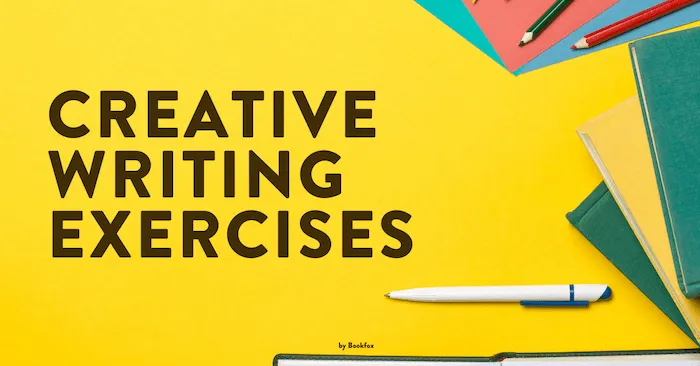
Good question.
Creative writing exercises are designed to teach a technique. They are highly specific, more specific than creative writing prompts, and much more specific than story generators.
Creative writing exercises for adults are not designed to lead the writer into crafting a full story, but are only designed to help them improve as a writer in a narrow, specific category of writing skills.
I’ve broken the exercises below into categories so you can choose what category of skill you’d like to practice. Can you guess which category in this list has the most prompts?
If you guessed characters, then you’re right. I think characters are the heart blood of every story, and that a majority of any writing prompts or writing exercises should focus on them.
But I also think any of these will help you create a narrative, and a plot, and help you generate all kinds of dialogue, whether for short stories or for novels. These writing exercises are pretty much guaranteed to improve your writing and eliminate writer’s block.
Also, if you’re a fledgling writer who needs help writing their novel, check out my comprehensive guide to novel writing.
Enjoy the five categories of writing exercises below, and happy writing!
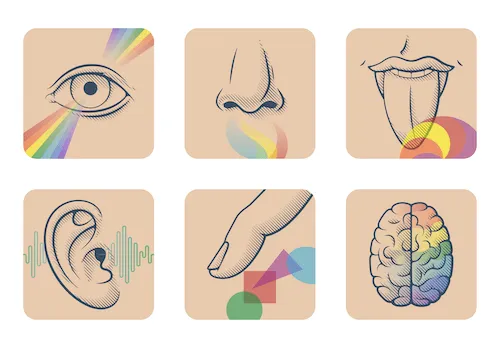
1. Think of the most deafening sound you can imagine. Describe it in great detail, and have your character hear it for the first time at the start of a story.
2. Have a man cooking for a woman on a third date, and have her describe the aromas in such loving and extended detail that she realizes that she’s in love with him.
3. Pick a line from one of your favorite songs, and identify the main emotion. Now write a character who is feeling that emotion and hears the song. Try to describe the type of music in such a beautiful way that you will make the reader yearn to hear the song as well.
4. Have a character dine at a blind restaurant, a restaurant in pitch blackness where all the servers are blind, and describe for a full paragraph how the tablecloth, their clothing, and the hand of their dining partner feels different in the darkness.
5. Select a dish representative of a national cuisine, and have a character describe it in such detail that the reader salivates and the personality of the character is revealed.

7. Describe two characters having a wordless conversation, communicating only through gestures. Try to see how long you can keep the conversation going without any words spoken, but end it with one of them saying a single word, and the other one repeating the same word.
8. In a public place from the last vacation you took, have two characters arguing, but make it clear by the end of the argument that they’re not arguing about what they’re really upset about.
9. Write a scene composed mostly of dialogue with a child talking to a stranger. Your mission is to show the child as heartbreakingly cute. At the same time, avoid sentimentality.
10. Have two character have a conversation with only a single word, creating emphasis and context so that the word communicates different things each time it is spoken. The prime example of this is in the television show “The Wire,” where Jimmy and Bunk investigate a crime scene repeating only a single expletive.
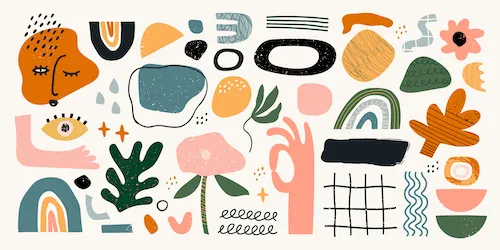
11. Pick an object that is ugly, and create a character who finds it very beautiful. Have the character describe the object in a way that convinces the reader of its beauty. Now write a second version where you convince the reader (through describing the object alone) that the character is mentally unstable.
12. Write down five emotions on slips of paper and slip them into a hat. Now go outside and find a tree. Draw one emotion from the hat, and try to describe that tree from the perspective of a character feeling that emotion. (Don’t mention the emotion in your writing — try to describe the tree so the reader could guess the emotion).
13. Describe a character’s bedroom in such a way that it tells us about a person’s greatest fears and hopes.
14. Root through your desk drawer until you find a strange object, an object that would probably not be in other people’s drawers. Have a character who is devastated to find this object, and tell the story of why this object devastates them.
15. Go to an art-based Pinterest page and find your favorite piece of art. Now imagine a living room inspired by that flavor of artwork, and show the room after a husband and wife have had the worst fight of their marriage.
16. Pick a simple object like a vase, a broom, or a light bulb, and write a scene that makes the reader cry when they see the object.
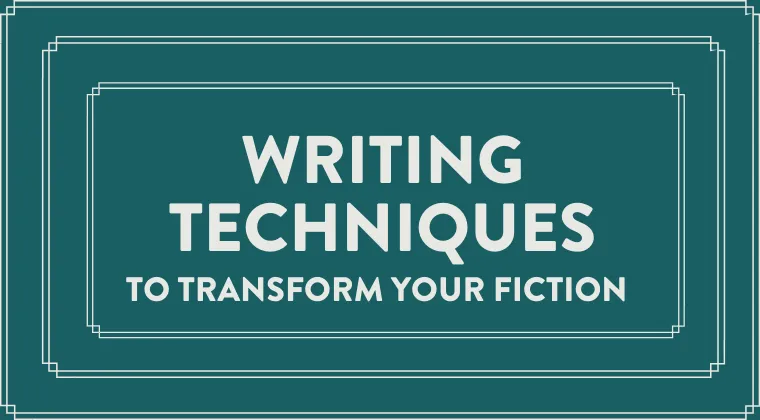
Ready to invest in your writing?
Sign up for my writing course “ Writing Techniques to Transform Your Fiction .”
- Learn the secret techniques used by great authors
- Practice writing exercises that will pump up your writing skills
Learn more by clicking the image or link above.

17. Make a list of the top five fears in your life. Write a character who is forced to confront one of those fears.
18. Write an entire page describing the exact emotions when you learned of a happy or calamitous event in your life. Now try to condense that page into a single searing sentence.
19. Think about a time in your life when you felt shame. Now write a character in a similar situation, trying to make it even more shameful.
20. Write a paragraph with a character struggle with two conflicting emotions simultaneously. For example, a character who learns of his father’s death and feels both satisfaction and pain.
21. Write a paragraph where a character starts in one emotional register, and through a process of thought, completely evolves into a different emotion.
Characters:

22. Create a minor character based upon someone you dislike. Now have your main character encounter them and feel sympathy and empathy for them despite their faults.
23. Have a kooky character tell a story inside a pre-established form: an instruction manual, traffic update, email exchange, weather report, text message.
24. Write about a character who does something they swore they would never do.
25. Have a character who has memorized something (the names of positions in the Kama Sutra, the entire book of Revelations) recite it while doing something completely at odds with what they’re reciting. For instance, bench pressing while reciting the emperors in a Chinese dynasty.
26. Write a paragraph where a character does a simple action, like turning on a light switch, and make the reader marvel at how strange and odd it truly is.
27. Have a couple fight while playing a board game. Have the fight be about something related to the board game: fighting about money, have them play monopoly. Fighting about politics, let them play chess.
28. Write about two characters angry at each other, but have both of them pretend the problems don’t exist. Instead, have them fight passive-aggressively, through small, snide comments.
29. Describe a character walking across an expanse field or lot and describe how he walks. The reader should perfectly understand his personality simply by the way you describe his walk.
30. Write a first-person POV of a character under the influence of alcohol or drugs, and try to make the prose as woozy and tipsy as the character.
31. Describe the first time that a character realizes he is not as smart as he thought.
32. Describe an hour in the life of a character who has recently lost their ability to do what they love most (a pianist who has severe arthritis; a runner who became a quadriplegic).
33. Write an argument where a husband or wife complains of a physical ailment, but their spouse refuses to believe it’s real.
34. Write a scene where a stranger stops your main character, saying that they know them, and insisting your main character is someone they are not. Describe exactly how this case of mistaken identity makes your character feel.
35. Describe a small personality trait about a person you love, and make the reader love them, too.
36. Write a personality-revealing scene with a character inside a public restroom. Do they press a thumb against the mirror to leave a subtle mark? Do they write a plea for help on the inside of the stall door? Do they brag about the size of what they’ve just dumped off?
37. Give your character an extremely unusual response to a national tragedy like a terrorist attack or natural disaster. Maybe have them be aware their response is unusual, and try to cloak it from others, or have them be completely unaware and display it without any self-consciousness.
38. Have one of your main characters come up with an idea for a comic book, and tell a close friend about the idea. What about this idea would surprise the friend, upsetting what he thought he knew about your main character? Also, what would the main character learn about himself from the comic book idea?
39. Think of an illness someone you love has suffered from. How does your character respond when someone close to them has this illness?
40. Have your main character invent an extremely offensive idea for a book, and show their personality faults through discussing it with others.
41. Have your character write down a list considering how to respond to their stalker.
42. Write a scene where a man hits on a woman, and although the woman acts repulsed and begs her friends to get him away from her, it becomes apparent that she likes the attention.
43. Write about a 20-something confronting his parents over their disapproval of his lifestyle.
44. Have your character write a funny to-do list about the steps to get a boyfriend or girlfriend.
45. Have a risk-adverse character stuck in a hostage situation with a risk-happy character.
46. For the next week, watch strangers carefully and take notes in your phone about any peculiar gestures or body language. Combine the three most interesting ones to describe a character as she goes grocery shopping.
47. Buy a package of the pills that expand into foam animals, and put a random one in a glass of warm water. Whatever it turns out to be, have that animal surprise your main character in a scene.
48. Have your character faced with a decision witness a rare, awe-inspiring event, and describe how it helps them make their decision.
49. Imagine if your character met for the first time his or her long-lost identical twin. What personality traits would they share and which ones would have changed because of their unique experiences?
50. If a character got burned by a hot pan, what type of strange reaction would they have that would reveal what they value most?
Once you’ve taken a stab at some of these exercises, I’d recommend you use them in your actual writing.
And for instruction on that, you need a guide to writing your novel .
That link will change your life and your novel. Click it now.
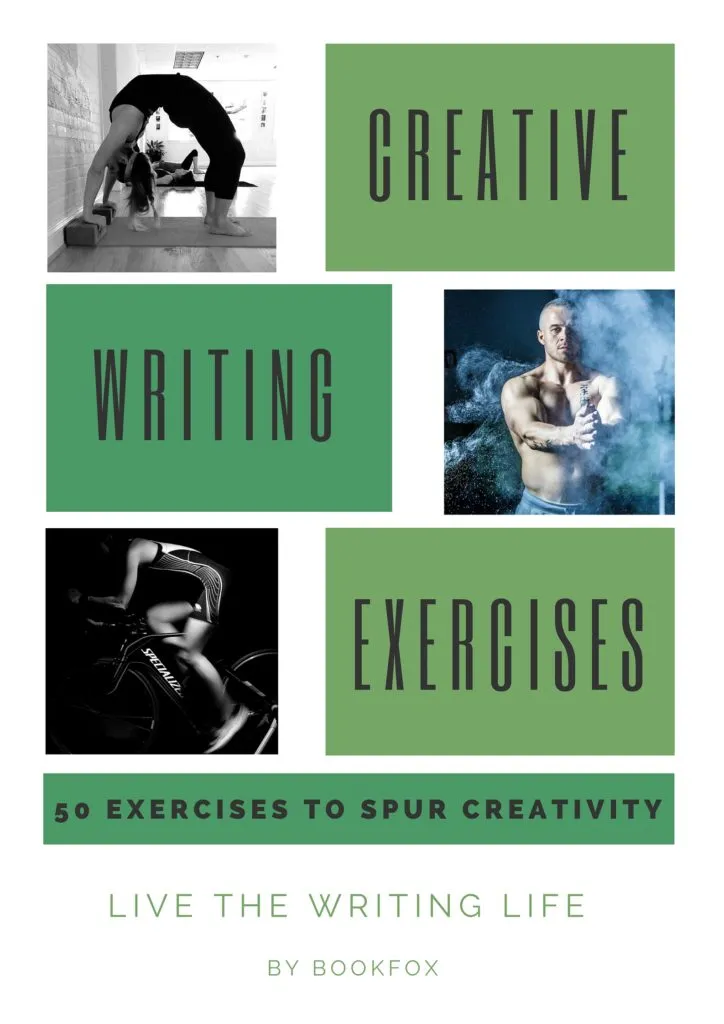
Related posts:
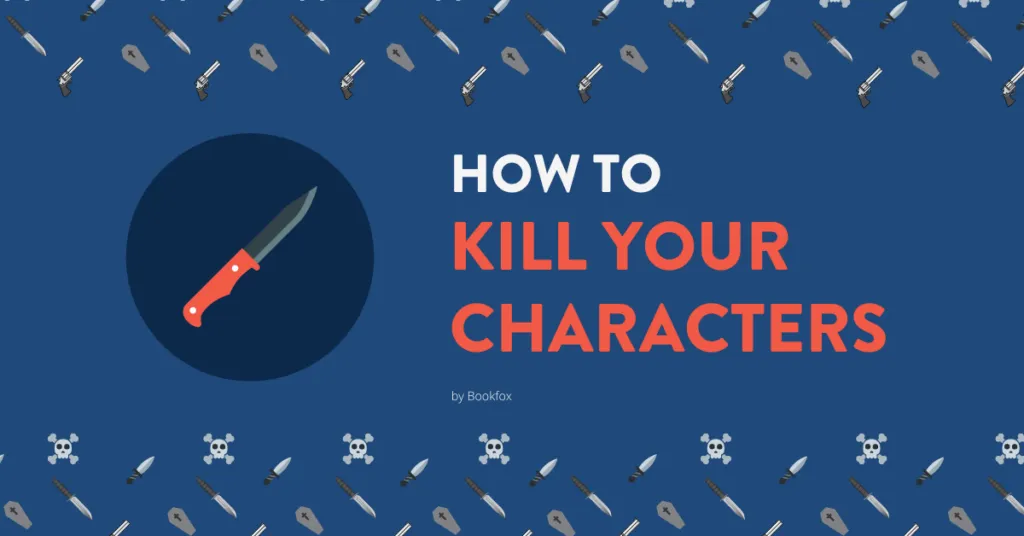
Leave a Reply Cancel reply
Your email address will not be published. Required fields are marked *
34 comments
John Fox, you have some excellent resources, and I thank you. I read your comments, then scrolled down to glance at the list of 50 exercises. The FIRST one, “loud noise’ is already in my head. My Hero is going to be side swiped in my Cozy. I was side swiped on a state highway here in Virginia a couple of weeks ago and, although the damage was minor, the sound of that big SUV “glancing” off my little car was SCARY!!! I once heard a fast-moving car REAR-END is stand-still car; that sound was something I’ll never forget. So, your exercise is very timely. THANK YOU!!!
This is a great list! Thanks!
You know what would be motivating? If we could turn these in to someone and get like a grade lol
I can really see the benefit of doing these writing exercises. (Versus using prompts) The purpose is so much clearer. Some I can imagine my response fairly easily. (Though the task of not jumping on the obvious might make it harder than I imagine at this point) Some however I would struggle with ( number 42 for example), where I have zero sympathy for the main character’s plight. Hhhmmmm. But maybe they are the very ones I should be tackling – to see if I can develop them in a way that explains their behaviour and so creates sympathy. Thank you. Much food for thought.
I’ve been thinking a lot about “how to master writing,” and this is the first time that I found an article that makes it clear the difference between prompts and exercises. I fully agree with you. These are bound to make you a better writer if you focus on doing a variation of them daily.
An excellent list – thank you very much. I run a small writing group and we’ll be trying some.
Yes, thank you. I too run a small writing group and you got me out of a slump for tomorrow’s group!
yes,thank you . It’s good for improve your writing skills.
- Pingback: Writing Exercises for Adults That Can Help You Write Better
What a lovely list! I am working on the final draft of my very first novel, and am constantly working at improving the final product. Your exercises are just what I need to kickstart my writing day. Thank you so very much.
Thank you very much When I turned50 I received my diploma from Children’s Institute in West Redding Ct I got my inspiration from being near water however now that I am in Oregon I have had a writing block thanks to your list my creative juices are flowing
I suppose I better have good punctuation, seeing this is about Writing. Thank you for this great list. I am the Chair of our small Writing group in Otorohanga and we start again last week of Feb. I have sent out a homework email, to write a A4 page of something exciting that has happened over the holiday break and they must read it out to the group with passion and excitement in their voices. That will get them out of their comfort zone!
A formidable yet inspiring list. Thank you very much for this. This is really very helpful. I am from India, and very new to writing and have started my first project, which I want to make it into a Novel. This has been very helpful and is very challenging too. Prompts look sissy when compared to this, frankly speaking. Thank you very much again.
Where can I get the answers for these?
There aren’t “answers.” You create responses to these exercises.
Thank you so much for the detailed suggestions focusing on HOW to put the WHAT into practice; really helpful & inspiring.
Just started rough drafting a story I’ve always wanted to write. Do you have any advice for someone writing their first real story? I’m having trouble starting it; I just want it to be perfect.
I consider this very helpful. Just started my journey as a creative writer, and will be coming back to this page to aid my daily writing goal.
I have always loved writing exercises and these are perfect practice for my competition. I have tried lots of different things that other websites have told me to try, but this by far is the most descriptive and helpful site that i have seen so far.
This is really a creative blog. An expert writer is an amateur who didn’t stop. I trust myself that a decent writer doesn’t actually should be advised anything but to keep at it. Keep it up!
I’ve always enjoyed writing from a little girl. Since I’ve been taking it a bit more seriously as does everybody else it seems; I’ve lost the fun and sponteneity. Until now…..this is a marvelous blog to get back the basic joy and freedom in writing. Or should that be of?:) These exercises are perfect to get the creative juices flowing again…..thank you:)
These are interesting exercises for writing.
These are fantastic! I started reading a really awesome book on creative writing but it just didn’t get any good or easy to follow exercises. So I found your site and having been having a lot of fun with these. Exactly what I was looking for, thank you!
creative and inspiring, thank you
I always wanted to have an exercise where a friend and I each wrote a random sentence and sent it to each other to write a short story from that beginning sentence, then exchange the stories for reading and/or critique. Maybe both writers start with the same sentence and see how different the stories turn out.
Thanks for these exercises. Some are really challenging. To truly tackle them I’m having to spend as long beforehand thinking “how the HECK am I going to do this?” as I do with ink on paper. Would be a great resource if other authors submitted their replies and thoughts about how they went about each exercise.
Start the conversation: submit one of yours.
I think I can use these to inspire my students.
Hi there. Thank you for posting this list- it’s great! Can I ask you to consider removing number 42 or perhaps changing it somewhat? I teach sex ed and every year am shocked by how many young people don’t understand issues around consent. Stories about woman who ‘say no but really mean yes’ are deeply unhelpful. Really appreciate your post but felt I had to ask. Thanks.
What’s wrong with the number 42?
It promulgates the belief that when a woman says no, she doesn’t mean it, potentially resulting in sexual assault.
I just make this list a part of my teaching in Creative Writing Classes. Very good list of ideas!
Thank you so much for posting this! I have used it to create a creative playwriting activity for my high school creative writing class–so much good stuff here for me to pick through and select for my kiddos that will allow them to shine and improve their knowledge of writing as a craft!
These exercises are amazing! Thank you so much for sharing 🙂

Every writer NEEDS this book.
It’s a guide to writing the pivotal moments of your novel.
Whether writing your book or revising it, this will be the most helpful book you’ll ever buy.
- Writing Activities
18+ Creative Writing Activities To Make Writing Fun
Make writing less boring with these 12 fun creative writing activities for kids.
When most children think of writing, they think of lined paper with thousands of words written on it, line by line with the occasional spacing for paragraphs. But writing doesn’t need to be that boring and gloomy. Today we bring you12 creative writing activities to make writing fun and colourful!
How to Make Writing Fun
It is important to show your kids that there’s more to writing than just homework and long essays. Writing can be fun and it doesn’t always involve writing thousands of words in a formal structure. It’s time to stop worrying about sentence structure, grammar and spelling mistakes. Instead, encourage your kids to explore their creativity and write down their thoughts as they come in any format they like. Here are 12 fun creative writing activities that will boost your child’s creativity, imagination and encourage them to write for fun.
18+ Fun Creative Writing Activities
Use story maps.
Story maps are a great way to unleash your child’s imagination. You can either create your own or print out one of these free story map templates . To create your own story map, you’ll first need a location. This could be anywhere, a planet , an island , the woods or even your hometown. Don’t worry, you don’t actually need to leave your home to enjoy this activity.
Next draw out a simple map of the location. The map must have a starting point and an endpoint. Here is an example of our treasure island story map:
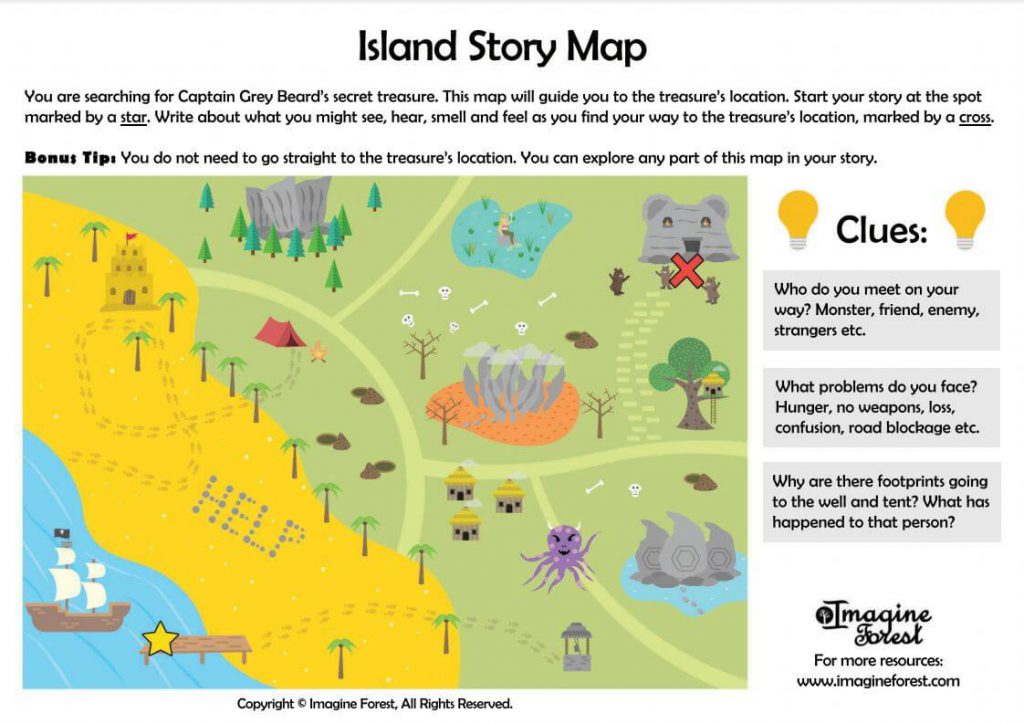
You can see that we marked the starting point with a star. And the end point with a red cross. Once this is done, you need to put loads of obstacles, challenges and interesting things on the map for your child to explore and engage with in their imagination. This could be a giant octopus monster, a lava lake, a cunning princess or even some secret symbols or lettering.
Once you have completed creating your action-packed story map (or printed out one of our free templates) – It’s time for the real adventure to begin. Give the map to your child and together you can pretend that you have landed in a whole new location.
Start from your bedroom (or your imaginary pirate ship) and make your way through the obstacles to find the secret treasure located in a mysterious cave (or the shed in your backyard). As you go through the map, think about the characters you might encounter, items you might find and even challenges you could face.
After your little adventure, your child will be inspired and ready to write about the adventure they just experienced! Go ahead and check out these free story map templates to get you started:
- Forest Story Map
- Island Story map
Create Some Paper Finger Puppets
Puppets and toys are a great way to stimulate imaginative play. In particular, creating your own paper finger puppets is a brilliant creative activity to boost your child’s imagination and make story-telling more fun. When creating your own finger puppets, your child can create any character they like. If they love football , try creating some famous football players, and if they love Harry Potter , get them to create some wizard themed characters. Whatever your child’s interest, combine it with story-telling, and make storytime extra fun.
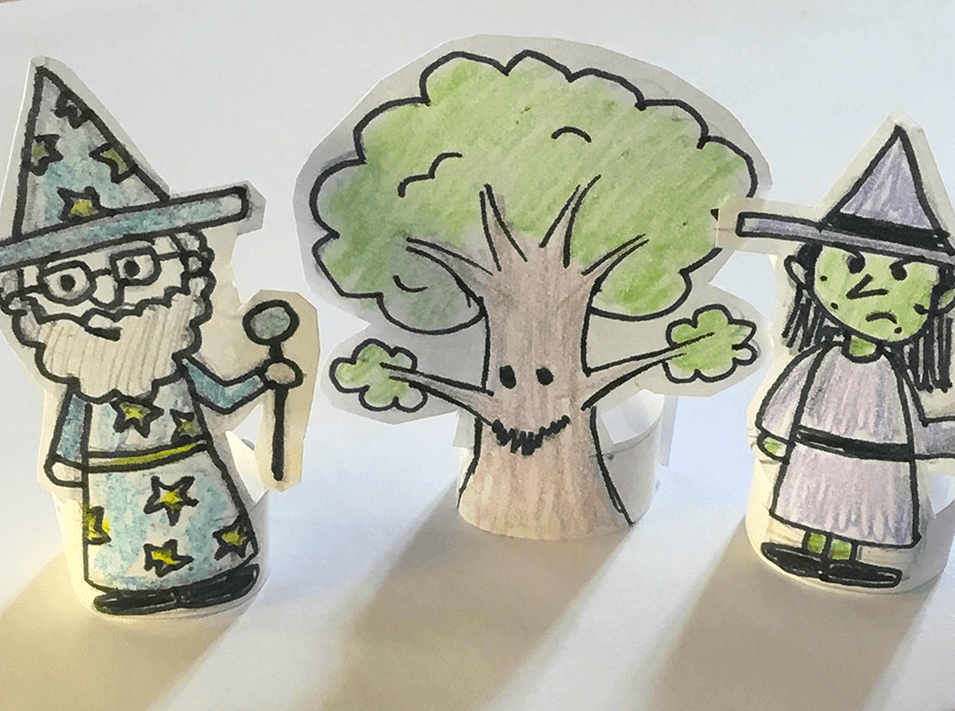
To get you started, you can download our free paper finger puppet templates by signing up to Imagine Forest:
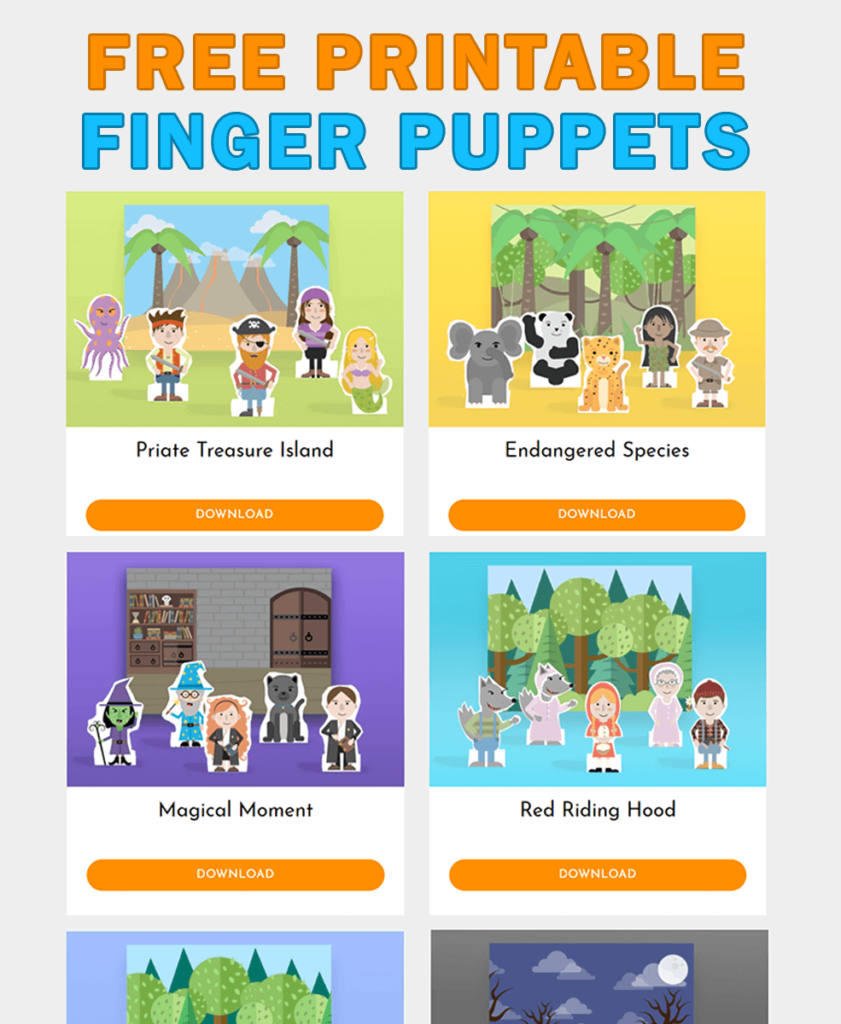
Create your own paper characters, props and background. Then let the role-playing begin!
Would You Rather Game
Kids love playing games. The Would You Rather game is a great way to boost logical thinking and communication skills. Print out our free Would You Rather game cards pack, to get a mix of funny, gross and Disney themed questions. Then get at least three players in a team to begin the game. The purpose of the game is to convince the whole team that your answer to the question is the best one and to get other players to agree with you. This game is guaranteed to get your kids laughing and thinking logically about the answers they pick.
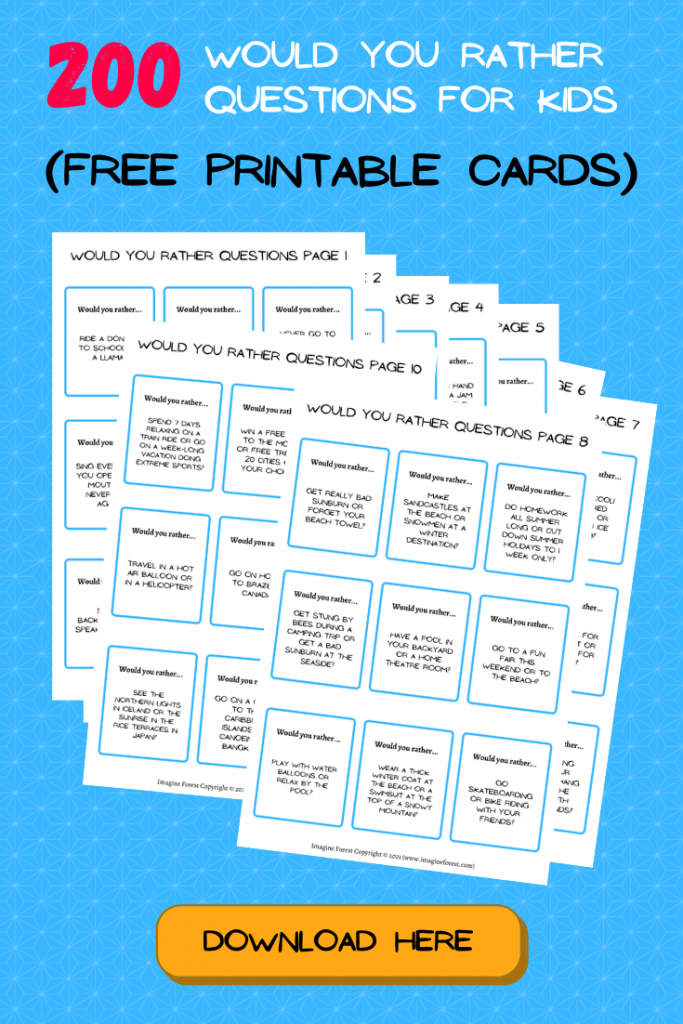
Telephone Pictionary Game
Another brilliant creative writing activity is the Telephone Pictionary Game . The basic idea behind this game is to write a story collaboratively with your team using drawings and phrases. Together as team members take turns to write/draw something down. They’ll be improving skills such as creativity, teamwork and communication skills. And when the game is over, they’ll have a really funny story to read!

Create Some Shape Poetry
Poetry is a quick and short writing activity to get kids engaged in creative writing. But writing a typical haiku or limerick can get boring over time. To add a little more excitement gets your kids to write poems in the shape of something. For example, your child could write a poem about cats , in the shape of a cat:
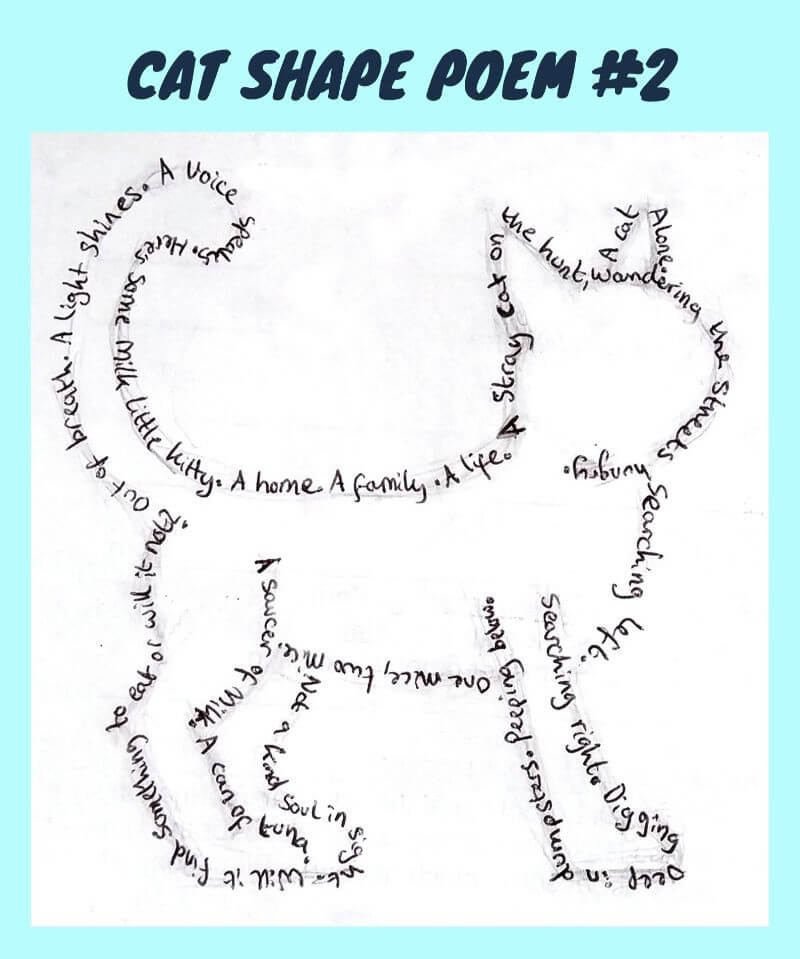
Not only are these poems great to read, but they also make wonderful pieces of artwork. For more inspirations, check out our Alice in Wonderland inspired shape poetry .
Finish The Story Game
The finish the story game is the simplest creative writing activity in our list. In a team of at least 2 players, each player takes turns completing a story. Start off with a random story starter and then each player takes turns to continue this story. Which way will the story go? No-one knows. And that’s the real beauty of this game. Let your child explore their imagination and come up with wild ideas to keep the story interesting. And by the end of the game, you’ll have a really unique and funny story to read.
Use Image Prompts
Image prompts are a great source of inspiration. And can be used in a number of ways to encourage your child to write. For instance, you can ask your child to write a quick snappy slogan for a random image or photograph. Alternatively, you could play a whole game centred around a single image, such as the Round Robin Tournament game explained in our post on storytelling games using image prompts .
Story Cubes To Inspire
Inspiration is key in making writing fun for kids. That’s where story cubes come in handy. You either buy ready-made story cubes or make your own story cubes at home. If you’re interested in making your own story cubes, check out these 9 free story cube templates for ideas. Once you have a bunch of story cubes, you can simply roll them like dice and then challenge your kids to write a story based on the images they get. For game ideas using story cubes, check out this post on how to use story cubes .
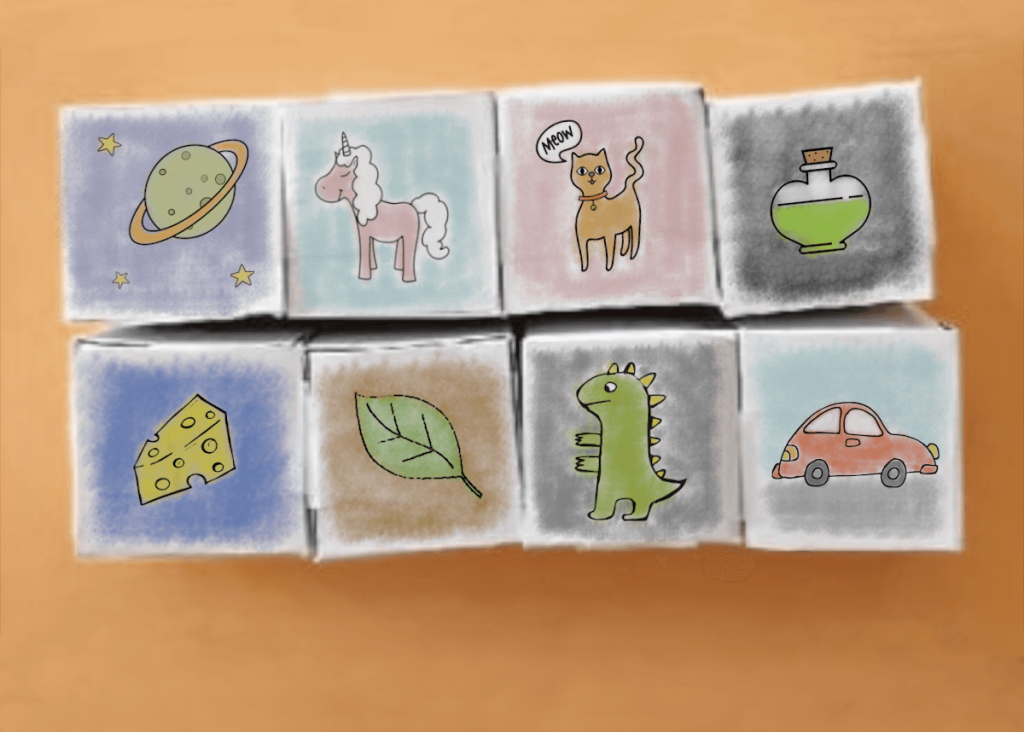
Create A Comic Strip
If your kids hate writing but love drawing, then comic strips are a great creative activity to sneak in some minor writing with huge levels of imagination. Pick a topic, any topic you like. This could be related to your child’s interest and then ask them to create a short comic strip about that topic. For example, if you child loves dinosaurs, ask them to create their own comic strip about dinosaurs. For more inspiration and ideas, check out this post on how to create your own comic strip and comic books at home.
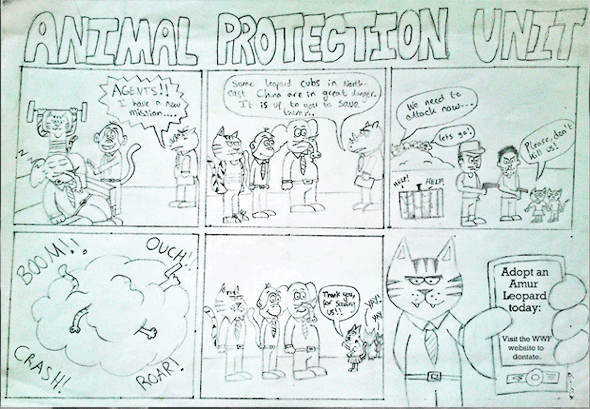
Make Your Own Pop-up Book
Another fun way to get your kids to write more is by creating your own pop-book books. Pop-up books seem really complicated to create, but in reality, they are really easy to make at home. All you need is some paper, scissors and glue. Check out this super easy tutorial on how to create your own pop-book at home for quick step-by-step instructions. Similar to comic strips, pop-up books are a great way of combining drawing with writing to get your kids writing more in a quick and fun way.
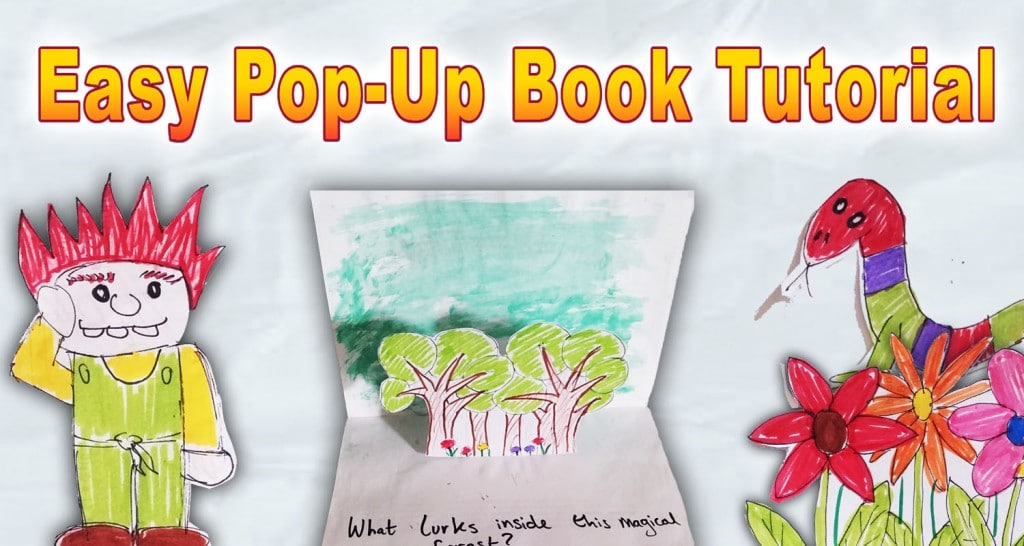
Create Mini Booklets
Turn your child’s story into a real book! You can buy blank books from Amazon or create your own mini paper book, using this easy mini notebook tutorial . With this tutorial you can create a fully customisable book, with your own cover, back page and you can even draw your own illustrations inside! This is a really fun and cute way to gets your kids writing in their spare time.
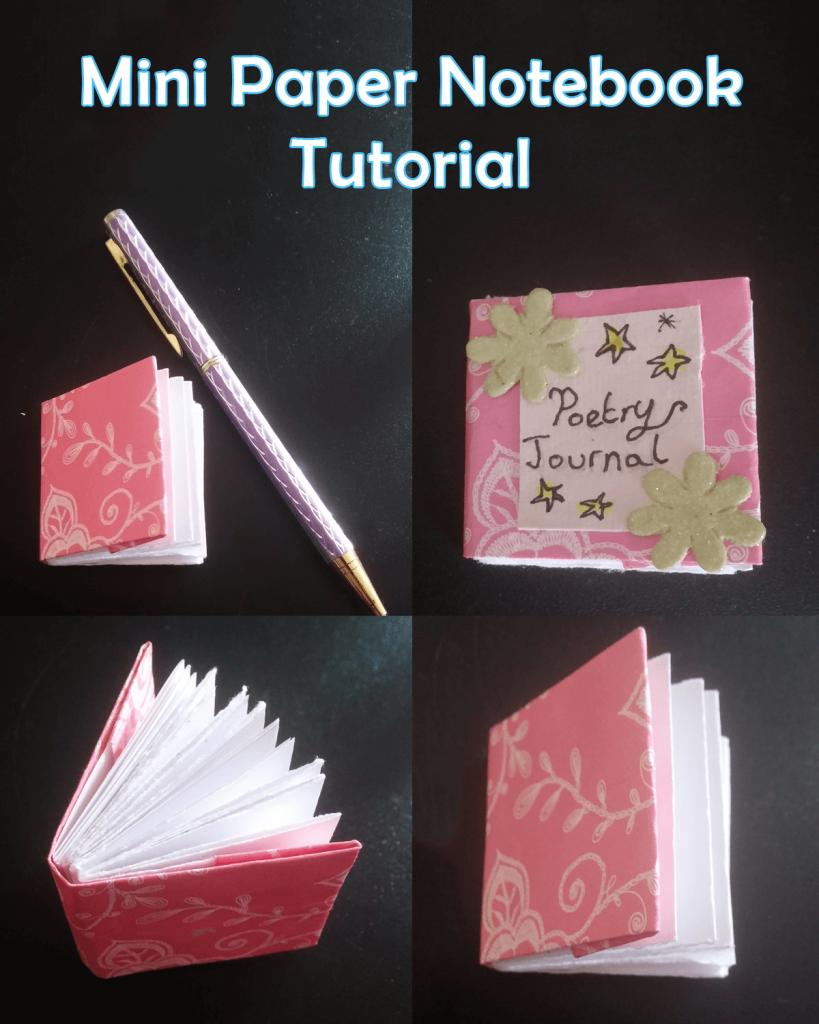
Write A Letter With a Fun Twist
Forgot ordinary boring letters! Check out our Paper craft animal envelopes to encourage your kids to write letters to their friends, family, heroes, aliens, anyone they like! Inside the child can write any message they like, such as “how were your holidays…” or “We’re having a party this weekend…” And on the outside they can create any animal or creature they like as envelopes.
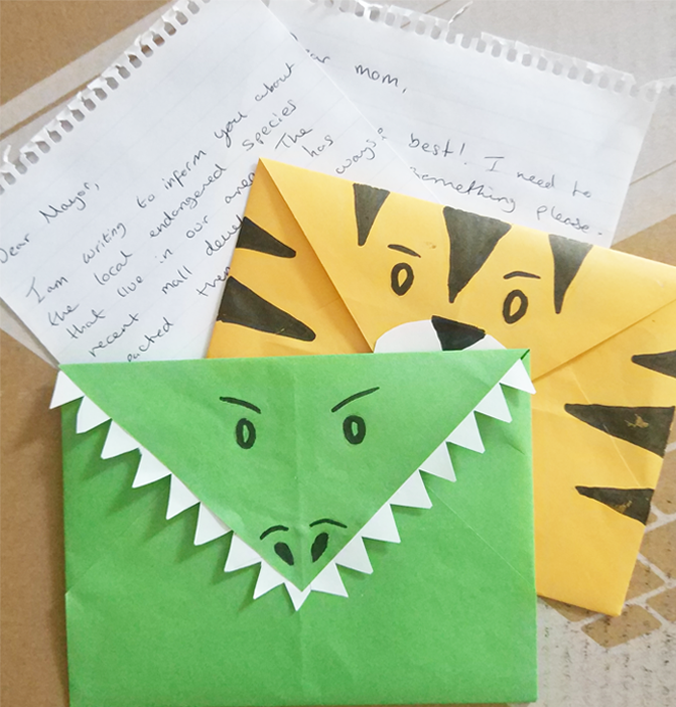
Describe a Monster
Ask your child to draw their own monster or character and describe it. – What are its strengths, and weaknesses, where does it live, what does it like doing and so on? This creative writing activity is quick, simple and full of imagination! And you could even take this a step further by creating your own monster flip books !
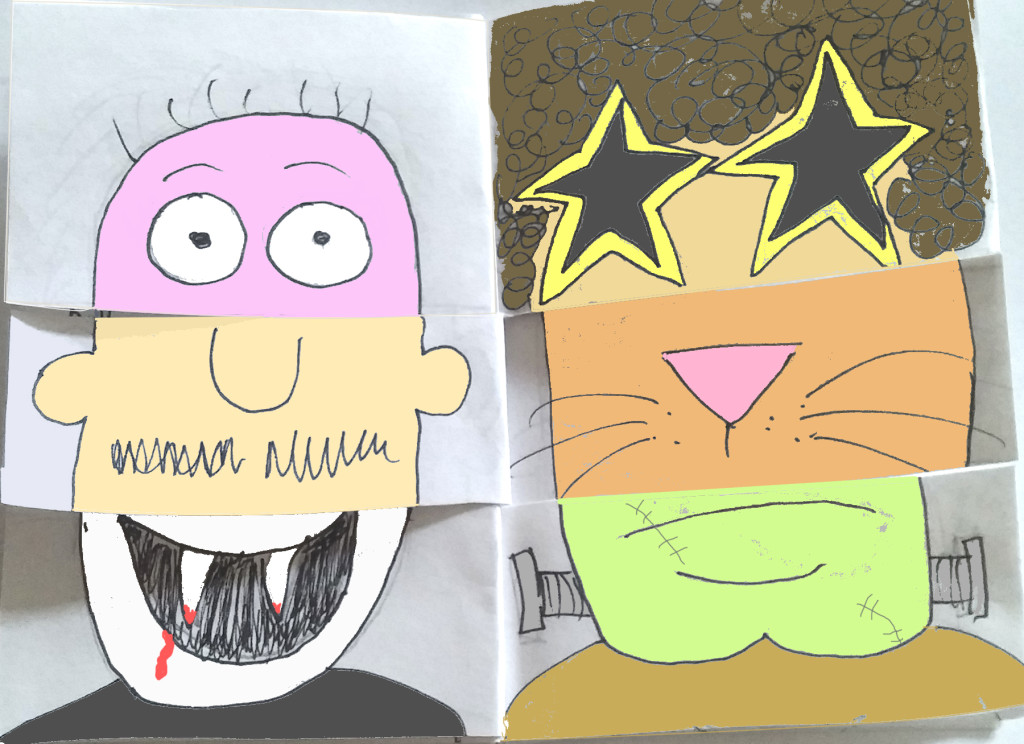
Use Story Starters
Use story starters to inspire reluctant writers. These can be simple sentences, such as “It was Timmy’s first day at school and he was excited…” and your child can continue writing the rest of the story. Or you could use photos and your child’s drawings to inspire story-writing by asking the child to describe what’s happening in this image. Take a look at this post on 60+ first-line prompts to inspire you or you could view our mega list of over 300 writing prompts for kids .
Create Your Own Greeting Cards
Get your child to create their own Christmas cards , greeting cards or get well cards to send to someone they know. They can write their own personal message inside and draw a picture on the outside. Quick activities like this are a great way to sneak in some writing with some arts and crafts.
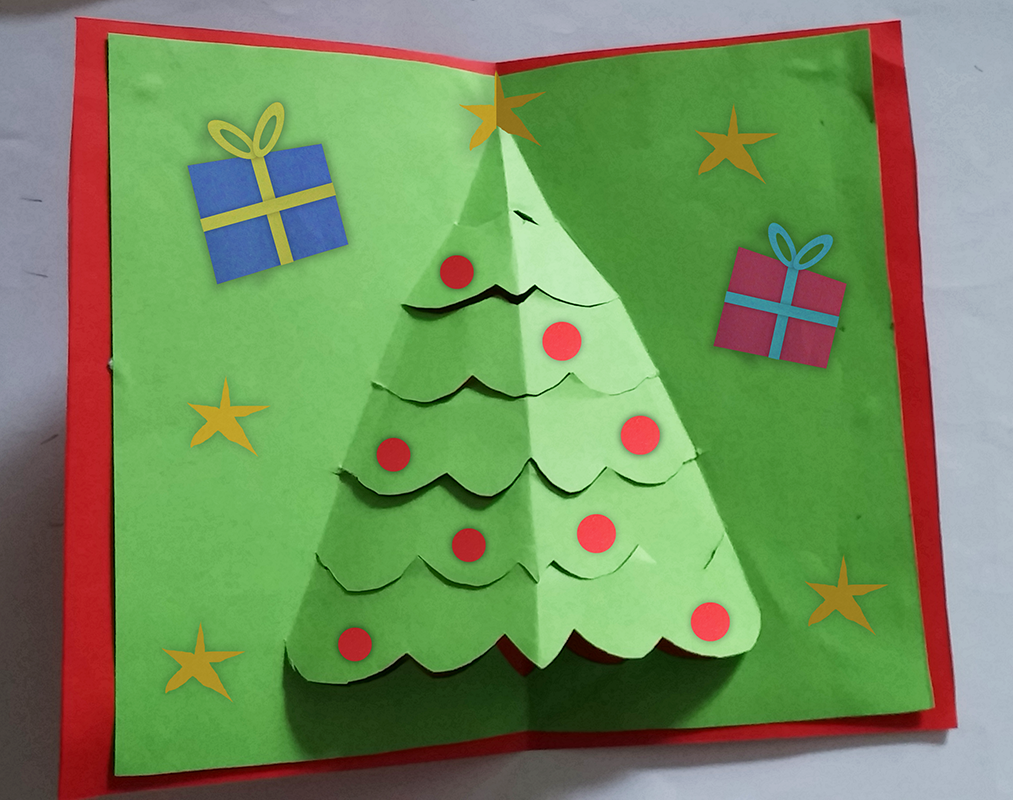
Create Your Own Newspaper
Ask your child to write their own newspaper article or create their own newspaper about the daily events that happen at home or at school. Remember the use of the 5 W’s and 1 H when writing newspaper articles. Our newspaper challenge online activity is great for creating fun newspaper articles.
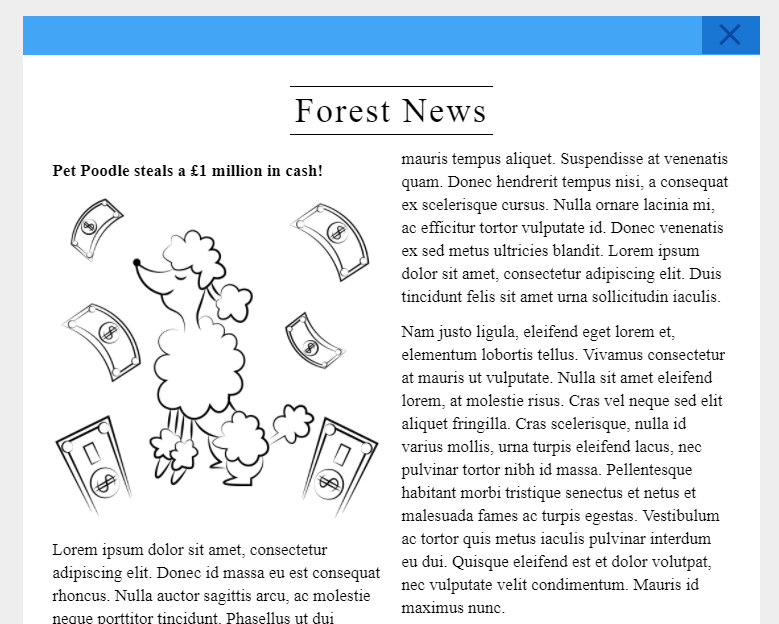
Make A Shopping List
Get the kids involved in the weekly grocery shopping! Ask them to write the shopping list with drawings. If the grocery shopping list is too boring, then get them to create a wish list of items they dream of owning or even a list of goals they want to accomplish. You can buy some really pretty shopping list pads from Amazon , which could be a great way to encourage your kids to get writing!
Re-tell some fairytales
Fairytales have been around for centuries and by now they need a modern twist. Challenge your child to update an old classic. And you could even use this free ‘Retell a fairy tale pack ’ to help you. Re-telling a fairytale is a lot easier than creating a whole new one – Simply ask your child to change one or two key elements in the story and see how it changes the entire fairytale. For example, what if Cinderella was the villain? Alternatively, you could go wacky and add a whole new character to a classic fairytale, such as Spiderman making an appearance in Jack and the Beanstalk. The possibilities really are endless!
Write Your Own Movie Script
Ask your child to write their own short movie script, they can create a cast list and give all the different characters different things to say. You can find a free script and cast list template here ! Think about the conversation between the characters, what problems would they encounter, who is the villain in this story? We also think these free finger puppets printable could be great for story-telling.

Hand-written Blogs
Ask your child to keep a simple hand-written blog about their hobbies and interests. This can be done in a journal or notebook. Ask them the following questions: What do they like doing in their spare time and why do they enjoy this. Maybe ask them to provide instructions on how someone else can also be good at this hobby. They can update their hand-written blog everyday with new tips and interesting pieces of information on their hobby.
Wanted Posters
Create a ‘Wanted’ poster for famous villains in storybooks, such as Miss Trunchbull from Matilda or Cinderella’s Stepmother. You can find a free blank template here . Alternatively try out the Most Wanted online activity on Imagine Forest, to create your own wanted posters online:
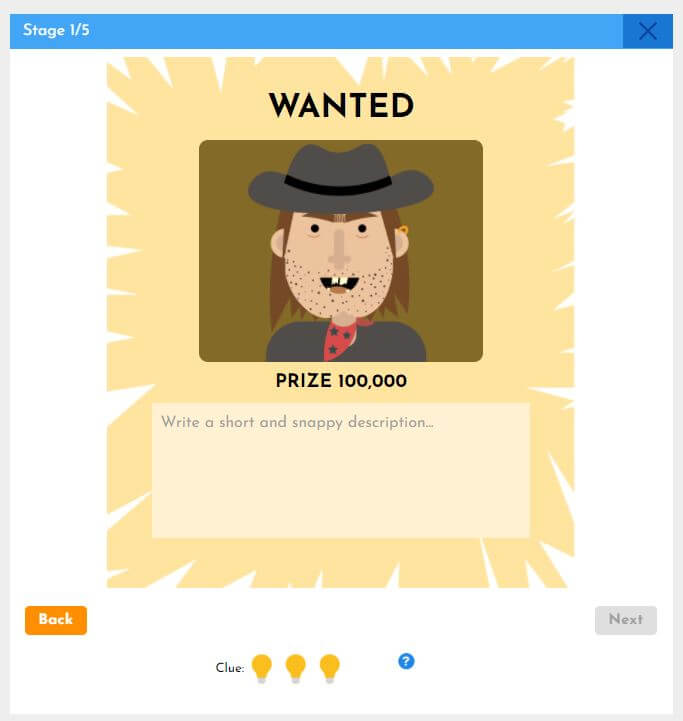
Storyboarding
Writing a whole story down can be cumbersome. That’s why storyboarding can make a really good creative writing activity. Instead of asking a child to write a whole story down, get them to think about the key events in the story and plan it out using a storyboard template . Planning their story out beforehand could even encourage your child to write a complete story down afterwards. The first step is always planning out what you are going to write, and this could give your child the confidence to keep going.
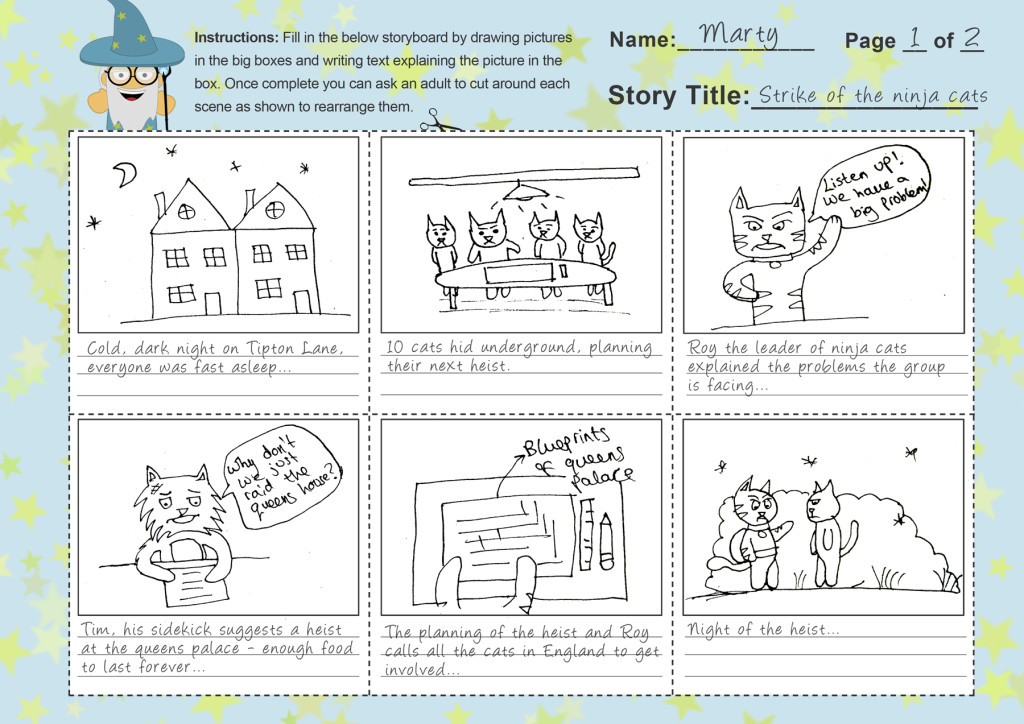
Know anymore fun writing activities for kids? Tell us your ideas below.
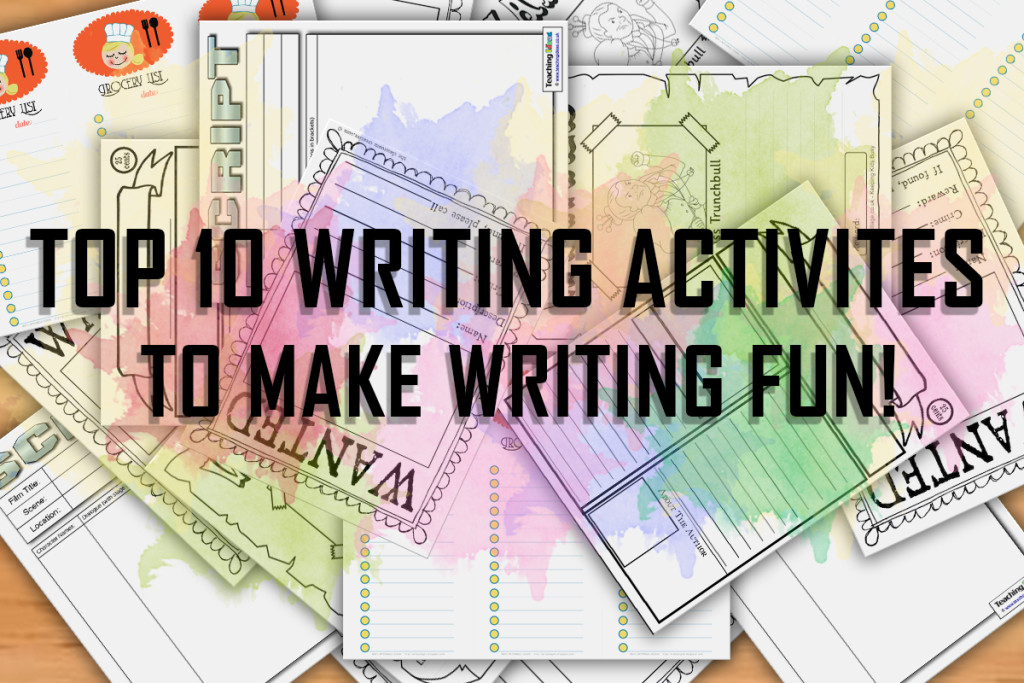
Marty the wizard is the master of Imagine Forest. When he's not reading a ton of books or writing some of his own tales, he loves to be surrounded by the magical creatures that live in Imagine Forest. While living in his tree house he has devoted his time to helping children around the world with their writing skills and creativity.
Related Posts
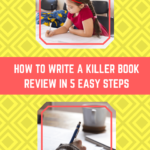
Comments loading...
- Grades 6-12
- School Leaders
Get our mega Halloween worksheets bundle! 👻
10 Creative Writing Activities That Help Students Tell Their Stories
Lower the stakes and help them get started.

“I don’t have a story. There’s nothing interesting about my life!” Sound familiar? I don’t know a teacher who hasn’t heard students say this. When we ask our students to write about themselves, they get stuck. We know how important it is for them to tell their own stories. It’s how we explore our identities and keep our histories and cultures alive. It can even be dangerous when we don’t tell our stories (check out this Ted Talk given by novelist Chimamanda Ngozi Adichie and share it with your students for more on that). Storytelling is essential for every subject, not just English Language Arts; students dive deeper and engage when they practice thinking about how their own stories intersect with historical events, civic engagement, and the real-world implications of STEM. These 10 creative writing activities can work in every subject you teach:
Here are 10 of our favorite story telling activities that inspire students:
1. write an “i am from” poem.
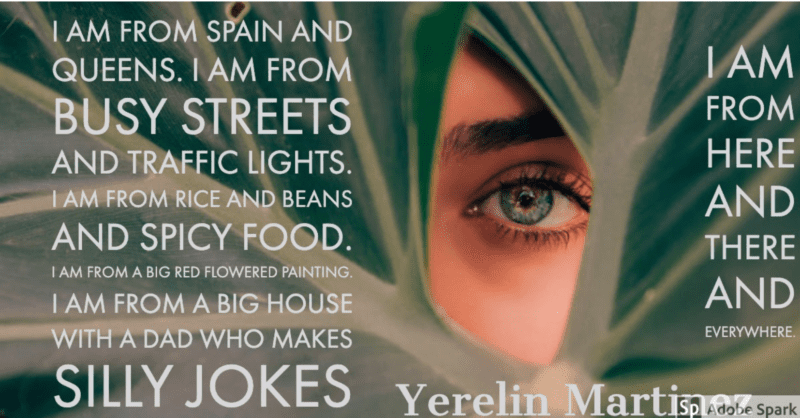
Students read the poem “I am From” by George Ella Lyon. Then, they draft a poem about their own identity in the same format Lyon used. Finally, students create a video to publish their poems. We love this one because the mentor text gives a clear structure and example that students can follow. But the end result is truly unique, just like their story.
2. Design a social media post to share an important memory
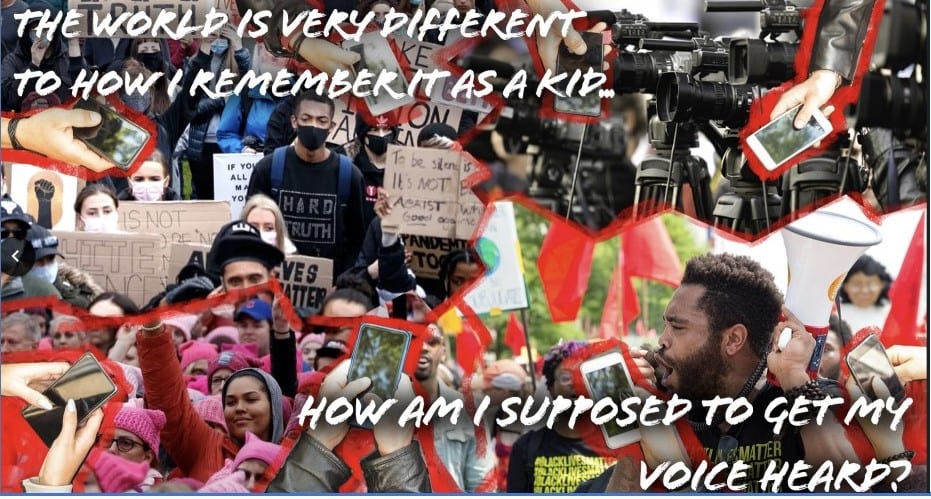
How can you use your unique perspective to tell a story? We want our students to learn that they are truly unique and have stories that only they can tell that other people want to hear or could relate to or learn from. In this activity, students watch two Pixar-in-a-Box videos on Khan Academy to learn about storytelling and perspective. Then, they identify an interesting or poignant memory and design a social media post.
3. Create an image using a line to chart an emotional journey
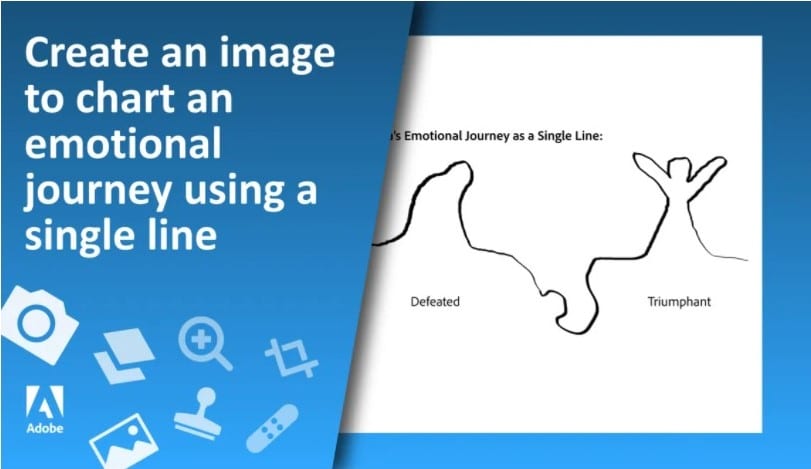
How do you show emotion using a single line? In this activity, students watch a Pixar in a Box video on Khan Academy to learn about how lines communicate character, emotion, and tension. Then they experiment with these aspects as they write their story. We love using this for pre-writing and to help students explore their story arc. Also, for students who love to draw or learn visually, this can help them get started telling their story and show them that there are many different ways to tell a story.
4. Tell the story behind your name

Sharing the story behind our name is a way to tell a story about ourselves, our culture, and our family history. And if there isn’t a story behind it, we can talk about how we feel about it and describe what it sounds like. In this activity, students use video to introduce themselves to their classmates by discussing the origin of their name. This project asks students to connect their names (and identities) to their personal and familial histories and to larger historical forces. If you’re looking for a mentor text that pairs well with this one, try “My Name” by Sandra Cisneros .
5. Develop a visual character sketch
Give students the time to create a character sketch of themselves. This will help them see how they fit into their story. In this lesson, students create a visual character sketch. They’ll treat themselves like a character and learn to see themselves objectively.
6. Create a webpage to outline the story of your movie

Building a story spine is a great way to show students how to put the parts of their story in an order that makes sense. It’s an exercise in making choices about structure. We like this activity because it gives students a chance to see different examples of structure in storytelling. Then, they consider the question: how can you use structure to set your story up for success? Finally, they design and illustrate an outline for their story.
7. Respond to a variety of writing prompts
Sometimes our students get stuck because they aren’t inspired or need a different entry point into telling their story. Give them a lot of writing prompts that they can choose from. Pass out paper and pencils. Set a timer for fifteen minutes. Then, write 3-4 writing prompts on the board. Encourage students to free-write and not worry about whether their ideas are good or right. Some of our favorite prompts to encourage students to tell their story are:
- I don’t know why I remember…
- What’s your favorite place and why?
- What objects tell the story of your life?
- What might surprise someone to learn about you?
8. Create a self-portrait exploring identity and self-expression

Part of what makes writing your own story so difficult for students is that they are just building their identity. In this activity, students explore how they and others define their identity. What role does identity play in determining how they are perceived and treated by others? What remains hidden and what is shown publicly?
9. Film a video to share an important story from your life

Encourage students to think about how to tell the story of a day they faced their fears. Students consider the question: How can you use different shot types to tell your story? They watch a video from Pixar in a Box on Khan Academy to learn about different camera shots and their use in storytelling. Then, they use Adobe Spark Post or Photoshop and choose three moments from their story to make into shots. We love using this to help students think about pace and perspective. Sometimes what we leave out of our story is just as important as what we include.
10. Try wild writing
Laurie Powers created a process where you read a poem and then select two lines from it. Students start their own writing with one of those lines. Anytime that they get stuck, they repeat their jump-off line again. This is a standalone activity or a daily writing warm-up, and it works with any poem. We love how it lowers the stakes. Can’t think of anything to write? Repeat the jump-off line and start again. Here are some of our favorite jump-off lines:
- The truth is…
- Some people say…
- Here’s what I forgot to tell you…
- Some questions have no answers…
- Here’s what I’m afraid to write about…
You Might Also Like

19 Memes Capturing the Reality of Teaching Middle School
Because teaching middle school can get ... interesting. Continue Reading
Copyright © 2024. All rights reserved. 5335 Gate Parkway, Jacksonville, FL 32256
22 Writing Activities To Help Kids Hone Their Writing Skills
Written by Maria Kampen
- Prodigy English

- Fun writing activities
- Creative writing activities
- Academic writing activities
- At-home writing activities
- Daily writing activities
- Simple writing prompts for kids
- How writing activities can bring reluctant writers out of their shells
- Try some other educational activities
When kids start writing, they’re unlocking a whole new world of imagination to explore. It’s a great way for them to be creative, express themselves and practice key reading and writing skills.
But as most kids — and adults — will tell you, writing is hard! It can be intimidating to put pen to paper for the first time, and sometimes the challenge of a blank page seems like too much to overcome.
Writing shouldn’t be scary for kids. These 22 fun writing activities can help them:
- Use their imagination
- Think up new stories and ideas
- Share their writing with friends and family
Use them in your classroom or at home to get kids excited about writing!

Writing is supposed to be fun! Use these activities to help kids stretch their imagination and record their thoughts on paper in a fun, low-stress environment.
1. Try online ELA games like Prodigy English
Great for: Grades 1 to 6
Online games are a great way to engage students in the learning process — and Prodigy English is bringing the power of game-based learning to language and reading skill practice!
As students build and create, they’re always practicing key reading and language skills that help them write clearly and effectively. Every correct answer gives players more energy to gather resources, complete daily tasks and earn Wishcoins.
Plus, you can send questions about the topics you want them to practice and collect insights about their learning.
2. Poetry scavenger hunt
Great for: Middle and high school students
Words are all around us, so encourage your students to take inspiration from the real-life writing they see every day. Have students collect printed words and phrases from the world around them, including:
- Magazine ads
- Graphic novels
- Newspaper headlines
- Social media captions
Students can collect and arrange their words on a piece of paper to make a unique piece of poetry. Encourage them to find a key idea and expand on it in creative ways, then have students share their work with the class.
3. Create your own comic strip
Great for: Grades 4 to 10
Students learn in all sorts of ways. For visual learners, creating a comic strip to accompany their story can help them express themselves in a visual medium.
Give students a set number of panels and challenge them to come up with a quick story ��— just a few sentences. Then, they can illustrate their scene in the style of comic books.
Remind students the point isn’t to be the best artist — it’s to write a story that’s short and exciting.
4. Create your own Madlib
Great for: Elementary and middle school students
Give students vocabulary practice and help them write a silly story at the same time!
Fill a sheet with the outline of the story, then remove key words like:
For younger students, add a word bank to get them started. As students fill in words, they’ll craft a unique story filled with unexpected twists and turns.

Once students start getting in the habit of writing, these creative writing activities can pull new ideas out of their heads and encourage them to experiment with different genres.
5. Acrostics
Great for: Grades 3 to 8
Acrostic poems are a great way to introduce your students to poetry! Start with a meaningful word or name and use it as a theme for the poem.
Writing the word vertically, students can go down the letters and write a short word or phrase that starts with each letter. Acrostic poems help students write within a structure and theme, so it’s easier for them to get started.
6. A letter to your future self
Great for: Middle school and high school
Where do your students see themselves in a year? Five years? Ten years?
A letter to their future selves is a great way for students to explore their own story, and brainstorm what they want to achieve. Not only can students practice their letter-writing skills, they can use their imaginations to develop a growth mindset .
For extra nostalgia, store the letters for students and mail them out once the right amount of time has passed.
7. Write a “Choose your own adventure” story
Great for: Grades 5 and up
Whether it’s a fairy tale, detective story or drama, chances are you’ve had a student tell you they don’t know how their story is supposed to end.
A “Choose-your-own-adventure” story lets students brainstorm different storylines and endings. Once they’re done, encourage them to share their stories with the class so their peers can go on the adventure too.
8. Write a fake advertisement
Great for: Grades 6 and up
Good writing doesn’t just happen in books — it’s all around us!
Whether students are writing advertisements on their own or as part of a project-based learning assignment , this activity helps them build key media literacy skills and practice their snappy storytelling.
Have students make up a new product and advertisement, or encourage them to re-imagine an ad for something they love. It’s also a great way to bring media literacy and interdisciplinary learning to your classroom.
9. Make a story map
Great for: Grades 2 to 8
Not every student is going to be comfortable putting pen to paper right away. Story maps can help students brainstorm details like plot, characters and setting in a way that makes sense for visual learners.
Have students use charts to set out the beginning, middle and end of their stories. Mind maps can also help them plot out details about their characters or setting.
Encourage students to present their story map as a finished product or use it to start writing!
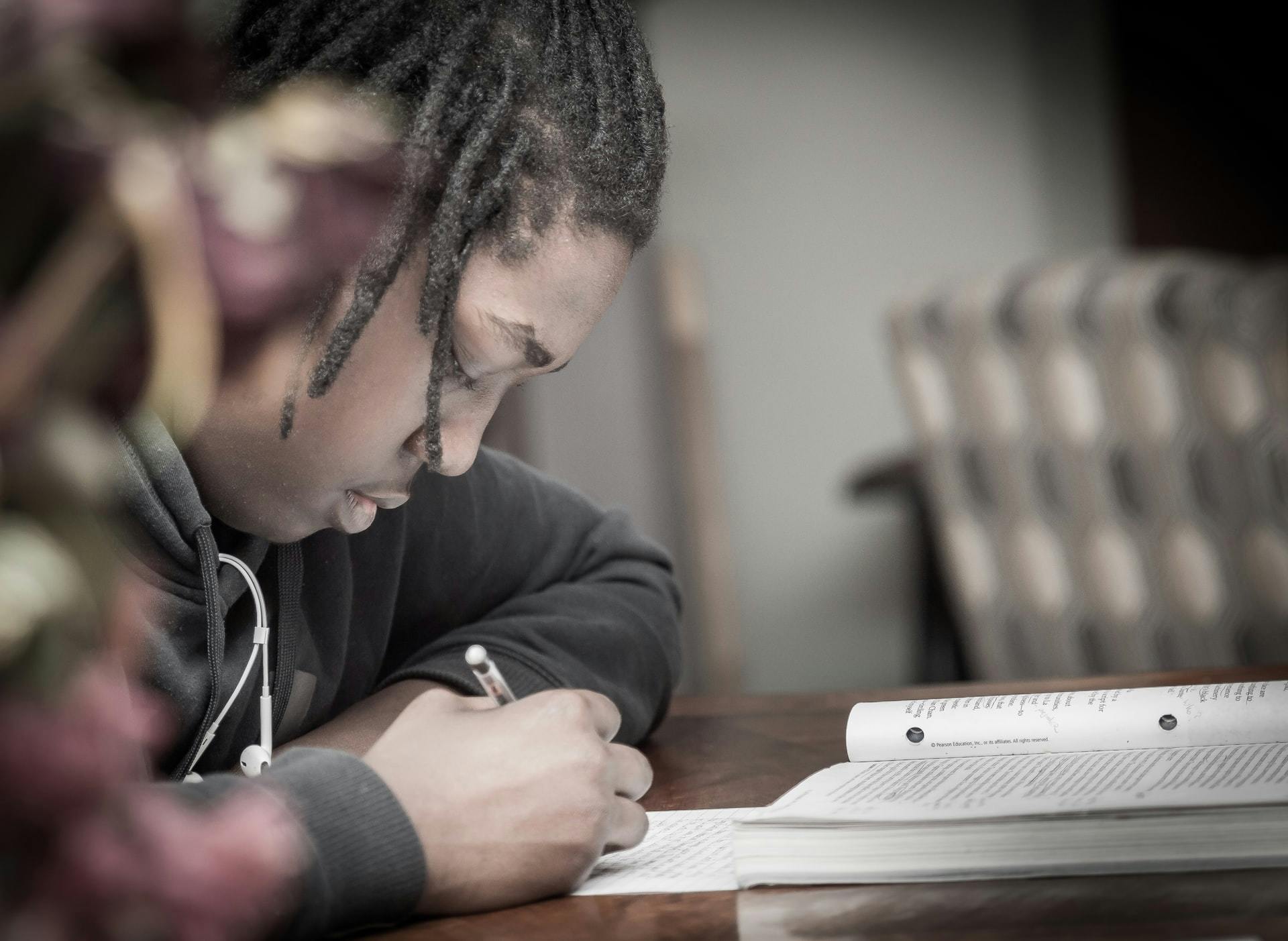
Writing isn’t all fairy tales and short stories — it’s also an important part of learning in middle school, high school and college. Use these academic writing activities to help students understand proper essay structure, grammar and more.
10. Story chains
Great for: Grades 4 to 8
Stories are better when they’re enjoyed with friends and classmates. And story chains encourage every student to get involved!
Put students in small groups of three to six. Give each student a blank piece of paper and have them write the beginning of a story. Then, pass it to the next student in the group so they can write what happens next.
For extra educational value, have students work together to summarize a story from your lesson or an important historical event.
11. Persuasive essays
Sometimes writing is about more than just telling a story. It’s about convincing your readers of your point of view.
Have older students practice their debate skills with persuasive essays. Start with a prompt, then let students make their case. Some of our favorite prompts for this writing assignment include:
- Is it more important to be right or to not hurt someone else’s feelings?
- What important historical figure do you think belongs on the ten-dollar bill and why?
- Do you think you’re born with your personality traits, or do you gain them as you grow up?
Most importantly, make sure students back up their opinions with solid facts and arguments that convince readers to care.
12. Solve a real-world problem
Great for: Grade 6 and up
Climate change, litter, bullying, bad cafeteria food — no matter what students pick, there are lots of real-world problems for them to solve.
Challenge students with a writing assignment that addresses a problem they see in their world. How would they fix it? Whether it’s a short paragraph or a longer essay, encourage them to find something they’re passionate about. After all, that’s where good writing comes from!
13. Vocabulary challenge
Great for: Elementary school students
Vocabulary challenges combine vocabulary strategies with student writing to make your next language arts lesson plan even more engaging.
Give students a new word (or two or three). Once you’re done practicing it and they know what it means, challenge them to use it in a story as creatively as possible.
14. Teach citations
Great for: Grades 1 to 12
Footnotes, endnotes and bibliographies are the least exciting part of writing, but they’re essential skills. As students write more complex research papers, they need to know how to give credit where credit is due. Thankfully, there are lots of online resources to help!
The Purdue Online Writing Lab offers teachers and students resources for all stages of the writing process, including citations. To practice, students can write an annotated bibliography as part of a project-based learning assignment or the first step in writing a longer research paper.

Writing isn’t just something happening in the classroom. These at-home writing ideas can help you support your child as they experiment with prose and poetry.
15. Write letters to a pen pal
Great for: Grades 3 and up
Everyone likes getting mail! Got a friend with kids in a different part of the country, or far-away family members? A pen pal can be a great way for kids to build friendships and practice their writing skills at the same time.
16. Bring a home object to life
“It’s as big as a mountain!”
“That’s the fluffiest thing I’ve ever felt!”
The ways kids describe things can crack us up sometimes. Full of wonder and hyperbole, it’s the perfect spark for creative writing, too.
Encourage kids to practice their figurative language skills with a description of something in your home. Let them pack as much alliteration and exaggeration into the description as they can, then do a dramatic reading out loud.
17. Write reading reactions
If you want to boost reading comprehension and writing skills at the same time, this is the perfect activity. After your child is done reading, encourage them to write a few sentences about what they just read.
Did they like it? What do they think happens next? Which character was their favorite and why? Learning how to express opinions in writing is a valuable skill.
18. Document family stories
Great for: Grades 4 and up
Every family has a unique story, including yours. Make memories with your child when you share stories about important family events or your childhood.
Kids can even interview grandparents, aunts and uncles to record their memories. When you’re done, store them in a shared space so everyone can go back and reminisce.

Writing is a muscle, and you have to flex it every day to get stronger. Use these daily writing activities to make writing part of your everyday routine.
19. Journaling
Great for: Everyone
Sometimes, you’ve just gotta write it out.
Whether you’re trying to make sense of life or just need a place to organize your thoughts, journaling is a great way to unwind, practice mindfulness and build social emotional skills .
All kids need to get started is a notebook and a pen. Let them know you’re not going to read it, but they’re welcome to come to you if there’s something they want to talk about.
20. Blog about your interests
Great for: High school and up
Everyone’s passionate about something. Whatever your students love, encourage them to share it with the world! Blogging is an accessible and fun way to express themselves, nerd out about the things that bring them joy and share their opinions with the world.
Sites like WordPress and Wix offer free website builders to help students get started. This is a great way for kids to build computer skills and digital literacy .
21. Free writing
Write, write, write and don’t stop. That’s the premise behind free writing, a writing practice that can help unlock creativity, discover new ideas and take the pressure out of a blank page.
Give students a five-minute timer and challenge them to write continuously, without worrying about formatting, spelling or grammar. They can write about whatever they want, but there’s only one rule: don’t stop.
22. Answer daily writing prompts
Make time to exercise your brain with daily writing prompts! At the start of the day or as a quick brain break , set aside time for students to respond to a quick daily writing prompt.
Students should have a dedicated journal or binder to make it a seamless part of your lessons. Whether or not you choose to read their writing is up to you, but it’s important to build good daily habits.

A blank page can be a scary sight for a student who doesn’t know what to write about.
Use writing prompts to:
- Kickstart a student’s imagination
- Start your lesson with a fun writing activity
- Give students a topic to debate in writing
Some of our favorite simple writing prompts include:
- Write a story about a wooden door, a can of soda and a blue shoe.
- If you met a monster looking for new friends, what would you do?
- What’s your favorite season? What makes it the best?
- If you could live anywhere in the world, where would it be and why?
- Describe your dream birthday cake.
- Write a story about being cold without using the word “cold.”
- If you could decorate your bedroom any way you wanted, what would it look like?
- Is it better to have lots of friends or just a few really good friends?
- Write a story in 10 words or less.
- Write a story about the best surprise you’ve ever received.
For more writing prompts you can use in and out of the classroom, check out our full list of 225 writing prompts for kids .
Writing activities can bring reluctant writers out of their shells
Writing is hard and can be intimidating for a lot of students.
But even the quietest and most reluctant students have lots of stories to tell! You just have to encourage them to get their words out.
Writing activities help remove some of the pressure and give students:
- A fun way to approach writing
- A starting point for their stories
- Chances to share their writing with students
No two stories are the same, just like your students. Every story can start in a different way, and that’s the beauty of writing prompts.
Whether it’s writing activities or math problems, there are lots of ways to get reluctant learners excited about your lessons with educational activities.
Here are some of our favorites:
- 37 Quick & Easy Brain Breaks for Kids
- 30 Virtual School Activities Students & Educators Love
- 27 Best Educational Games for Kids to Play Sorted by Subject
- 15 Geometry Activities to Engage Students Across Grade Levels
- 36 Fun Word Games for Kids To Help with Vocabulary & Literacy
- 15 Fun, Free & Effective Multiplication Games For Your Classroom
- 20 Exciting Math Games for Kids to Skyrocket New Math Skills On-The-Go
- 21 Classroom Games to Boost Teacher Effectiveness and Student Learning
- 25 Social Emotional Learning Activities & How They Promote Student Well-Being
Which ones can you use in your next lesson?
Prodigy English is a brand-new game-based learning platform helping students build key math skills. As students explore and build a world of their very own, they’ll answer curriculum-aligned reading and language questions that help build essential skills and encourage a love of learning.
Sign up for your free teacher account and get access to teacher tools that help you differentiate learning and track student progress as they play.
Share this article
Table of Contents
Prodigy English is here! Get your students playing — and learning — today.
10 Great Creative Writing Activities To Try Today
What are the best creative writing activities worth your time? And how can these activities help you become a better writer? Good creative writing activities should help you write faster and enjoy the process more. It shouldn’t take too long to try or require any fancy tools or software.
For years, I struggled with writer’s block, until I began experimenting with various fun creative writing activities.
Now in this article, I offer several creative writing activities that will help solve a problem like writer’s block or write a better story for your readers.
1. Use Writing Prompts
2. keep a daily journal, 3. try free writing, 4. research your subject , 5. write without interruption, 6. collaborate with someone else, 7. let your writing sit, 8. get feedback on your writing, 9. change the point of view or tense, 10. read your writing aloud, bonus creative writing activities: reward yourself, how do you make creative writing activities fun, what are creative writing activities.
If you want to write, consider keeping a record of books you want to read or quotes that inspire you. I also recommend building a personal library of writing prompts.
A writing prompt is simply a question, statement or single sentence that serves as a springboard into your creative work. You can buy books of creative writing prompts or alternatively, you can record your own.
If you opt for the latter approach, I recommend using the first line from books you love. They’re kind of like templates upon which you can jump off into the unknown.
You may also want to try brainstorming a list of creative writing prompts to use for your short story, essay or book chapter.
Lots of writers also keep journals where they record daily observations about their lives or work. Essentially, these journals are where writers gather their ingredients for their next work.
You can’t cook a stew with just water, just like you can’t write without having something to say.
Many cooks keep clippings from their favourite chefs and recipe books. They use these as inspiration for meals to cook.
You can do so on your phone or in a paper notebook (I like the over-priced Moleskine notebooks ). A notepad and paper by your bedside is a good idea for when inspiration strikes at 4am. Alternatively, apps like Day One make it easier to journal on a mobile phone.
The habit of daily observations is a good practice for any writer . I recommend it to anyone who wants to improve their writing skills as it encourages you to sit down and write consistently.
Even if these observations sound silly in hindsight, you may be surprised by what turns up.
Free writing describes the act of writing about whatever is on your mind for a predetermined period. While free writing, your job is to get words down on the page without stopping to self-edit or censor yourself.
This type of exploratory creative writing is useful for solving problems like writer’s block. It can also help reluctant writers increase their daily word-count. Free writing makes for a great story starter too.
You can free write on your writing app of choice, on a piece of paper, in the notes app on your phone.
If you’d like to learn more about free writing, check out the excellent book Writing Down the Bones: Freeing the Writer Within by Natalie Goldberg.
If you write nonfiction, start with a clear brief of what you want to say and how you’re going to say it.
For example:
Journalists receive a brief for a story from their editor (i.e. here’s today’s news agenda) or a source (i.e. “I have information for you about…”).
They also also spend time compiling lists of possible interviewees and deciding on questions to ask, just as a chef shops around for the finest ingredients.
Academics and educators decide for themselves what they want their work to taste like, albeit with the help of a tutor. They also spend time reading academic papers in their area of study and conducting qualitative and quantitative research.
Bloggers sign up to various blogs, using a feed reader to aggregate content and by keeping up to date on industry trends.
Having a clear brief for an article or book helps with critical thinking.
Lots of writers have various routines they follow before writing. Some people like to cook while enjoying a glass of wine. (I like to write and drink coffee).
Other writers describe how they disable their internet access when they want to get some serious work done.
If you are an academic , preparation may involve taking key findings from your research papers and applying it to your area of study.
This stage also usually involves completing a literature review prior to engaging in the act of essay writing.
If you are a journalist , this exercise involves interviews with sources and newsworthy figures. It also involves collating relevant news articles and findings.
And if you are a blogger , focus on one theme or topic and research what search volume around this topic using a keyword analysis tool.
Sure, having a quiet place to write is important, but sometimes it’s helpful to work with another writer or an editor on your piece. Alternatively, perhaps you can borrow ethically from work you admire.
A good sentence, like a stew, isn’t going to write itself. Some pieces of work are light and easy to prepare. Other meaty pieces of work take longer to cook.
An academic will write several drafts of their paper or chapter, all the while assessing how it compares with current literature and weighing it against their central thesis.
A journalist will type out transcripts of their interviews, and consult with their editor or colleagues. They will search for a newsworthy angle and may even draw conclusions, depending on the tone of their piece.
A blogger will look for relevant posts by other bloggers to link. They will also frame the topic in such a way that it appeals to what readers are searching for. She or he will also consider supporting multimedia content.
If you’ve finished writing a story, article or book chapter, let it sit on your computer or in your drawer for a while. Your subconscious will continue working on the idea while you do something else.
Cooks recommend leaving a stew simmering for several hours before serving. Similarly, a piece of writing is best left to marinate in a drawer (be that physical or digital).
This way, when you look at your work after a break, the words won’t be as hot, and you’ll be able to see if you need to season the piece with more facts or spice it up with some colour (i.e. unusual adverbs, similes and metaphors).
For an academic , this could involve letting a chapter rest for a few days and then making some quick edits before submitting to tutor for feedback.
A journalist , may have less time for their stew to prepare and will normally consult with their editor or sub-editor to finalise their piece.
A blogger has more leeway here, as they are normally their own bosses. They can take this time to season posts with relevant links, pictures, meta descriptions, ALT tags and a call to action.
The act of writing is more about turning up than it is about divine moments of inspiration. A lot of the time writing feels like drudgery, but there’s a pleasure in watching your sentences slowly improve.
Writers learn faster if they get feedback from other writers, knowledgable readers or editors.
A good stew is best eaten in company. Lots of writers have this idea that they should write for themselves. Instead, it’s far better to share what you’ve created with friends, family and the wider public.
This essentially involves publishing your work. A blogger will upload their post onto their platform of choice and support it with social media comments. An academic will submit to an identified journal and a journalist will publish a story in a newspaper.
Writing in a public forum carries a degree of vulnerability, but it’s a great way develop a consistent, recognisable voice. It also opens the writer up to criticism.
An editor or tutor will provide this anyway (it’s their job), but if you are writing for yourself, consider asking a friend or subscribers to your blog for feedback.
Some criticism may be constructive and some of it won’t help at all. Your fiercest critics could become your biggest enablers for better writing.
And there’s always an argument for killing those sentences that give you the most pleasure.
In writing, you must kill all your darlings.” ― William Faulkner
I learnt this exercise while enrolled in a creative writing workshop years ago in the Irish Writer’s Centre in Dublin.
If you have time to spare, consider rewriting a troublesome piece from the point of view of a different character. Alternatively, switch it from the past tense to the present tense.
Like many reluctant writers, at first I was sceptical when I heard about this creative writing exercise.
But for some odd reason, I was surprised to discover it worked.
These days, I find it easier and faster to write in the present tense, and whenever I’m blocked on an article or story, I rewrite it in that tense.
Perhaps the act of reviewing a piece of work and quickly editing it helps. The writing process is sometimes odd like that.
It’s sometimes fun and instructive to read an extract from your piece aloud for others to listen to and critique. This creative writing activity works well in classrooms and in small groups.
The act of reading it aloud will help you listen for sentences to edit and rewrite.
The person facilitating the workshop or class should also offer the following writing instructions:
- Everyone should say one thing they liked and disliked about the piece.
- The writer can only comment at the end
- Everyone must read a piece aloud
Why all the rules?
Well, you can’t control how readers react when they consume your published pieces in the privacy of their own homes.
If everyone read a piece aloud, the process will feel fair.
Writing is hard work. If you’ve accomplished a writing goal, reward yourself. Journalists tend to get paid for this, but some academics and most bloggers don’t.
A reward could be a short break to watch a favourite TV programme or a walk in the park.
You could eat out after trying a creative writing activity successfully.
Just like dining in a fancy restaurant can give you ideas about what you’d like to cook next, reading other peoples’ works (especially outside your preferred genre) is food for inspiration.
If the work is more involved, it could be a guilt-free purchase or even a holiday. These writing breaks are important because they refresh the writer’s appetite.
Creative Writing Activities: FAQ
An enjoyable creative writing activity is usually easily to apply and doesn’t require a lot of time or fancy tools. It’s fun if the writer in question can approach the activity without fear of failure or judgment.
There are many to choose from but popular examples include journaling, free writing, using writing prompts, exploratory writing and writing to a tight deadline or low word-count.
🎉 Our next novel writing master class starts in – ! Claim your spot →
WEEKLY WRITING PROMPTS
Join (probably?) the world's largest writing contest. Flex those creative muscles with weekly writing prompts.
Showing 2234 prompts
Magical objects with tracy gold, show how an object’s meaning can change as a character changes..
LIVE – Dramatic
Write a story about an ordinary object that becomes magical (either literally or figuratively).
Center your story around a character who is obsessed with an object..
LIVE – Character
Send your characters on an unforgettable quest to find an essential object.
LIVE – Adventure
Write a story about an object that changed everything for a character.

Introducing Prompted , a new magazine written by you!
🏆 Featuring 12 prize-winning stories from our community. Download it now for FREE .
Center your story around a character’s attempt to escape a bad situation that inadvertently leads them back to the source of their problems.
Start a story with someone receiving a message from their past self, warning them of the consequences of their actions., a character’s life of deceit unravels as their past catches up with their present. what are the consequences, write a story about someone seeking forgiveness for their past actions., your character gets everything they ever wanted — only to realize the true cost., subscribe to our prompts newsletter.
Never miss a prompt! Get curated writing inspiration delivered to your inbox each week.
Your character wants something very badly — will they get it?
Write a story set against the backdrop of a storm., there’s been an accident — what happens next, your character overhears something that changes their path., write a story with two characters who meet for the first time — and one of them has a secret., write about someone who summons the creative muse through a convoluted ritual or method., your protagonist has the perfect day scheduled — but things don’t go according to plan., write from the pov of a character in a story who keeps getting re-written by their second-guessing author., your protagonist discovers that everything they type comes true. what happens next, start your story with someone who wants to give up on their career right before their big break., win $250 in our short story competition 🏆.
We'll send you 5 prompts each week. Respond with your short story and you could win $250!
Contest #269 LIVE
Enter our weekly contest.
This week's theme: Magical Objects with Tracy Gold
Prize money
Contest entries, closes at 23:59 - sep 27, 2024 est, recent contests ✍️.
#268 – Reap What You Sow
#267 – Overcoming Obstacles with Writers Ink
#266 – The Write Stuff
#265 – Bon Voyage with Aja Pollock
Recent winners 🏆
Fi Riley – read
Derrick M Domican – read
Victor David – read
Lonnie Russo – read
Leaderboard 🥇
#1 Zilla Babbitt
32413 points
#2 Deidra Whitt Lovegren
28776 points
#3 Abigail Airuedomwinya
22433 points
#4 Graham Kinross
14788 points
#5 Scout Tahoe
13200 points
#6 Chris Campbell
11783 points
#7 Thom With An H
10724 points
#8 Rayhan Hidayat
10221 points
#9 Michał Przywara
9974 points
#10 Story Time
9817 points

Bring your short stories to life
Fuse character, story, and conflict with tools in Reedsy Studio. 100% free.
Creative Writing Prompts
When the idea to start a weekly newsletter with writing inspiration first came to us, we decided that we wanted to do more than provide people with topics to write about. We wanted to try and help authors form a regular writing habit and also give them a place to proudly display their work. So we started the weekly Creative Writing Prompts newsletter. Since then, Prompts has grown to a community of more than 450,000 authors, complete with its own literary magazine, Prompted .
Here's how our contest works: every Friday, we send out a newsletter containing five creative writing prompts. Each week, the story ideas center around a different theme. Authors then have one week — until the following Friday — to submit a short story based on one of our prompts. A winner is picked each week to win $250 and is highlighted on our Reedsy Prompts page.
Interested in participating in our short story contest? Sign up here for more information! Or you can check out our full Terms of Use and our FAQ page .
Why we love creative writing prompts
If you've ever sat in front of a computer or notebook and felt the urge to start creating worlds, characters, and storylines — all the while finding yourself unable to do so — then you've met the author's age-old foe: writer's block. There's nothing more frustrating than finding the time but not the words to be creative. Enter our directory! If you're ready to kick writer's block to the curb and finally get started on your short story or novel, these unique story ideas might just be your ticket.
This list of 1800+ creative writing prompts has been created by the Reedsy team to help you develop a rock-solid writing routine. As all aspiring authors know, this is the #1 challenge — and solution! — for reaching your literary goals. Feel free to filter through different genres, which include...
Dramatic — If you want to make people laugh and cry within the same story, this might be your genre.
Funny — Whether satire or slapstick, this is an opportunity to write with your funny bone.
Romance — One of the most popular commercial genres out there. Check out these story ideas out if you love writing about love.
Fantasy — The beauty of this genre is that the possibilities are as endless as your imagination.
Dystopian – Explore the shadowy side of human nature and contemporary technology in dark speculative fiction.
Mystery — From whodunnits to cozy mysteries, it's time to bring out your inner detective.
Thriller and Suspense — There's nothing like a page-turner that elicits a gasp of surprise at the end.
High School — Encourage teens to let their imaginations run free.
Want to submit your own story ideas to help inspire fellow writers? Send them to us here.
After you find the perfect story idea
Finding inspiration is just one piece of the puzzle. Next, you need to refine your craft skills — and then display them to the world. We've worked hard to create resources that help you do just that! Check them out:
- How to Write a Short Story That Gets Published — a free, ten-day course by Laura Mae Isaacman, a full-time editor who runs a book editing company in Brooklyn.
- Best Literary Magazines of 2023 — a directory of 100+ reputable magazines that accept unsolicited submissions.
- Writing Contests in 2023 — the finest contests of 2021 for fiction and non-fiction authors of short stories, poetry, essays, and more.
Beyond creative writing prompts: how to build a writing routine
While writing prompts are a great tactic to spark your creative sessions, a writer generally needs a couple more tools in their toolbelt when it comes to developing a rock-solid writing routine . To that end, here are a few more additional tips for incorporating your craft into your everyday life.
- NNWT. Or, as book coach Kevin Johns calls it , “Non-Negotiable Writing Time.” This time should be scheduled into your routine, whether that’s once a day or once a week. Treat it as a serious commitment, and don’t schedule anything else during your NNWT unless it’s absolutely necessary.
- Set word count goals. And make them realistic! Don’t start out with lofty goals you’re unlikely to achieve. Give some thought to how many words you think you can write a week, and start there. If you find you’re hitting your weekly or daily goals easily, keep upping the stakes as your craft time becomes more ingrained in your routine.
- Talk to friends and family about the project you’re working on. Doing so means that those close to you are likely to check in about the status of your piece — which in turn keeps you more accountable.
Arm yourself against writer’s block. Writer’s block will inevitably come, no matter how much story ideas initially inspire you. So it’s best to be prepared with tips and tricks you can use to keep yourself on track before the block hits. You can find 20 solid tips here — including how to establish a relationship with your inner critic and apps that can help you defeat procrastination or lack of motivation.
NEW VIDEO COURSE 🎉
How to Write a Novel
Join Tom Bromley for a writing master class and finish your first draft in 3 months . Learn more →
Explore more writing prompt ideas:
Adults Writing Prompts ⭢
Adventure Writing Prompts ⭢
Angst Writing Prompts ⭢
Character Writing Prompts ⭢
Christmas Writing Prompts ⭢
Dark Writing Prompts ⭢
Dialogue Writing Prompts ⭢
Dramatic Writing Prompts ⭢
Dystopian Writing Prompts ⭢
Fall Writing Prompts ⭢
Fantasy Writing Prompts ⭢
Fiction Writing Prompts ⭢
Fluff Writing Prompts ⭢
Funny Writing Prompts ⭢
Halloween Writing Prompts ⭢
High School Writing Prompts ⭢
Historical Fiction Writing Prompts ⭢
Holiday Writing Prompts ⭢
Horror Writing Prompts ⭢
Kids Writing Prompts ⭢
Middle School Writing Prompts ⭢
Mystery Writing Prompts ⭢
Narrative Writing Prompts ⭢
Nonfiction Writing Prompts ⭢
Novel Writing Prompts ⭢
Poetry Writing Prompts ⭢
Romance Writing Prompts ⭢
Sad Writing Prompts ⭢
Science Fiction Writing Prompts ⭢
Short Story Writing Prompts ⭢
Spring Writing Prompts ⭢
Summer Writing Prompts ⭢
Teens Writing Prompts ⭢
Thanksgiving Writing Prompts ⭢
Thriller and Suspense Writing Prompts ⭢
Valentine's Day Writing Prompts ⭢
Vampire Writing Prompts ⭢
Winter Writing Prompts ⭢
Oops, you need an account for that!
Log in with your social account:
Or enter your email:

20 Creative Writing Activities for Elementary Students
By andy minshew.
- November 23, 2021
Did you know that November is National Novel Writing Month? While your young learners are probably not ready to write an entire book, this month is a great time to practice creative writing skills with your students. Not only can creative writing be helpful for teaching vocabulary and sentence structure, but it can also encourage students to use imaginative thinkin g —and even find a genuine love of writing!
All of these 20 creative writing activities can be used with elementary school students to practice reading and writing skills. We’ve included options for both early elementary students, who may still be learning to write, and elementary students in upper grades who are ready to work on projects of their choosing.

1. Join the NaNoWriMo organization’s Young Writers Program (YWP) ! Together, your students can work on all sorts of age-appropriate writing challenges and activities throughout the year—including a project of their choice in November!
2. To practice pre-writing skills and collaborating on a project, try these shared writing project activities .
3. If you have any budding cartoonists in your class, this Finish the Comic activity from author Jarrett Lerner can be a great way for younger students to practice writing dialogue.
4. Teach your students about adjectives and writing descriptions with this Popcorn Adjectives activity .
5. Students can learn about creative writing by studying imagery and poetry by established authors. Using this writing worksheet , kids can write out their thoughts about a poem and draw images that stand out to them.
6. To teach creative thinking skills with kindergarteners and early elementary students, try this Mystery Seed writing activity .
7. Get families involved, too! Share these fun home writing activities with your student’s families to help them practice at home.
8. Print out and put together a Writing Jar with tons of creative writing prompts to inspire your students.
9. Check out this resource for even more writing prompts focused on imaginative thinking.

10. Try blackout poetry , an activity that encourages students to make their own beautiful art from a work that already exists.
11. Creative writing isn’t limited to fiction. This narrative writing activity can teach students to write events clearly and in sequence from their real life.
12. For a creative writing project that’s just plain fun, try this Roll a Story activity.
13. This nonfiction project helps children learn to write a letter as they write to a loved one of their choice.
14. If you want to give your students some freedom in choosing a writing assignment, hang up this Writing Prompt Choice Board in your classroom and let them answer whichever prompt they’d like!
15. Encourage students to keep their own journal throughout the year. You could even give them time each morning to respond to a journal prompt .
16. Use this journal page template to help students structure and compile journal entries.
17. These printable Mad Libs can teach children different parts of a sentence while they use their imaginations to create a story.
18. Use this What? So What? Now What? exercise (#6 at the link) to help students structure their creative writing projects.
19. To teach children how to create descriptive sentences, play this Show, Don’t Tell writing activity .
20. If you’d like to hold a month-long creative writing activity, try this 30-Day Writing Challenge for kids .
More education articles

Don’t Prevent Summer Slide—Build Student Strengths Instead

MacKenzie Scott’s Yield Giving Awards Waterford.org a $10 Million Grant
- Reading Academy

10 fun writing activities for the reluctant writer
10 FUN WRITING ACTIVITIES FOR THE RELUCTANT WRITER
No doubt about it – writing isn’t easy. It is no wonder that many of our students could be described as ‘reluctant writers’ at best. It has been estimated by the National Association of Educational Progress that only about 27% of 8th and 12th-grade students can write proficiently.
As educators, we know that regular practice would go a long way to helping our students correct this underachievement, and sometimes, writing prompts just aren’t enough to light the fire.
But how do we get students, who have long since been turned off writing, to put pen to paper and log the requisite time to develop their writing chops?
The answer is to make writing fun! In this article, we will look at some creative writing activities where we can inject a little enjoyment into the writing game.

25 Fun Daily Writing Tasks
Quick Write and JOURNAL Activities for ALL TEXT TYPES in DIGITAL & PDF PRINT to engage RELUCTANT WRITERS .
⭐⭐⭐⭐⭐ ( 18 reviews )
1. Poetry Scavenger Hunt
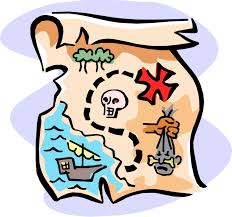
The Purpose: This activity encourages students to see the poetry in the everyday language around them while helpfully reinforcing their understanding of some of the conventions of the genre.
The Process: Encourage students to ‘scavenge’ their school, home, and outside the community for snippets of language they can compile into a piece of poetry or a poetic collage. They may copy down or photograph words, phrases, and sentences from signs, magazines, leaflets or even snippets of conversations they overhear while out and about.
Examples of language they collect may range from the Keep Out sign on private property to the destination on the front of a local bus.
Once students have gathered their language together, they can work to build a poem out of the scraps, usually choosing a central theme to give the piece cohesion. They can even include corresponding artwork to enhance the visual appeal of their work, too, if they wish.
The Prize: If poetry serves one purpose, it is to encourage us to look at the world anew with the fresh eyes of a young child. This activity challenges our students to read new meanings into familiar things and put their own spin on the language they encounter in the world around them, reinforcing the student’s grasp on poetic conventions.
2. Story Chains
The Purpose: Writing is often thought of as a solitary pursuit. For this reason alone, it can be seen as a particularly unattractive activity by many of our more gregarious students. This fun activity exercises students’ understanding of writing structures and engages them in fun, creative collaboration.
The Process: Each student starts with a blank paper and pen. The teacher writes a story prompt on the whiteboard. You’ll find some excellent narrative writing prompts here . For example, each student spends two minutes using the writing prompt to kick-start their writing.
When they have completed this part of the task, they will then pass their piece of paper to the student next to them. Students then continue the story from where the previous student left off for a given number of words, paragraphs, or length of time.
If organized correctly, you can ensure students receive their own initial story back at the end for the writing of the story’s conclusion .
The Prize: This fun writing activity can be used effectively to reinforce student understanding of narrative writing structures, but it can also be fun to try with other writing genres.
Working collaboratively motivates students to engage with the task, as no one wants to be the ‘weak link’ in the finished piece. But, more than that, this activity encourages students to see writing as a communicative and creative task where there needn’t be a ‘right’ answer. This encourages students to be more willing to take creative risks in their work.
3. Acrostic Associations
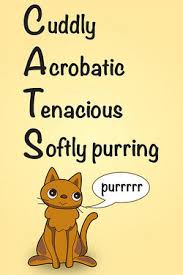
The Purpose: This is another great way to get students to try writing poetry – a genre that many students find the most daunting.
The Process: Acrostics are simple poems whereby each letter of a word or phrase begins a new line in the poem. Younger students can start off with something very simple, like their own name or their favorite pet and write this vertically down the page.
Older students can take a word or phrase related to a topic they have been working on or have a particular interest in and write it down on the page before beginning to write.
The Prize: This activity has much in common with the old psychiatrist’s word association technique. Students should be encouraged to riff on ideas and themes generated by the focus word or phrase. They needn’t worry about rhyme and meter and such here, but the preset letter for each line will give them some structure to their meanderings and require them to impose some discipline on their wordsmithery, albeit in a fun and loose manner.
4. The What If Challenge

The Purpose: This challenge helps encourage students to see the link between posing interesting hypothetical questions and creating an entertaining piece of writing.
The Process: To begin this exercise, have the students come up with a single What If question, which they can then write down on a piece of paper. The more off-the-wall, the better!
For example, ‘What if everyone in the world knew what you were thinking?’ or ‘What if your pet dog could talk?’ Students fold up their questions and drop them into a hat. Each student picks one out of the hat before writing on that question for a suitable set amount of time.
Example What If Questions
- “What if you woke up one day and found out that you had the power to time travel?”
- “What if you were the last person on Earth? How would you spend your time?”
- “What if you were granted three wishes, but each one came with a terrible consequence?”
- “What if you discovered a secret portal to another world? Where would you go, and what would you do?”
- “What if you woke up one day with the ability to communicate with animals? How would your life change?”
The Prize: Students are most likely to face the terror of the dreaded Writer’s Block when they are faced with open-ended creative writing tasks.
This activity encourages the students to see the usefulness of posing hypothetical What If questions, even random off-the-wall ones, for kick-starting their writing motors.
Though students begin by answering the questions set for them by others, please encourage them to see how they can set these questions for themselves the next time they suffer from a stalled writing engine.
5. The Most Disgusting Sandwich in the World

The Purpose: Up until now, we have looked at activities encouraging our students to have fun with genres such as fiction and poetry. These genres being imaginative in nature, more easily lend themselves to being enjoyable than some of the nonfiction genres.
But what about descriptive writing activities? In this activity, we endeavor to bring that same level of enjoyment to instruction writing while also cleverly reinforcing the criteria of this genre.
The Process: Undoubtedly, when teaching instruction writing, you will at some point cover the specific criteria of the genre with your students.
These will include things like the use of a title, numbered or bulleted points, time connectives, imperatives, diagrams with captions etc. You will then want the students to produce their own piece of instruction writing or procedural text to display their understanding of how the genre works.
But, why not try a fun topic such as How to Make the Most Disgusting Sandwich in the World rather than more obvious (and drier!) topics such as How to Tie Your Shoelaces or How to Make a Paper Airplane when choosing a topic for your students to practice their instruction writing chops?
Example of a Most Disgusting Sandwich Text
The Prize: As mentioned, with nonfiction genres, in particular, we tend to suggest more banal topics for our students to work on while internalizing the genre’s criteria. Enjoyment and acquiring practical writing skills need not be mutually exclusive.
Our students can just as quickly, if not more easily, absorb and internalize the necessary writing conventions while engaged in writing about whimsical and even nonsensical topics.
if your sandwich is entering the realm of horror, be sure to check our complete guide to writing a scary story here as well.
Daily Quick Writes For All Text Types

Our FUN DAILY QUICK WRITE TASKS will teach your students the fundamentals of CREATIVE WRITING across all text types. Packed with 52 ENGAGING ACTIVITIES
6. Diary Entry of a Future Self

The Purpose: This activity allows students to practice personal writing within diary/journal writing conventions. It also challenges them to consider what their world will be like in the future, perhaps stepping a foot into the realm of science fiction.
The Process: Straightforwardly, after working through some examples of diary or journal writing, and reviewing the various criteria of the genre, challenge the students to write an entry at a given milestone in the future.
This may be when they leave school, begin work, go to university, get married, have kids, retire, etc. You may even wish to get the students to write an entry for a series of future milestones as part of a more extended project.
Example of Message to Future Me Text
The Prize: Students will get a chance here to exercise their understanding of this type of writing , but more than that, they will also get an opportunity to exercise their imaginative muscles too. They will get to consider what shape their future world will take in this engaging thought experiment that will allow them to improve their writing too.
7. Comic Strip Script
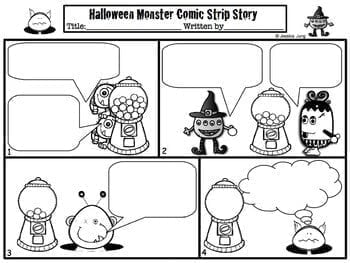
The Purpose: Give your students the chance to improve their dialogue writing skills and work on their understanding of character development in this fun activity which combines writing with a series of visual elements.
The Process: There are two ways to do this activity. The first requires you to source or create a comic strip without the dialogue the characters are speaking. This may be as straightforward as using whiteout to erase the words in speech bubbles and making copies for your students to complete.
Alternatively, provide the students with photographs/pictures and strips of cards to form their action sequences . When students have their ‘mute’ strips, they can begin to write the dialogue/script to link the panels together.
The Prize: When it comes to writing, comic strips are probably one of the easier sells to reluctant students! This activity also allows students to write for speech. This will stand to them later when they come to produce sections of dialogue in their narrative writing or when producing play or film scripts.
They will also develop their visual literacy skills as they scan the pictures for clues of tone and context before they begin their writing.
Keep It Fun
Just as we should encourage our students to read for fun and wider educational benefits, we should also work to instil similar attitudes towards writing. To do this means we must work to avoid always framing writing in the context of a chore, that bitter pill that must be swallowed for the good of our health.
There is no getting away from the fact that writing can, at times, be laborious. It is time-consuming and, for most of us, difficult at the best of times. There is a certain, inescapable amount of work involved in becoming a competent writer.
That said, as we have seen in the activities above, with a bit of creative thought, we can inject fun into even the most practical of writing activities . All that is required is a dash of imagination and a sprinkling of effort.
8. Character Interviews
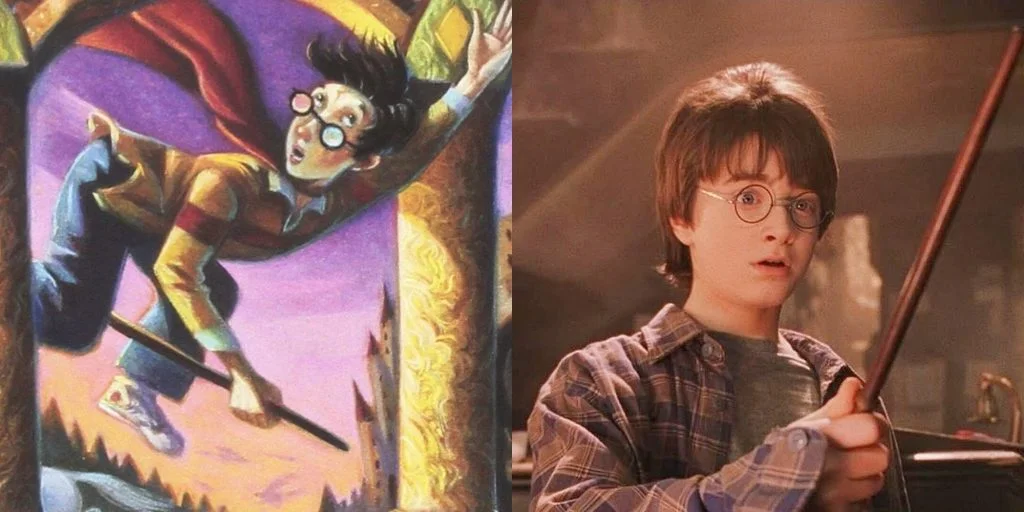
The Purpose: Character interviews as writing activities are excellent for students because they encourage creative thinking, character development, and empathy. The purpose of this activity is to help students delve deeper into the minds of the characters they are creating in their stories or reading about in literature. By conducting interviews with these characters, students gain a better understanding of their personalities, motivations, and perspectives.
The Process of character interviews involves students imagining themselves as interviewers and their characters as interviewees. They can either write out the questions and answers in a script-like format or write a narrative where the character responds to the questions in their own voice.
The Prize: Through character interviews, students learn several valuable skills:
- Character Development: By exploring various aspects of their characters’ lives, backgrounds, and experiences, students can develop more well-rounded and authentic characters in their stories. This helps make their fictional creations more relatable and engaging to readers.
- Empathy and Perspective: Conducting interviews requires students to put themselves in their characters’ shoes, considering their thoughts, emotions, and struggles. This cultivates empathy and a deeper understanding of human behavior, which can be applied to real-life situations as well.
- Voice and Dialogue: In crafting the character’s responses, students practice writing authentic dialogue and giving their characters unique voices. This skill is valuable for creating dynamic and believable interactions between characters in their stories.
- Creative Expression: Character interviews provide a creative outlet for students to let their imaginations run wild. They can explore scenarios that may not appear in the main story and discover new aspects of their characters they might not have considered before.
- Critical Thinking: Formulating questions for the interview requires students to think critically about their characters’ personalities and backgrounds. This exercise enhances their analytical skills and storytelling abilities.
Overall, character interviews are a dynamic and enjoyable way for students to delve deeper into the worlds they create or the literature they read. It nurtures creativity, empathy, and writing skills, empowering students to become more proficient and imaginative writers.
9. The Travel Journal

The Purpose: Travel journal writing tasks are excellent for students as they offer a unique and immersive way to foster creativity, cultural awareness, and descriptive writing skills. The purpose of this activity is to allow students to embark on a fictional or real travel adventure, exploring new places, cultures, and experiences through the eyes of a traveller.
The process of a travel journal writing task involves students assuming the role of a traveler and writing about their journey in a journal format. They can describe the sights, sounds, tastes, and emotions they encounter during their travels. This activity encourages students to use vivid language, sensory details, and expressive writing to bring their travel experiences to life.
The Prize: Through travel journal writing tasks, students will learn several valuable skills:
- Descriptive Writing: By describing their surroundings and experiences in detail, students enhance their descriptive writing skills, creating engaging and vivid narratives.
- Cultural Awareness: Travel journals encourage students to explore different cultures, customs, and traditions. This helps broaden their understanding and appreciation of diversity.
- Empathy and Perspective: Through writing from the perspective of a traveler, students develop empathy and gain insight into the lives of people from different backgrounds.
- Research Skills: For fictional travel journals, students might research specific locations or historical periods to make their narratives more authentic and accurate.
- Reflection and Self-Expression: Travel journals offer a space for students to reflect on their own emotions, thoughts, and personal growth as they encounter new experiences.
- Creativity and Imagination: For fictional travel adventures, students get to unleash their creativity and imagination, envisioning fantastical places and scenarios.
- Language and Vocabulary: Travel journal writing tasks allow students to expand their vocabulary and experiment with expressive language.
Overall, travel journal writing tasks inspire students to become more observant, empathetic, and skilled writers. They transport them to new worlds and foster a sense of wonder and curiosity about the world around them. Whether writing about real or imaginary journeys, students develop a deeper connection to the places they encounter, making this activity both educational and enjoyable.
10. The Fairy Tale Remix

The Purpose: A fairy tale remix writing activity is a fantastic creative exercise for students as it allows them to put a unique spin on classic fairy tales, fostering imagination, critical thinking, and storytelling skills. This activity encourages students to think outside the box, reinterpret well-known tales, and explore their creative potential by transforming traditional narratives into something entirely new and exciting.
The process of a fairy tale remix writing activity involves students selecting a familiar fairy tale and altering key elements such as characters, settings, plot twists, or outcomes. They can modernize the story, change the genre, or even mix different fairy tales together to create a wholly original piece.
The Prize: Through this activity, students will learn several valuable skills:
- Creative Thinking: Students exercise their creativity by brainstorming unique concepts and ideas to remix the fairy tales, encouraging them to think imaginatively.
- Critical Analysis: Analyzing the original fairy tale to identify essential elements to keep and areas to remix helps students develop critical thinking skills and understand storytelling structures.
- Writing Techniques: Crafting a remix requires students to use descriptive language, engaging dialogue, and well-developed characters, helping them hone their writing techniques.
- Perspective and Empathy: Remixing fairy tales allows students to explore different character perspectives, promoting empathy and understanding of diverse points of view.
- Genre Exploration: Remixing fairy tales can introduce students to various genres like science fiction, fantasy, or mystery, expanding their literary horizons.
- Originality: Creating their own narrative twists and unexpected plots encourages students to take ownership of their writing and develop a unique voice.
- Storytelling: Students learn the art of compelling storytelling as they weave together familiar elements with innovative ideas, captivating their readers.
By remixing fairy tales, students embark on a creative journey that empowers them to reimagine well-loved stories while honing their writing skills and imaginative prowess. It’s an engaging and enjoyable way for students to connect with literature, explore new possibilities, and showcase their storytelling talents.
Top 5 Tips for Teaching Engaging Creative Writing Lessons
Teaching creative writing can be a thrilling discovery journey for students and educators alike. To foster a love for storytelling and unleash the imaginative prowess of your students, here are five engaging tips for your creative writing lessons:
1. Embrace Playfulness : Encourage a spirit of playfulness and experimentation in your classroom. Encourage students to explore unconventional ideas, characters, and settings. Use fun writing prompts like “What if animals could talk?” or “Imagine a world where gravity is reversed.”
2. Incorporate Visual Stimuli : Visual aids can be powerful creative catalysts. Show intriguing images or short videos to spark students’ imaginations. Ask them to describe what they see, then guide them to weave stories around these visuals. This approach can lead to unexpected and captivating narratives.
3. Encourage Peer Collaboration : Foster community and collaboration among your students. Organize group writing activities where students can brainstorm, share ideas, and build upon each other’s stories. This not only enhances creativity but also promotes teamwork and communication skills.
4. Explore Different Genres : Introduce students to various writing genres—fantasy and science fiction to mystery and historical fiction. Let them experiment with different styles and find what resonates most with their interests. Exposing students to diverse genres can broaden their horizons and inspire fresh ideas.
5. Celebrate Individuality : Encourage students to infuse unique experiences and perspectives into their writing. Provide opportunities for them to write about topics that are meaningful to them. Celebrate their voices and help them discover the power of their narratives.
Remember, the key to teaching creative writing is to create a supportive and inspiring environment where students feel empowered to take risks and explore the limitless possibilities of storytelling. By embracing these tips, you can transform your classroom into a vibrant imagination and literary exploration hub. Happy writing!
MORE FUN WRITING ACTIVITIES FOR YOU

7 Fun Writing Sub Plans for Substitute Teachers

25 Fun Christmas Writing Tasks for Students
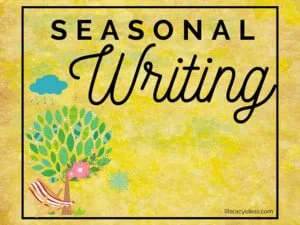
5 Fun Seasonal Writing Activities Students and Teachers Love

10 Fun Classroom Writing Games to Improve Literacy Skills

The Writing Process

7 Evergreen Writing Activities for Elementary Students
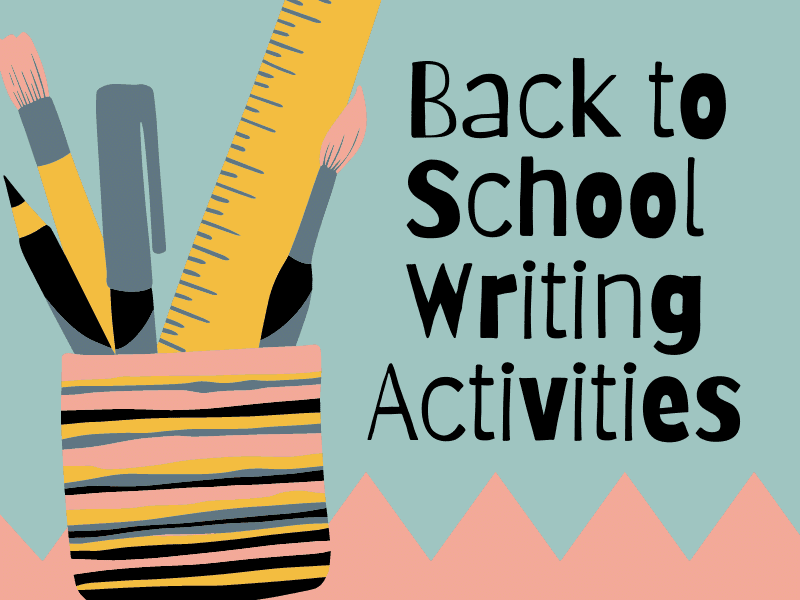
17 Fun First Day Of School Writing Activities
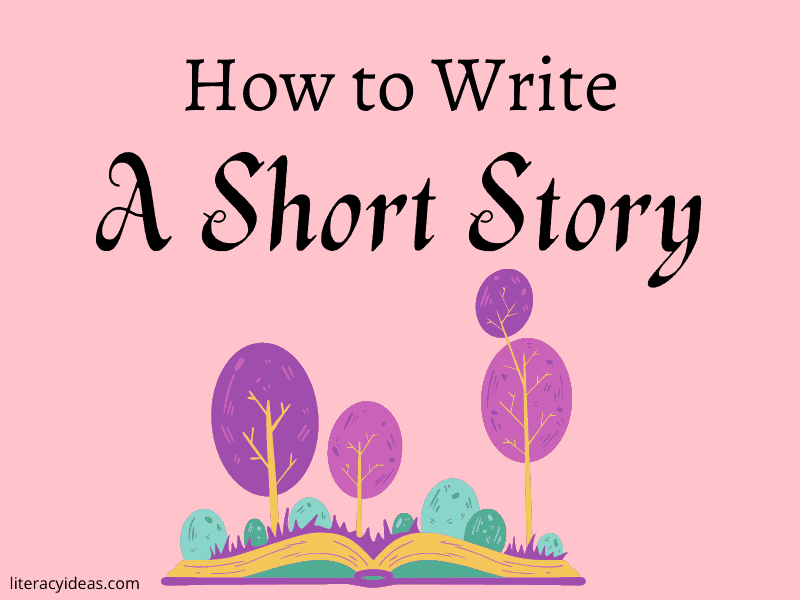
Short Story Writing for Students and Teachers
Jump to navigation
- Inside Writing
- Teacher's Guides
- Student Models
- Writing Topics
- Minilessons
- Shopping Cart
- Inside Grammar
- Grammar Adventures
- CCSS Correlations
- Infographics
Get a free Grammar Adventure! Choose a single Adventure and add coupon code ADVENTURE during checkout. (All-Adventure licenses aren’t included.)
Sign up or login to use the bookmarking feature.
5 Fun Creative Writing Activities
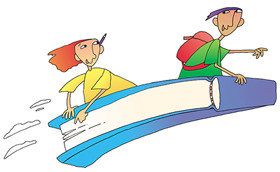
We’ve gathered five fun creative writing activities you can assign to spark a love for writing. Our hope is that these activities will create a workshop-like environment that fosters feedback and collaboration in your writing classroom.
You’ll notice that none of the activities focuses on the technical aspects of writing. Instead, the activities encourage creativity, reflection, and self-expression—hallmarks of meaningful writing.
Minilesson 1: InstaMemory
- Imagine a favorite memory as a cellphone picture.
- Finish this sentence starter: My memory snapshot shows . . .
- Keep writing until you’ve described your memory snapshot in full. Make sure to include who is in it, what is happening, where it is happening, and when it is happening. Note colors, emotions, facial expressions, and other visual details about the moment.
- Read your memory snapshot. Does your writing create a clear picture?
View Minilesson for Classroom Presentation
Minilesson 2: Back-and-Forth Stories
Writing back-and-forth stories takes a little creativity and a lot of flexibility. How long can you and a partner keep this story going?
An abandoned home sat at the top of the hill. Matt and Brianna knew the rumors about it, but they had to see it for themselves. They tiptoed their way up the steps, and when they reached the door, it swung open. Inside . . .
- Continue the story. Write for two minutes.
- Pass the story to a writing partner.
- The partner continues the story where you left off and writes for two minutes before passing the story back.
- Continue writing and passing the story every two minutes.
- How long can you keep the story going? What happens inside the house?
Minilesson 3: Four-Star Food Review
- List the food items that would make up your ideal fall meal. Include one main dish, one side dish, one dessert, and one drink.
- Describe the looks, smells, and tastes associated with the meal.
- Finish this sentence: My meal reminds me of fall, because . . .
- Use the details you’ve collected to write a review of your meal in one or two paragraphs. Exchange your review with a partner to see how your meals compare.
Minilesson 4: Now how do I get out of this one?
- List ten chores or tasks you hate doing. Cleaning my room is an example of a chore you might not like.
- Select four tasks from your list and write a creative excuse explaining why you can’t or haven’t completed each one. Make your excuses as original and wild as possible.
- When you’ve finished, exchange your work with a classmate. Read and discuss each other’s excuses.
Minilesson 5: Diary of a Famous Figure
- List three famous people or characters you like or admire.
- Imagine you are one of the famous figures from your list.
- As that person, think of what you would do on a summer day.
- Write a diary entry (or blog post) about your special day as the famous person.
- Then write additional entries as you so choose.
Want more creative writing ideas? Check out these creative activities.
Teacher Support:
Click to find out more about this resource.
Standards Correlations:
The State Standards provide a way to evaluate your students' performance.
- 110.5.b.12.A
- LAFS.3.W.1.3
- 110.5.b.11.B.i
- 110.5.b.11.B.ii
- 110.6.b.11.B
- 110.6.b.12.A
- LAFS.4.W.1.3
- 110.6.b.11.B.i
- 110.6.b.11.B.ii
- 110.7.b.12.A
- LAFS.5.W.1.3
- 110.7.b.11.B.i
- 110.7.b.11.B.ii
- 110.22.b.10
- 110.22.b.11.A
- LAFS.6.W.1.3
- 110.22.b.10.A
- 110.22.b.10.B.i
- 110.23.b.10
- 110.23.b.11.A
- LAFS.7.W.1.3
- 110.23.b.10.B.i
- 110.23.b.10.B.ii
- 110.24.b.10
- 110.24.b.11.A
- LAFS.8.W.1.3
- 110.24.b.10.B.i
- 110.24.b.10.B.ii
Related Resources
All resources.
- Drawing a Life Map
- Writing: Now how do I get out of this one?
- Writing a 5 W’s Story
- Writing Back-and-Forth Stories
- Starting Stories: 5 Great Beginning Strategies
- Writing Résumés and Cover Letters
- Practice Test for Reading and Writing Nonfiction
- Writing Narrative Arguments
- Writing Personal Essays
- Inquire Online Middle School Classroom Set
- Write Away Teacher's Guide
- Write for College Teacher's Guide
- Write for College
- Writers Express
ThinkWritten
7 Creative Writing Exercises For Writers
Need a creative lift as a writer? Try these 7 creative writing exercises for writers to boost your writing skills.

We may receive a commission when you make a purchase from one of our links for products and services we recommend. As an Amazon Associate we earn from qualifying purchases. Thank you for support!
Sharing is caring!
Has your creative well run dry? Are you struggling to find inspiration for your next written work? Creative writing exercises could be the answer.
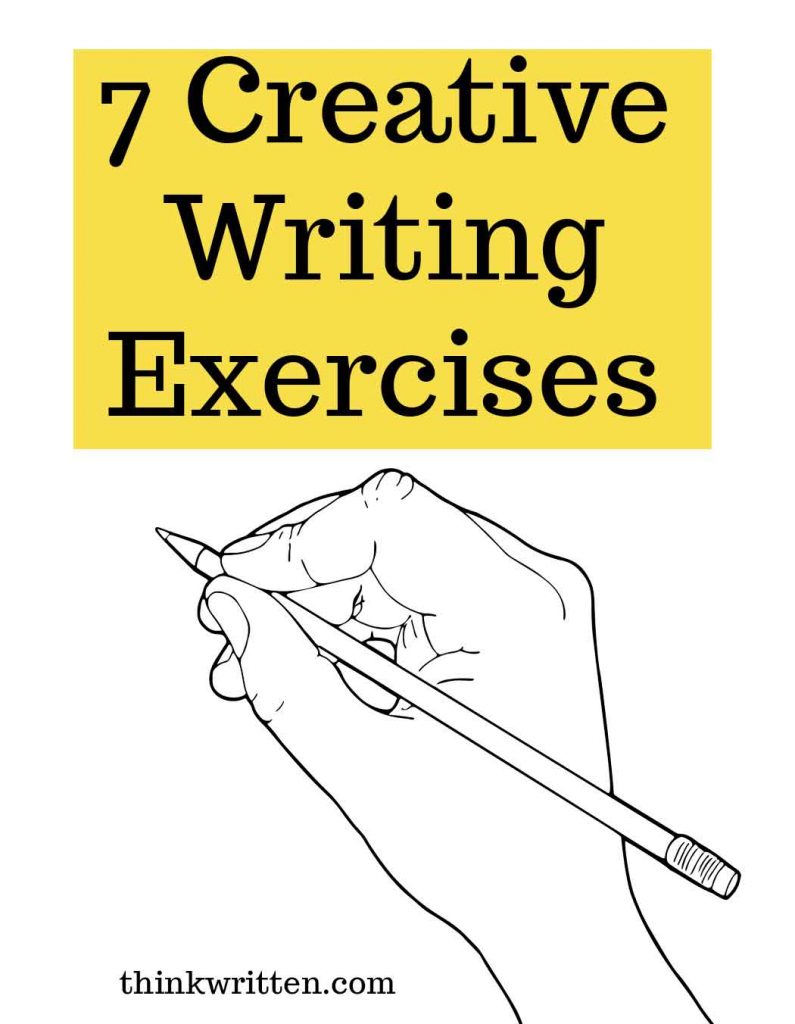
Just like any other skill, the art and craft of writing will benefit from the frequent working and reworking of your practices and habits. Creativity exercises for writers could unlock that writer’s block that you have been struggling to overcome and spur you on to new and exciting creative directions.
What are Creative Writing Exercises?
Creative writing exercises can take on many forms and can mean different things to different people. However, certain elements are common to most examples of creative writing exercises.
They are often produced in short, intense bursts, for one thing, and they are often entirely improvised. Improvisation is one of the earmarks of the creative writing exercises employed by many writers.
One other factor that most creative writing exercises have in common is that they often encourage the exploration and expounding of familiar subject matters in novel ways.
Many classes and guides that focus solely on developing creative writing techniques involve adopting short and spontaneous approaches.
How often should writers practice creative writing exercises?
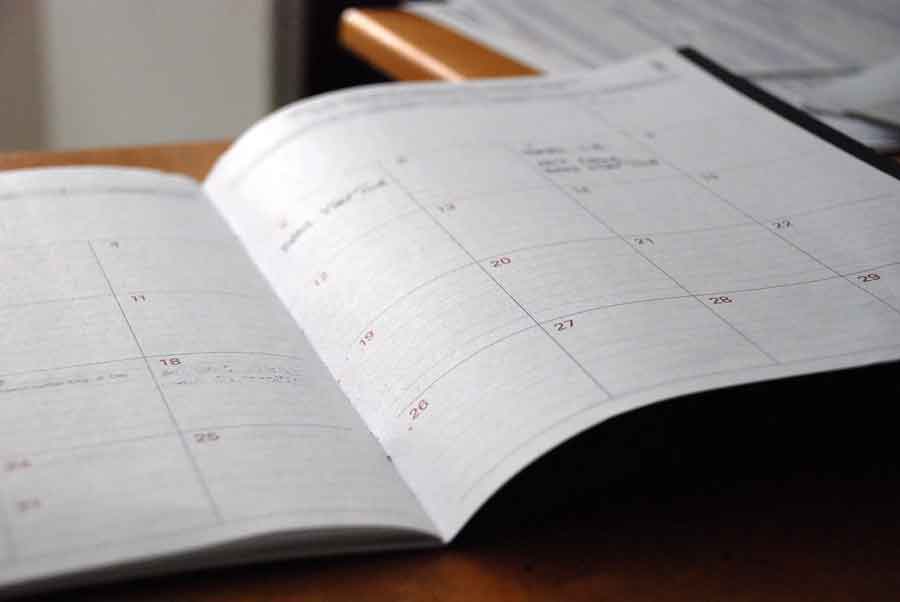
Regardless of what form a creative writing exercise takes, it is smart for writers to adopt these practices and incorporate them into their daily routines. The goal is to expand their writing skills and develop the ability to tell the same story in as many different ways as possible.
Start by writing a few lines once or twice a week, spending only a few minutes each session. Gradually increase the length of each session and how many times you sit down to write per week.
Eventually, you could work up to about ten minutes per session, performing these exercises several times throughout the week.
Here are 7 Creative Writing Exercises for Writers
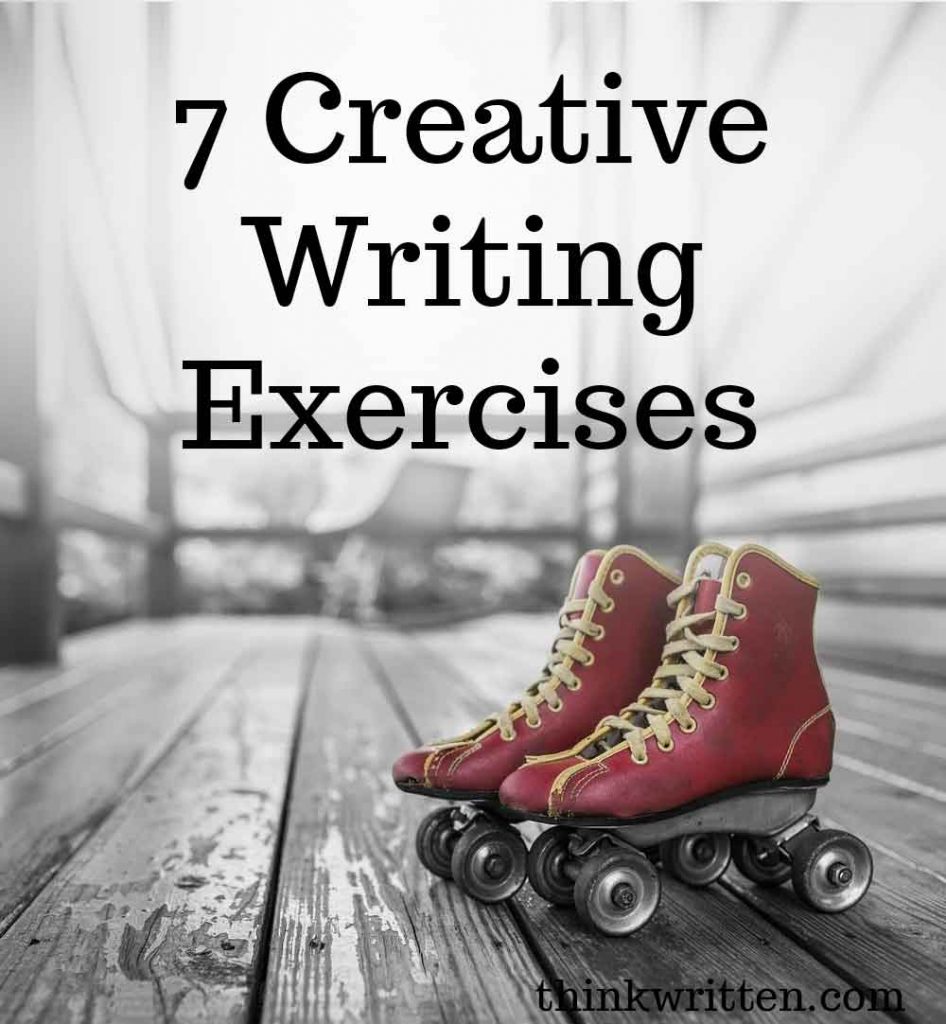
If you feel like taking a break from a writing assignment or are between projects, you can try your hand at these creative writing exercises. They can also serve as inspiration for your next opus or strengthen your creative muscles.
1. Follow your stream of consciousness.

Many writers have become conditioned to feel a great deal of stress or worry about being confronted by a blank page. This exercise will help you address this fear head-on.
Get a piece of paper and start writing the first thing that comes to mind. Don’t even think about what you are writing or edit your thoughts. This type of writing is known as “free writing”. Author Julia Cameron referred to this as the “morning pages” in her award-winning book, The Artist’s Way .
2. Work with different points of view.

If you find yourself struggling with expressing yourself, try switching up your point of view. Take a chapter from your favorite book, or even just a scene if you want to start slow. Write everything that takes place from the point of view of another character. The goal here is to communicate the story in another way.
You could also vary this exercise by writing as if you are the main character by changing their point of view. If the story is written in the first person, try writing it from the third person. Be aware of the details that are omitted when you switch viewpoints. This frequently leads to an interesting new twist to the story.
3. Take advantage of writing prompts.
Writing prompts or story starters can be invaluable writing tools that could encourage you to explore unfamiliar but interesting creative directions. These are sentences or short passages that could serve as springboards for writing spontaneous stories.
We have many writing prompts lists here at ThinkWritten you can use for inspiration, including 365 Creative Writing Prompts , 42 Fantasy Prompts , and 101 Poetry Prompts .
4. Have a Conversation With Yourself
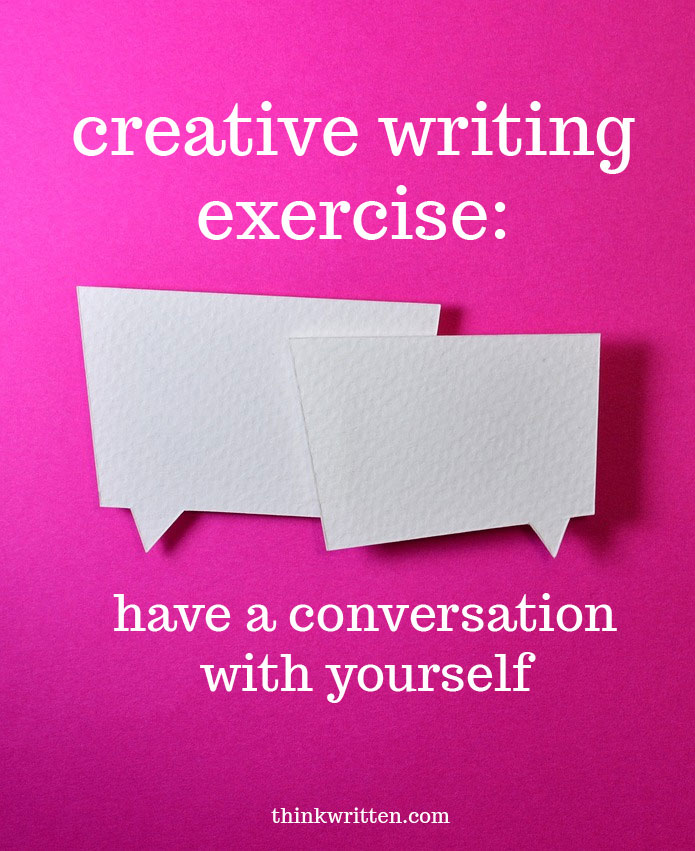
See what it’s like to write a letter or converse with yourself. If you’ve ever wondered what it would be like to have a conversation with your younger self, this is the perfect opportunity to do so.
You can choose any subject you want, from a significant social or political event or some words of wisdom to your younger version. Try to be as honest and as forthcoming as possible. The results might surprise you.
5. Try Writing Flash Fiction

Try to crank out a piece of flash fiction. As with other creative writing exercises, don’t spend too much time at it. Simply sit down in front of the computer or a piece of paper, and begin writing. Flash fiction doesn’t usually go beyond 500 words, so try to keep it short.
Note: It might be helpful to differentiate flash fiction from the freewriting exercise discussed earlier. While freewriting involves generating words and ideas in an unbridled stream of consciousness, flash fiction is more about writing within a set of guidelines. In this particular exercise, try incorporating structural elements such as plots, conflicts, and character development, all in the goal of developing a logical story arc.
6. Practice writing fake ads
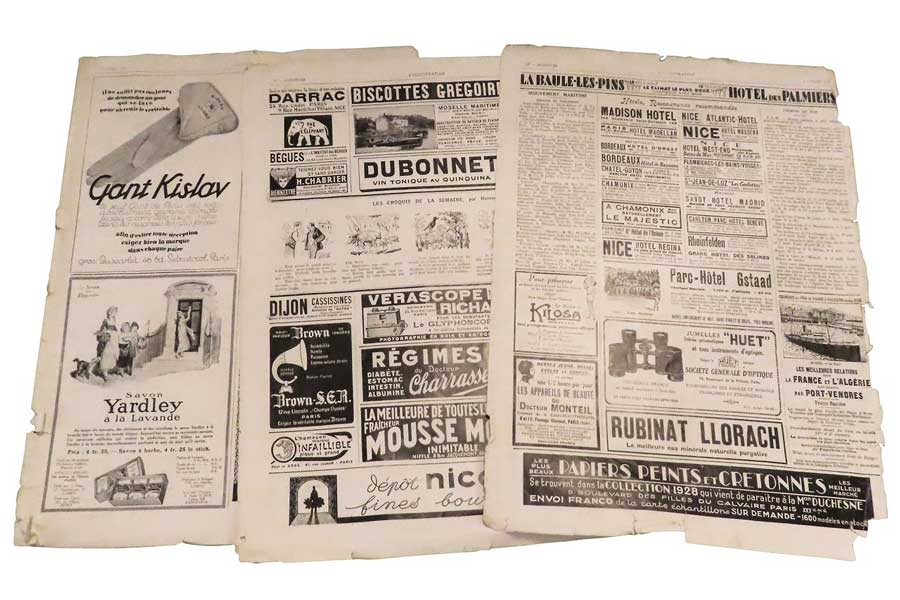
Writing fake advertisements is another potentially useful exercise. Few tasks can flex your creative muscles than trying to sell a product, person, company, or idea. You don’t need a lot to get started either. All you have to do is to select a word at random from a magazine or newspaper and get started writing an ad for it.
It might help to write one ad in a more formal tone, similar to the classified ads published in newspapers. This exercise will train you in using a few words effectively to sell your subject. You can then write another ad in a style similar to that published in online marketplaces, which allow for longer text. In both exercises, try to convince your readers to purchase the product in as definitive terms as possible.
7. Rewrite someone else’s story

Consider adopting a story from someone else and making it your own. Unlike the exercise that involves writing a story from another point of view, this one involves telling the same story from the same viewpoint but using your own words.
It could be any story you want to write about, from something a family member told you about or an urban legend that has long made the rounds of your town.
Whichever story you choose, try to write it as if it happened to you. If certain details are missing–which is often the case with old stories–don’t hold back from adding your own touches. You could even take a well-known story and write it as if you were there when the events took place.
There are only a few of the creativity exercises for writers you can try. There are many more variations that you could use to help you get back into the pattern of writing creatively.
If you ever find yourself stuck and unsure of what your next step should be, consider taking some time off and working on some creative writing exercises instead. After some time, you might find yourself becoming more eager to get back into it and more inspired than ever.
Tell us what you think! Do you enjoy creative writing exercises? Do you have any additional ideas for ways writers can continue to build and work on their writing skills? Share your thoughts in the comments section below!
Eric Pangburn is a freelance writer who shares his best tips with other writers here at ThinkWritten. When not writing, he enjoys coaching basketball and spending time with his family.
Similar Posts

42 Fantasy Writing Prompts & Plot Ideas
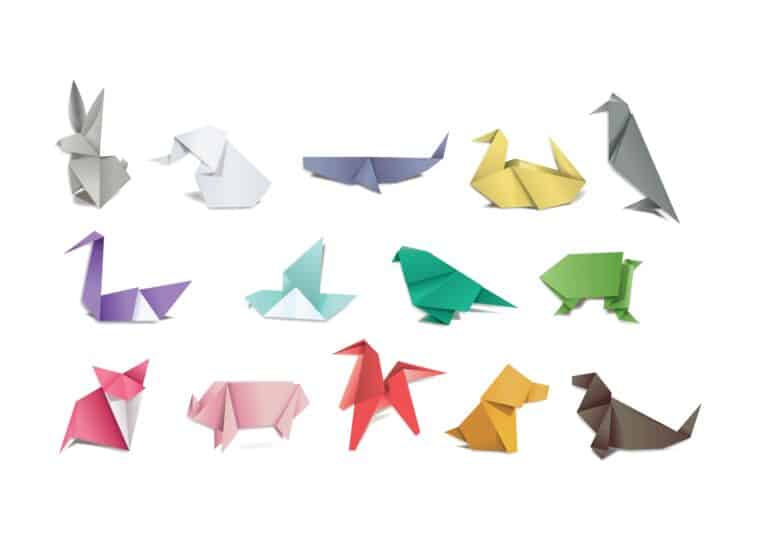
300 Fun Writing Prompts for Kids: Story Starters, Journal Prompts & Ideas
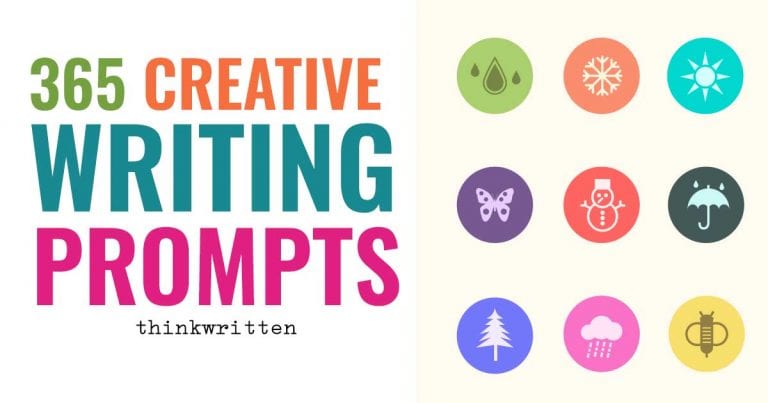
365 Creative Writing Prompts
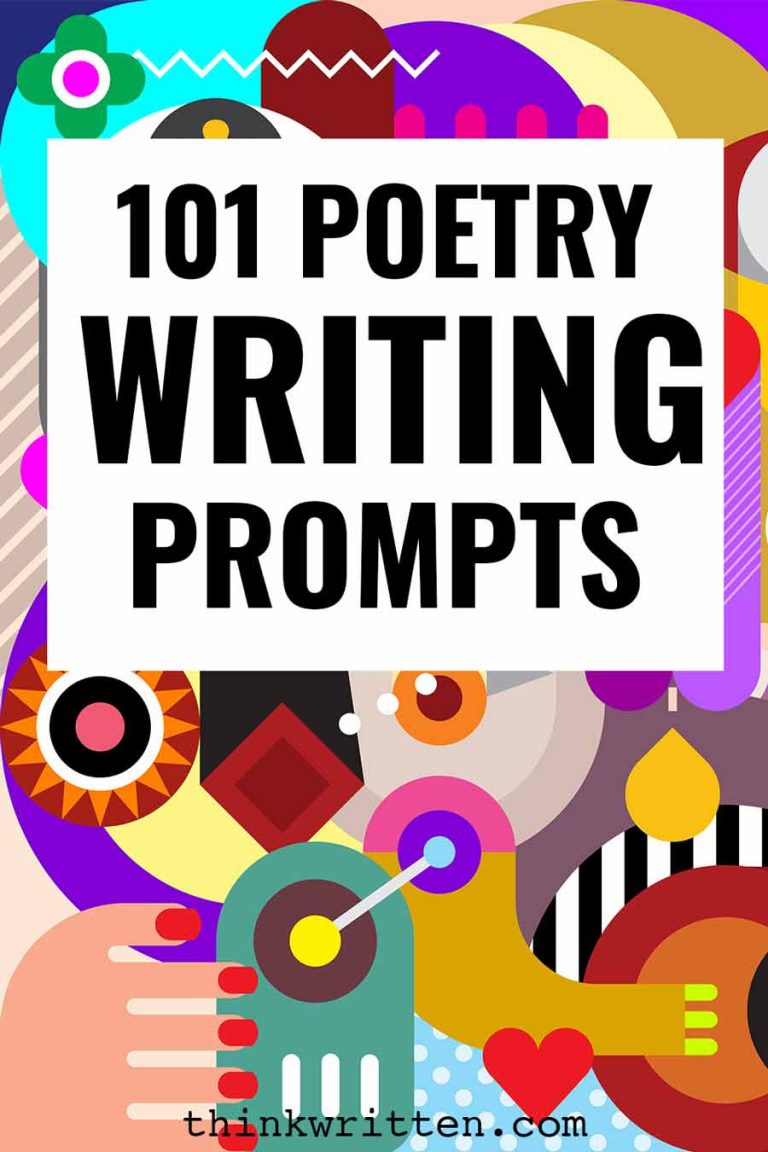
101 Poetry Prompts & Ideas for Writing Poems

108 Romance Writing Prompts & Love Story Ideas

IMAGES
VIDEO
COMMENTS
Creative writing exercises are short writing activities (normally around 10 minutes) designed to get you writing. The goal of these exercises is to give you the motivation to put words onto a blank paper. These words don't need to be logical or meaningful, neither do they need to be grammatically correct or spelt correctly.
A selection of fun creative writing exercises that can be completed solo, or with a group. Some are prompts to help inspire you to come up with story ideas, others focus on learning specific writing skills. Intro. I run a Creative Writing Meetup for adults and teens in Montpellier or online every week. We start with a 5 to 20 minute exercise ...
Below you'll find a massive list of creative writing activities. Some of these activities will keep you writing when you're in need of ideas and inspiration. Others will improve your writing skills and techniques through practice. Some will give you experience with forms and genres you haven't tried. And others will help you promote your ...
And, yes, writing from a prompt is certainly an example of a creative writing activity (a highly effective one). However, writing prompts are only one way to teach creative writing. Other types of activities include games, collaboration with others, sensory activities, and comic strip creation to name a few. Unlike writing assignments, creative ...
Creative writing prompts activities test not only your little ones' imaginations but also their ability to craft a story and dialogue from that. Display an intriguing picture prompt for your class and have a discussion about it, recording their ideas. ... You can snag some foam dice at the dollar store and hot glue questions on each side to ...
20 creative writing prompts from 642 Tiny Things to Write About: 1. Write a eulogy for a sandwich, to be delivered while eating it. 2. Write the ad for an expensive new drug that improves bad posture. Now, list the possible side effects. 3.
The purpose of creative writing exercises is to expand your imagination and to spark new ideas or thoughts, encouraging you to practice writing these before you start on your next project. Themed writing prompts can be helpful here, breaking down your prompts into different buckets like: Food. Animals. Landscapes.
Among both exercises to improve writing skills and fun writing exercises for adults, writing metaphor lists is one of the best writing exercises out there. A metaphor list is simple. On a notebook, create two columns. In one column, write down only concrete nouns. Things like a pillow, a tree, a cat, a cloud, and anything that can be perceived ...
Eight. Pick a fiction book from your shelf. Go to page eight and find the eighth sentence on the page. Start with that sentence and write an eight-line poem that connects in some way to your work-in-progress. For instance, write from the POV of a character, or set the poem in a story setting. Don't worry about poetry forms.
For instance, bench pressing while reciting the emperors in a Chinese dynasty. 26. Write a paragraph where a character does a simple action, like turning on a light switch, and make the reader marvel at how strange and odd it truly is. 27. Have a couple fight while playing a board game.
Puppets and toys are a great way to stimulate imaginative play. In particular, creating your own paper finger puppets is a brilliant creative activity to boost your child's imagination and make story-telling more fun. When creating your own finger puppets, your child can create any character they like.
Whether you're taking a break from a work in progress or are in between writing projects and need some inspiration, regular creative writing exercises help you strengthen your writing process. Incorporate these eight exercises into your writing routine. 1. Let your stream of consciousness run. Start with a blank page. Then just start writing.
Here are 10 of our favorite story telling activities that inspire students: 1. Write an "I am from" poem. Students read the poem "I am From" by George Ella Lyon. Then, they draft a poem about their own identity in the same format Lyon used. Finally, students create a video to publish their poems.
Creative Warm-Up Exercises with Places: Choose a place and make it come alive by describing the sights, smells, and sounds. Think of an object and write a story where that object is the main character. Write down three things you want to include in your writing project and then brainstorm how you can incorporate them.
Whether it's writing activities or math problems, there are lots of ways to get reluctant learners excited about your lessons with educational activities. Here are some of our favorites: 37 Quick & Easy Brain Breaks for Kids; 30 Virtual School Activities Students & Educators Love 27 Best Educational Games for Kids to Play Sorted by Subject
If you're interested in the world of creative writing, we have eight fantastic exercises and activities to get you started. ️🤩 Don't miss on the joy of Creative Writing: here are 8 ways to get started. Click to tweet! 1. Use writing prompts every week. Coming up with ideas for short stories can be challenging, which is why we created a ...
10. Read Your Writing Aloud. It's sometimes fun and instructive to read an extract from your piece aloud for others to listen to and critique. This creative writing activity works well in classrooms and in small groups. The act of reading it aloud will help you listen for sentences to edit and rewrite.
Here's how our contest works: every Friday, we send out a newsletter containing five creative writing prompts. Each week, the story ideas center around a different theme. Authors then have one week — until the following Friday — to submit a short story based on one of our prompts. A winner is picked each week to win $250 and is highlighted ...
This narrative writing activity can teach students to write events clearly and in sequence from their real life. 12. For a creative writing project that's just plain fun, try this Roll a Story activity. 13. This nonfiction project helps children learn to write a letter as they write to a loved one of their choice. 14.
Creative Writing Ideas For Adults. The following are some ready-made ideas and prompts for creative writing and story starters to help get your creative juices flowing: Love is certainly one of the most popular themes in writing. Use these 25 creative writing prompts about love to create your own unique story.
In this article, we will look at some creative writing activities where we can inject a little enjoyment into the writing game. 25 Fun Daily Writing Tasks. $3.00. Quick Write and JOURNAL Activities for ALL TEXT TYPES in DIGITAL & PDF PRINT to engage RELUCTANT WRITERS. ⭐⭐⭐⭐⭐ ( 18 reviews )
Minilesson 1: InstaMemory. Imagine a favorite memory as a cellphone picture. Finish this sentence starter: My memory snapshot shows . . . Keep writing until you've described your memory snapshot in full. Make sure to include who is in it, what is happening, where it is happening, and when it is happening.
5. Try Writing Flash Fiction. Try to crank out a piece of flash fiction. As with other creative writing exercises, don't spend too much time at it. Simply sit down in front of the computer or a piece of paper, and begin writing. Flash fiction doesn't usually go beyond 500 words, so try to keep it short.